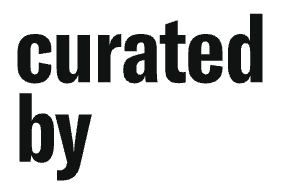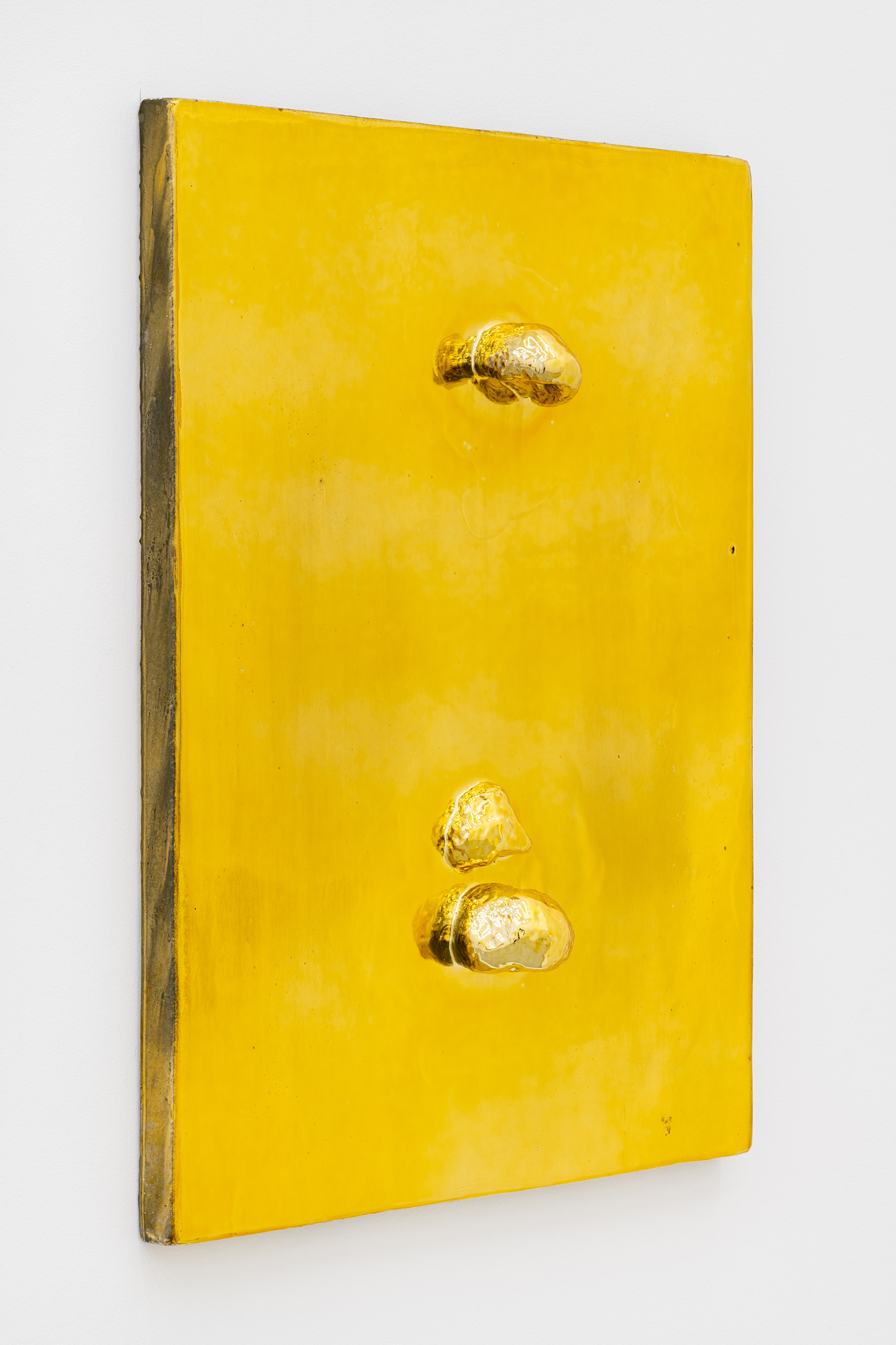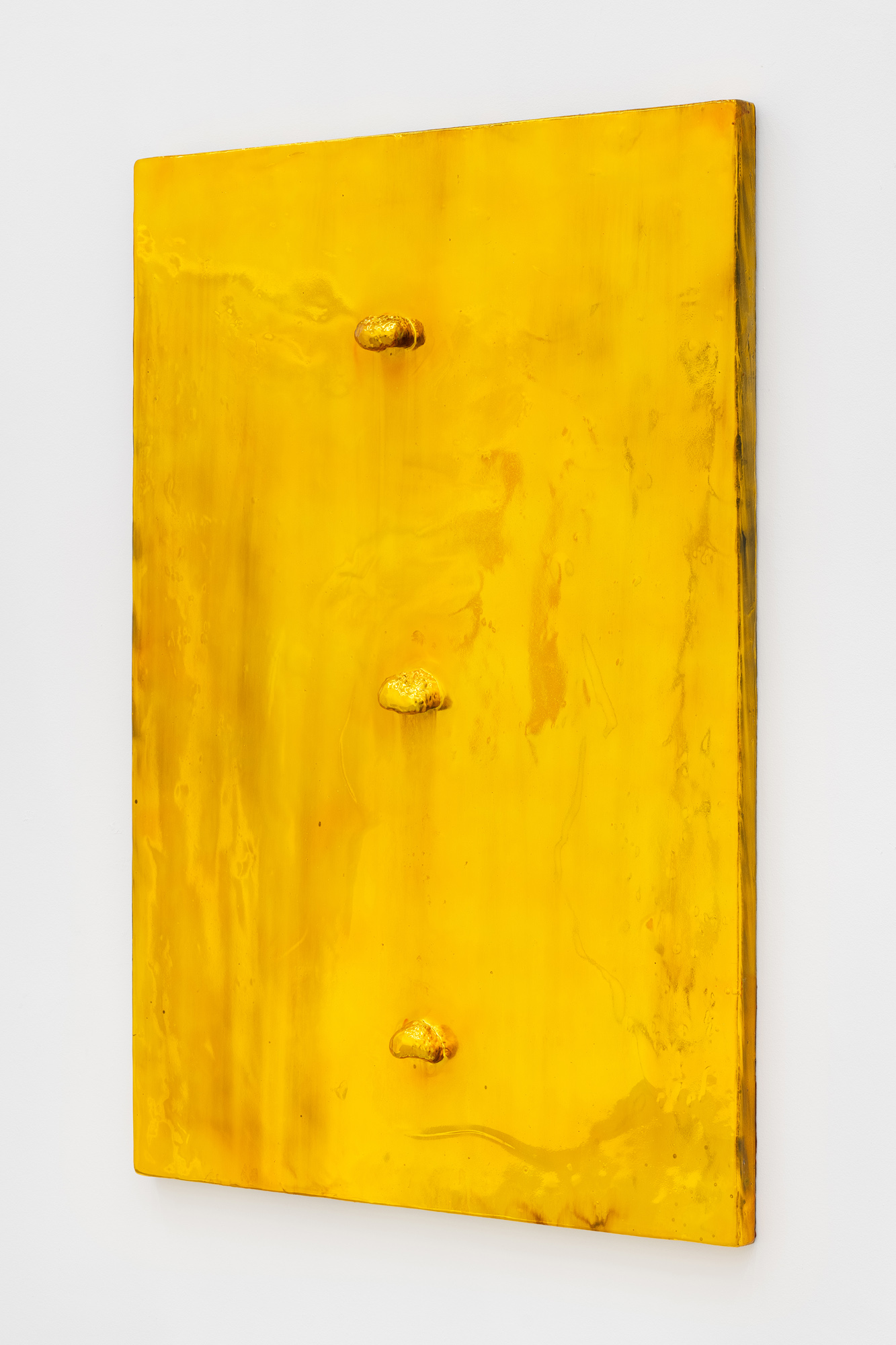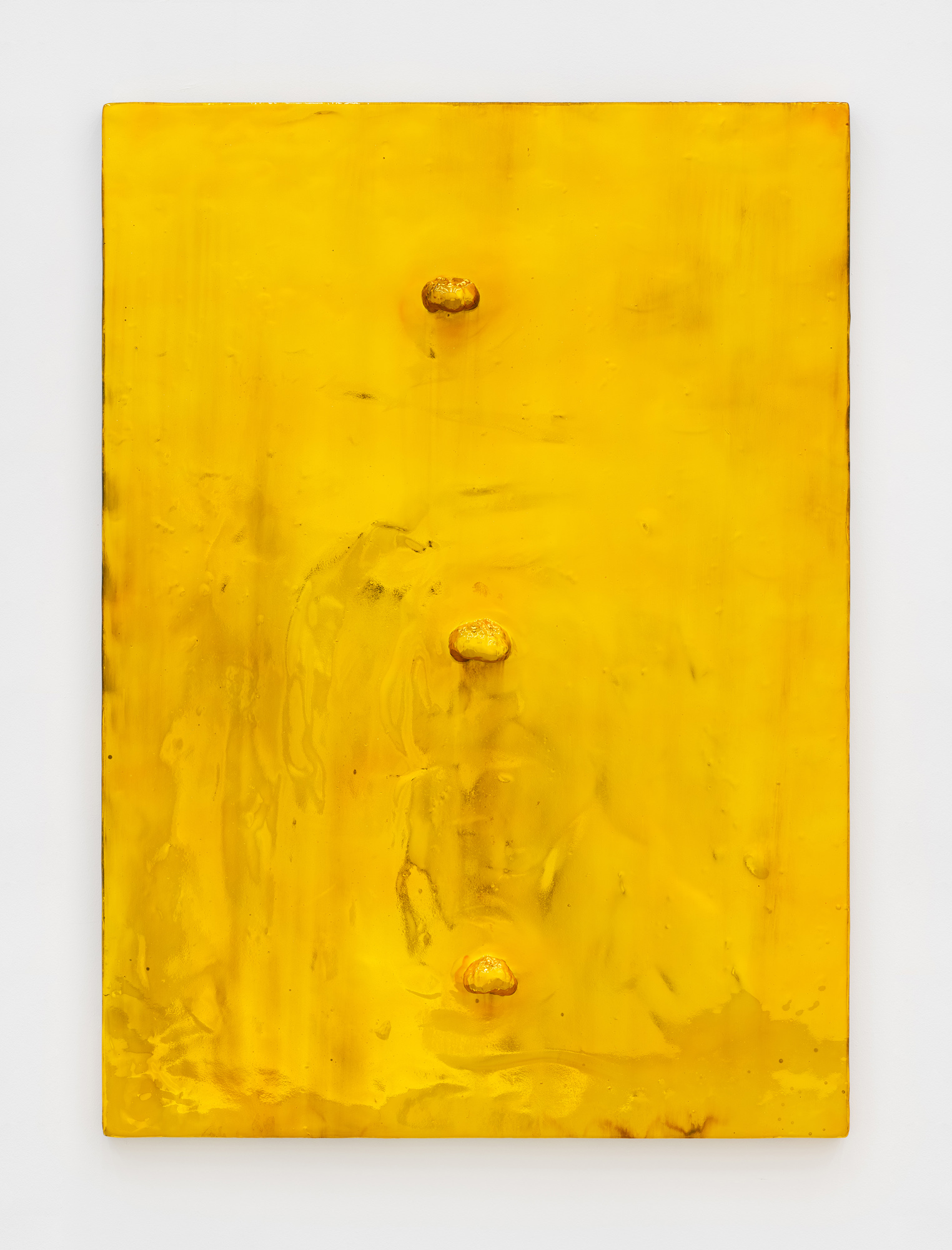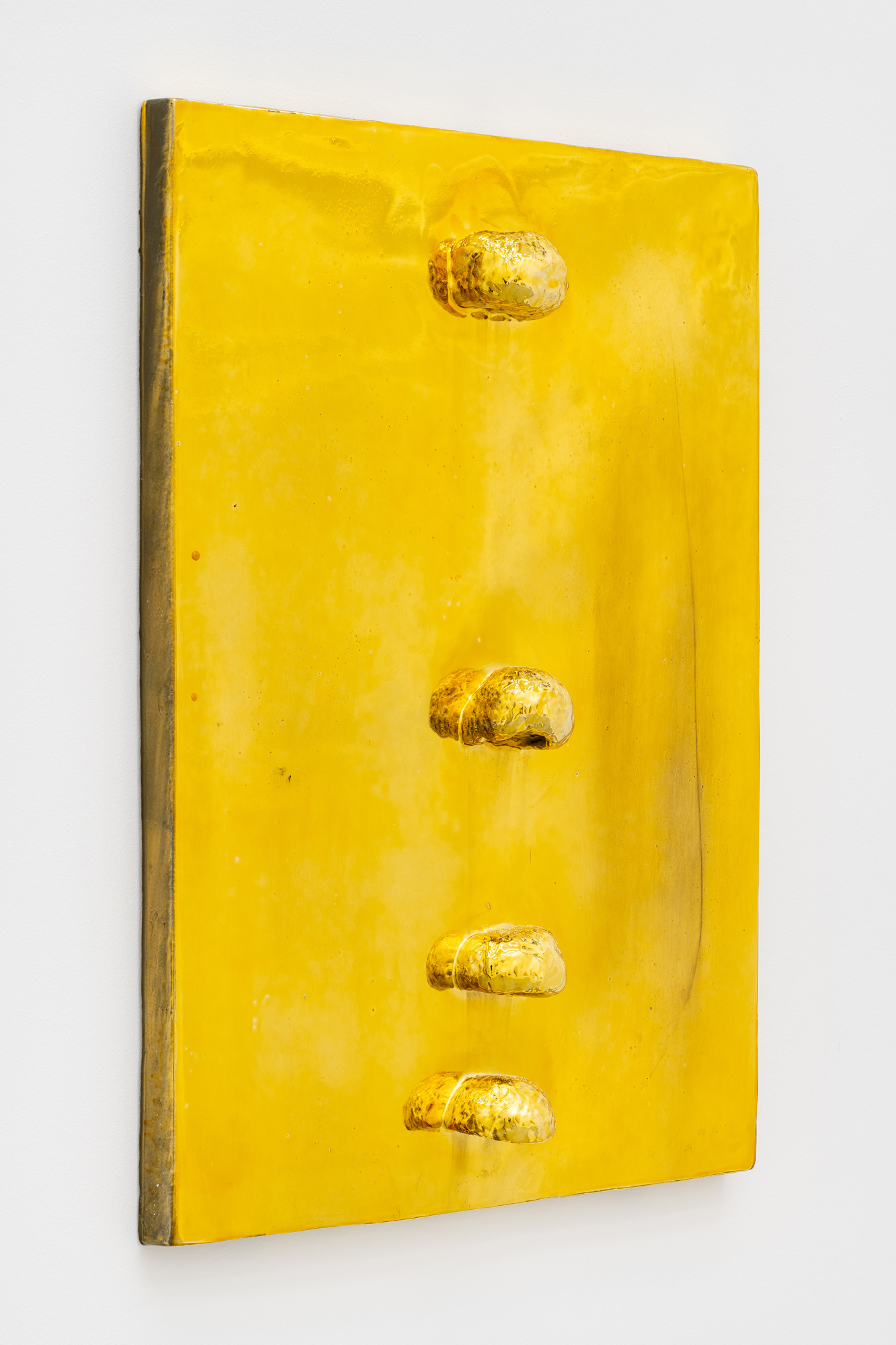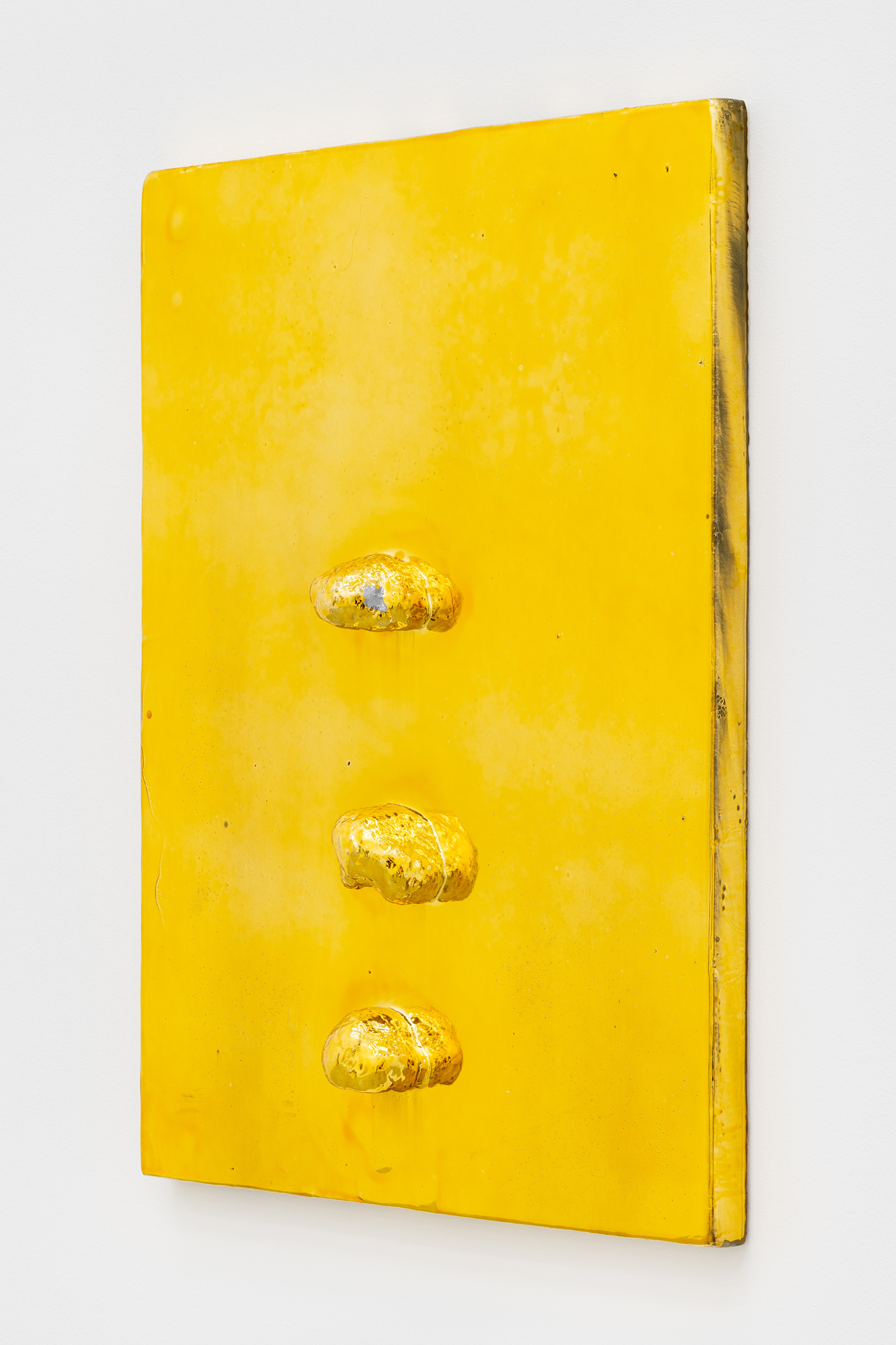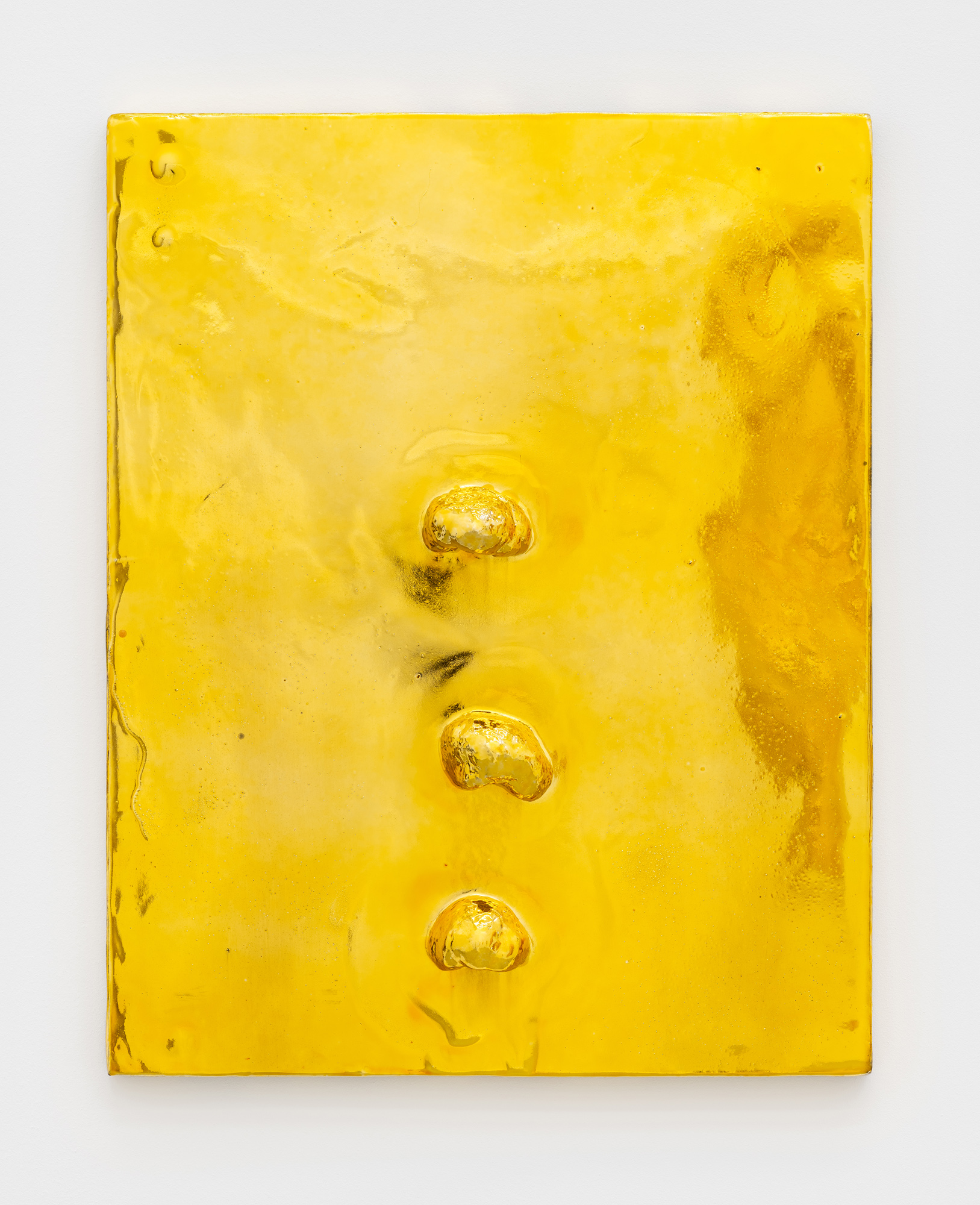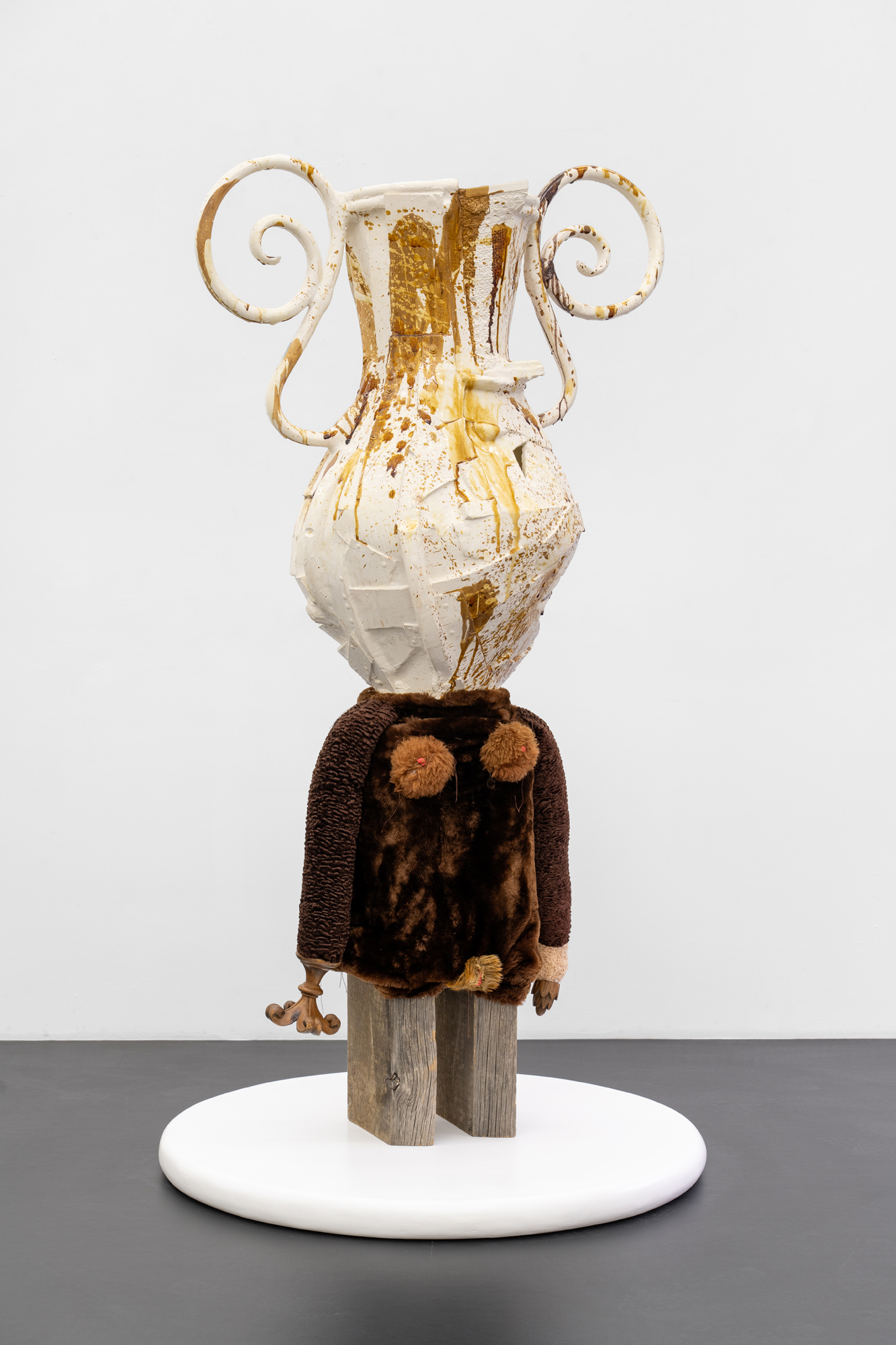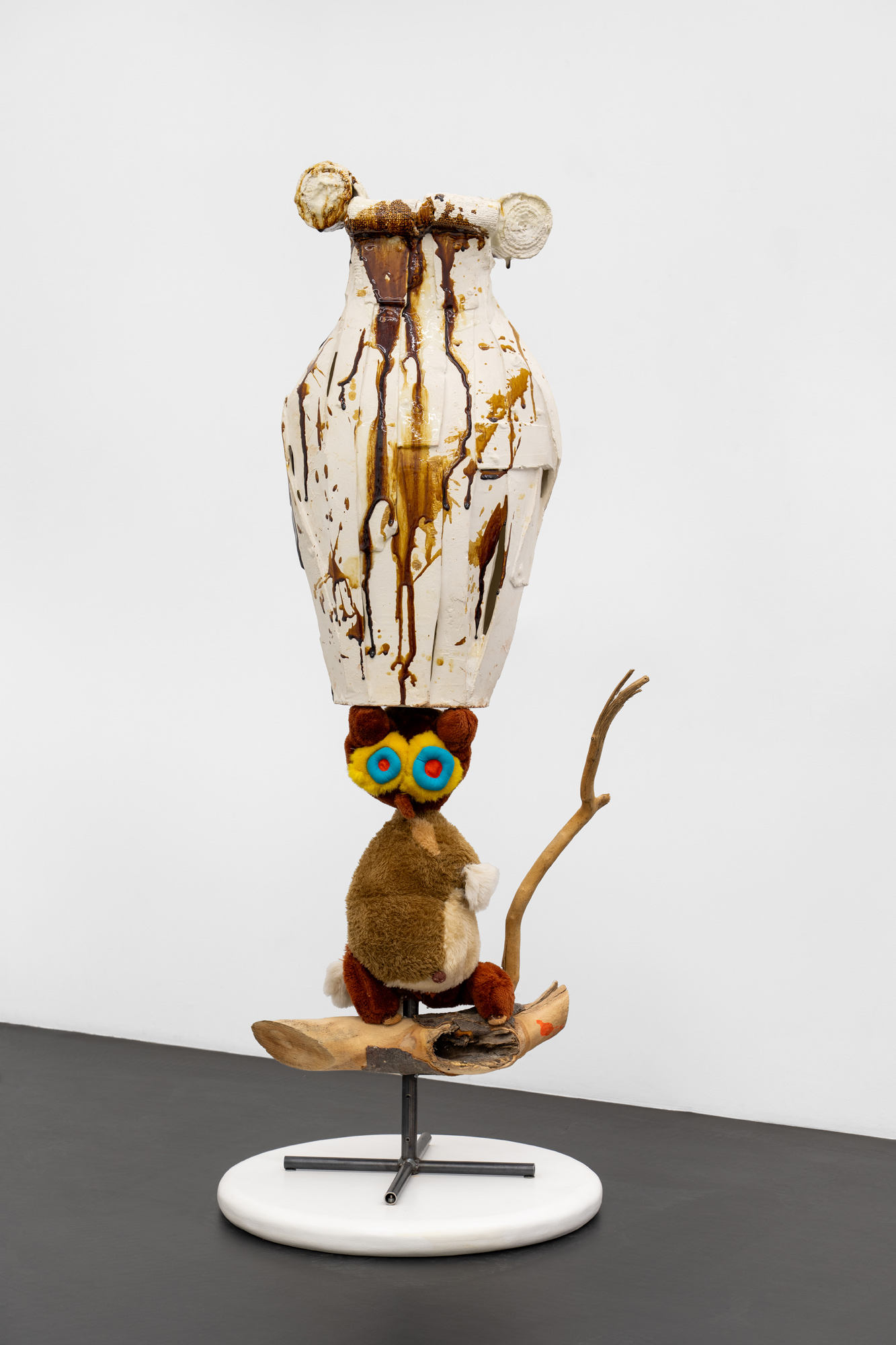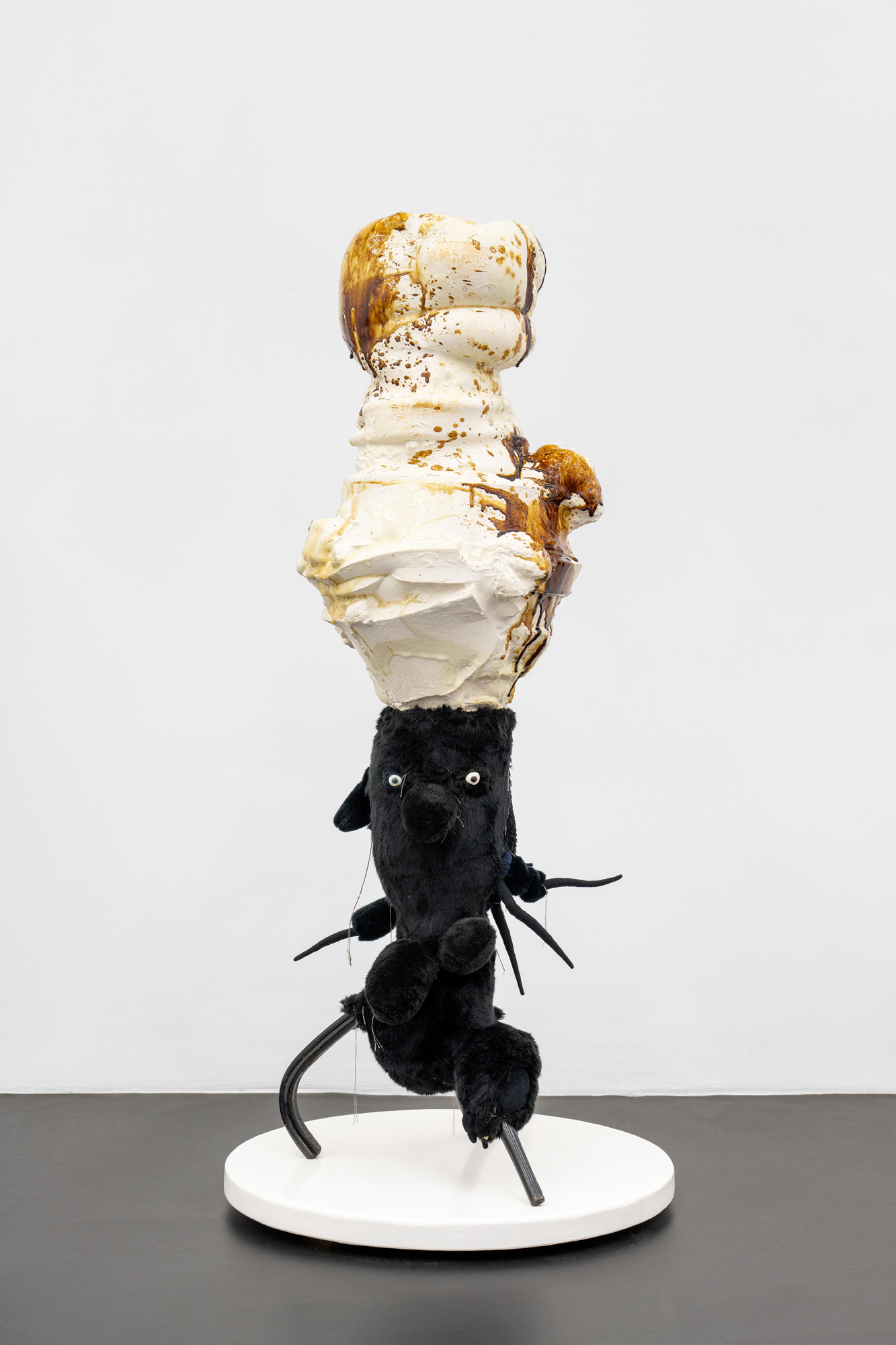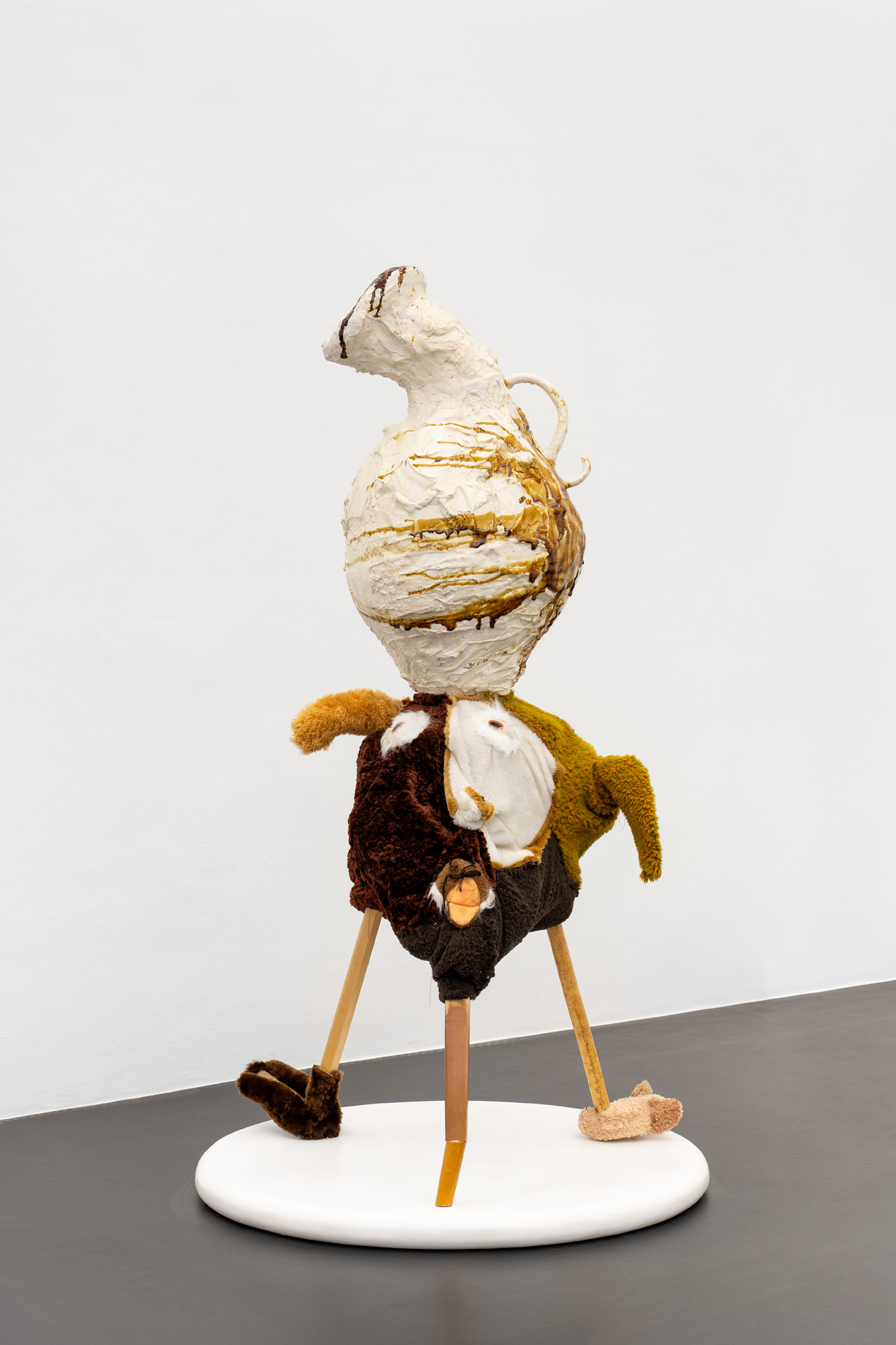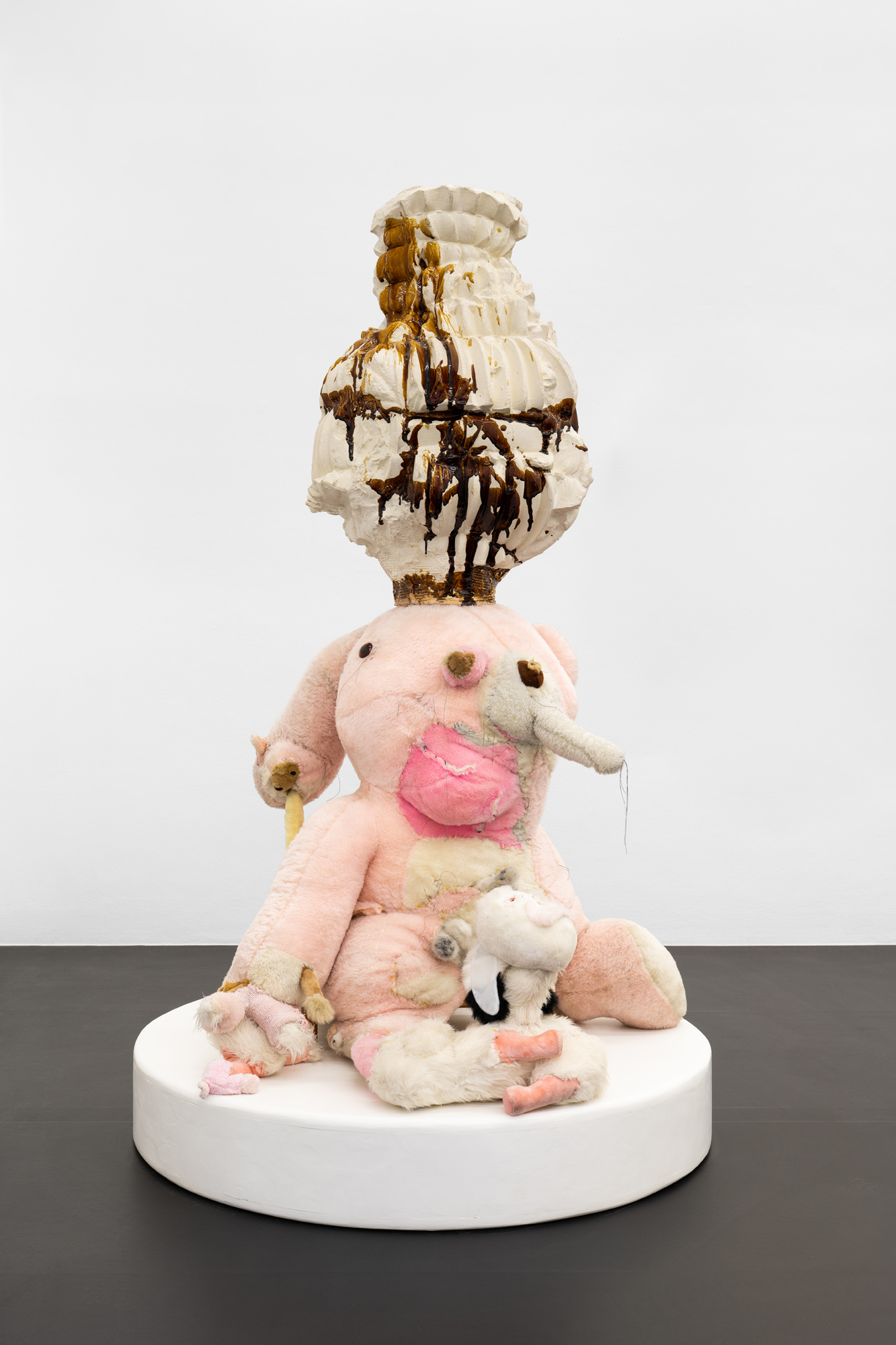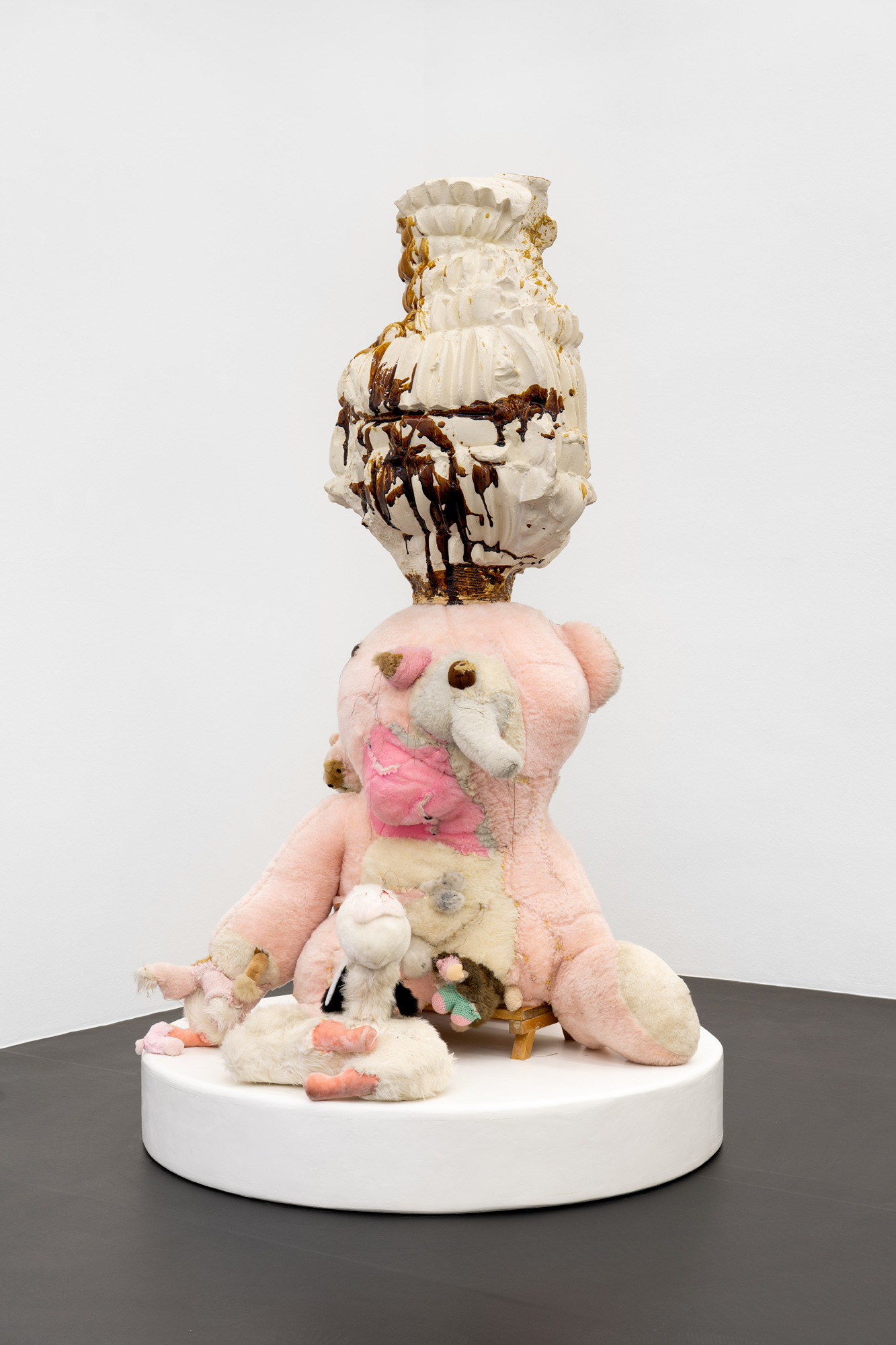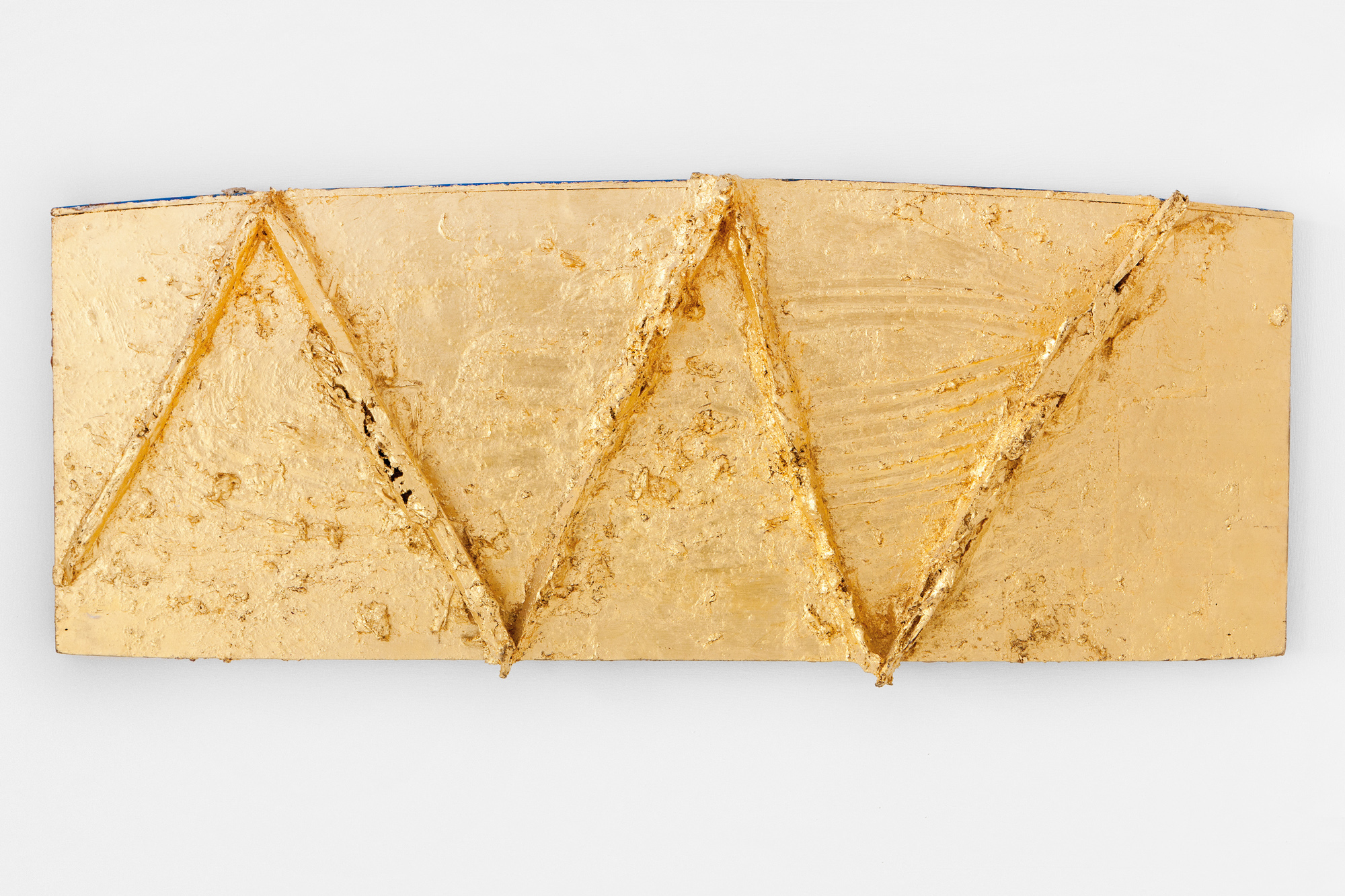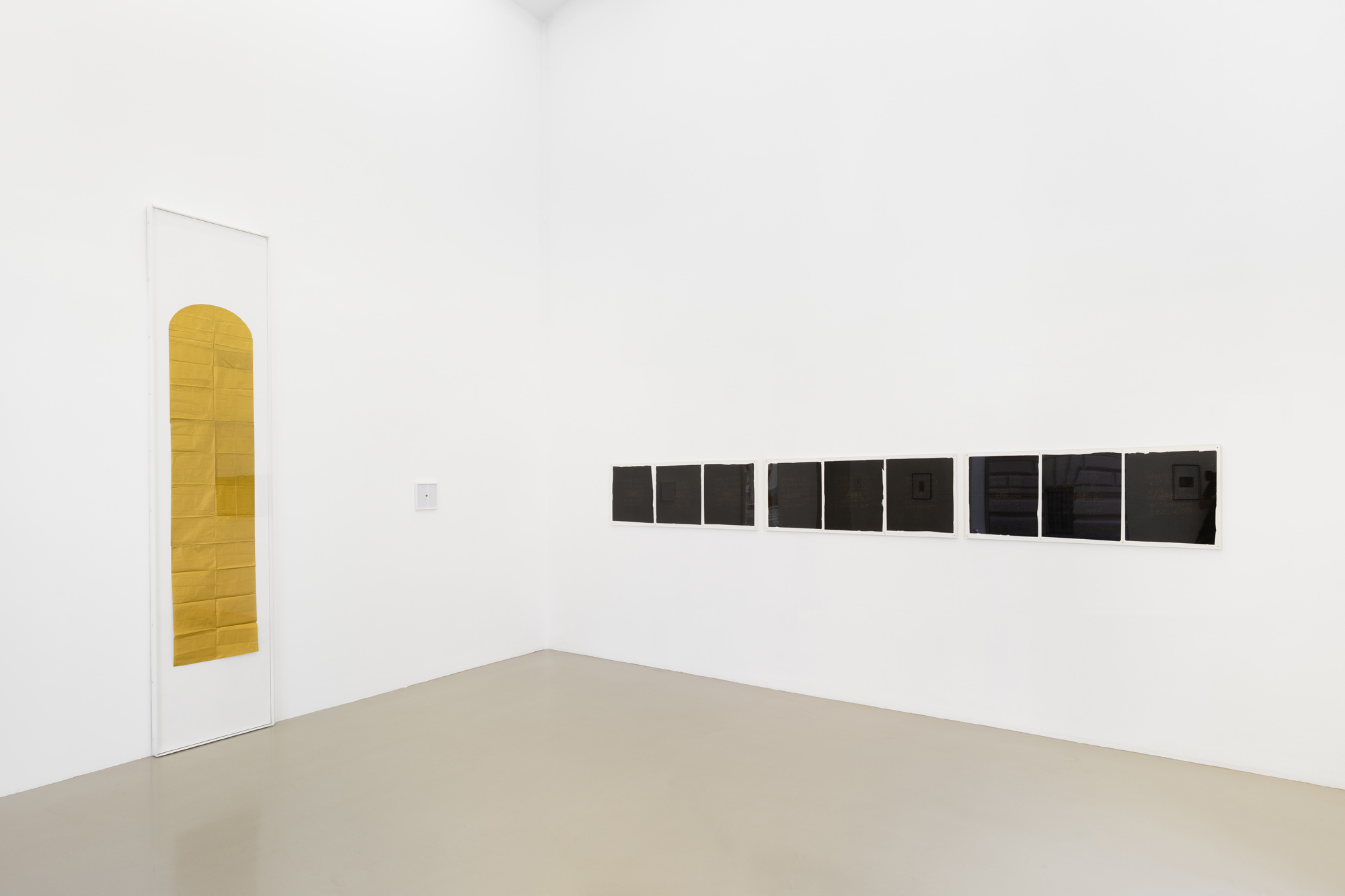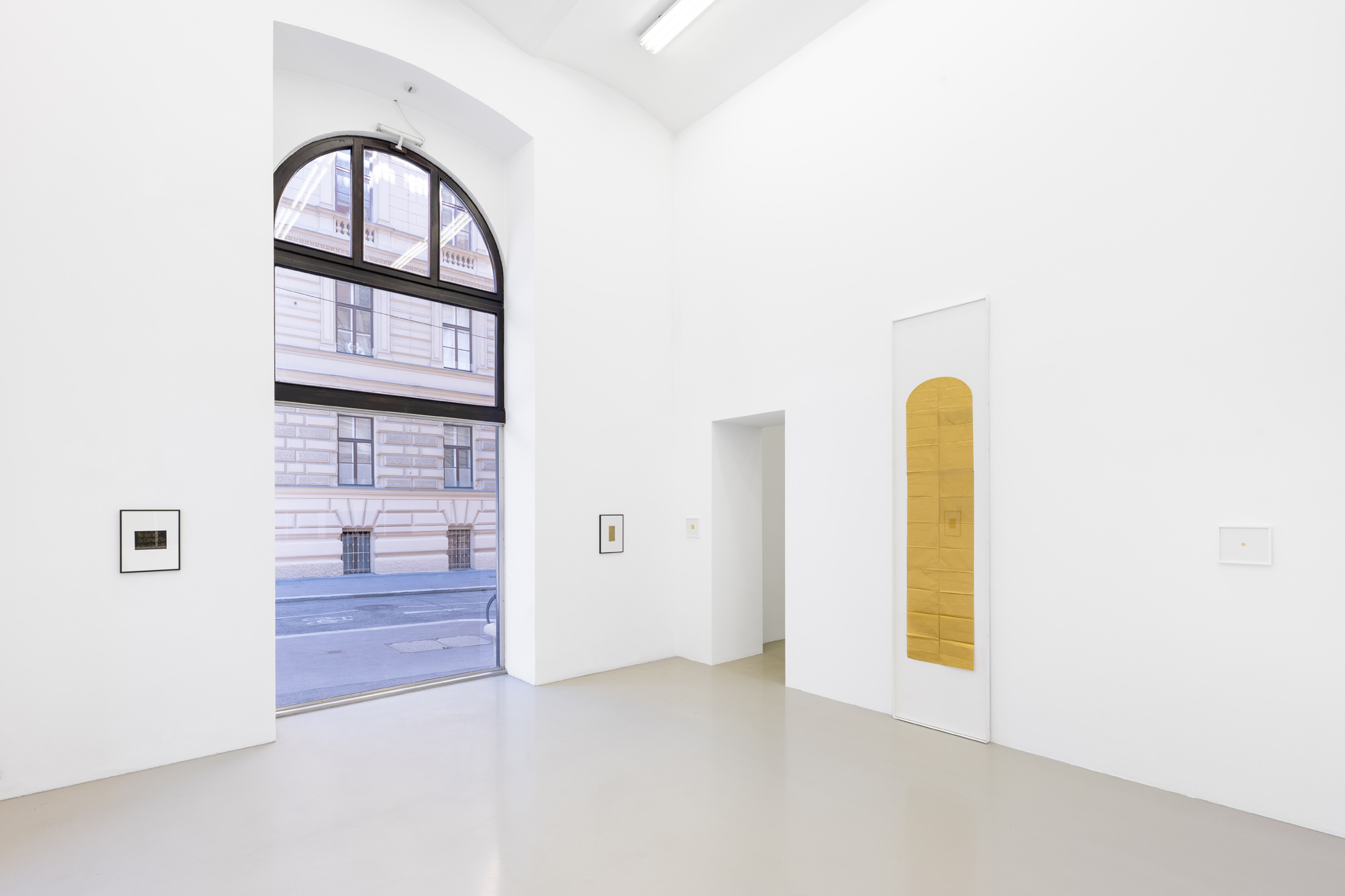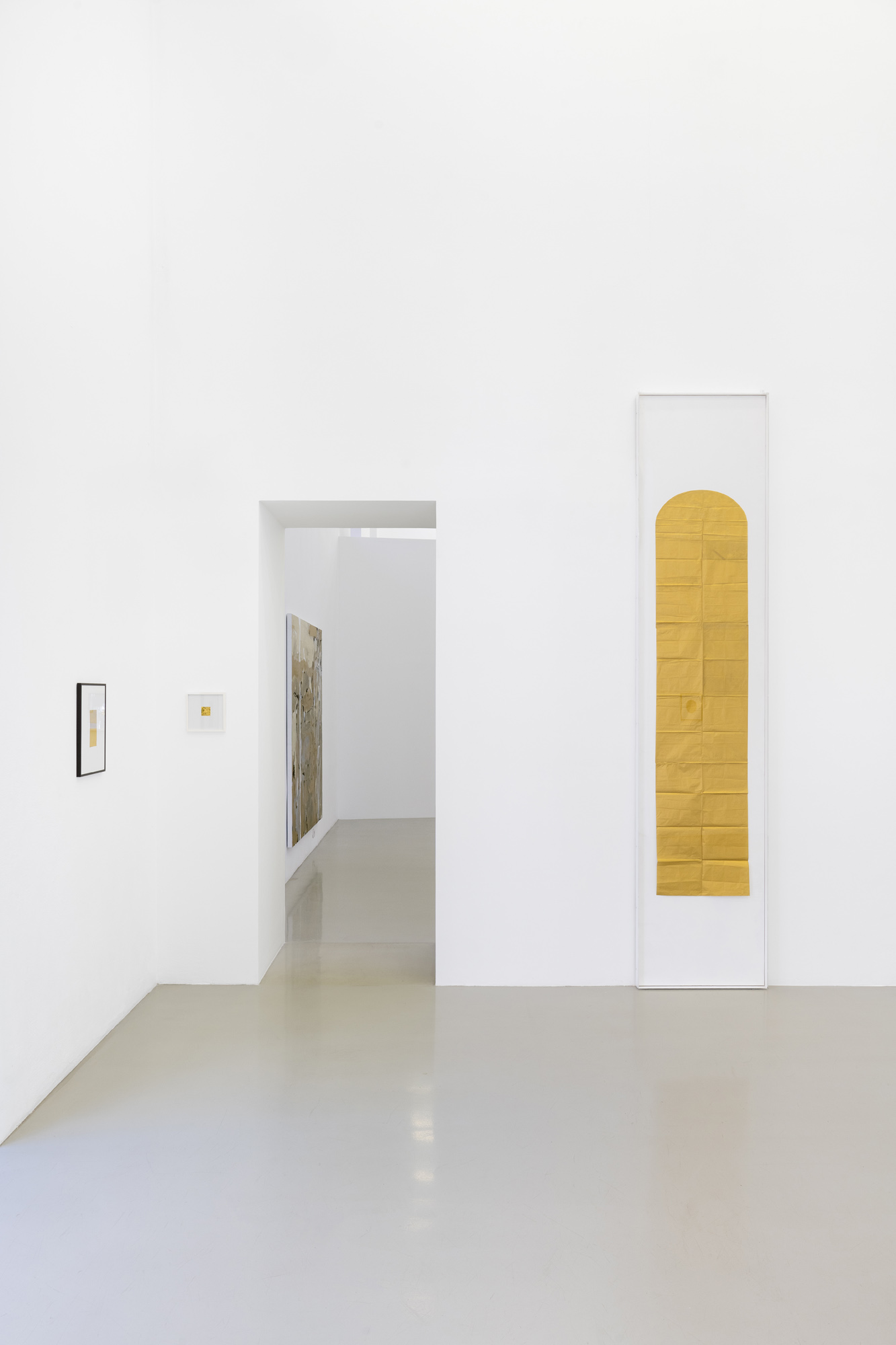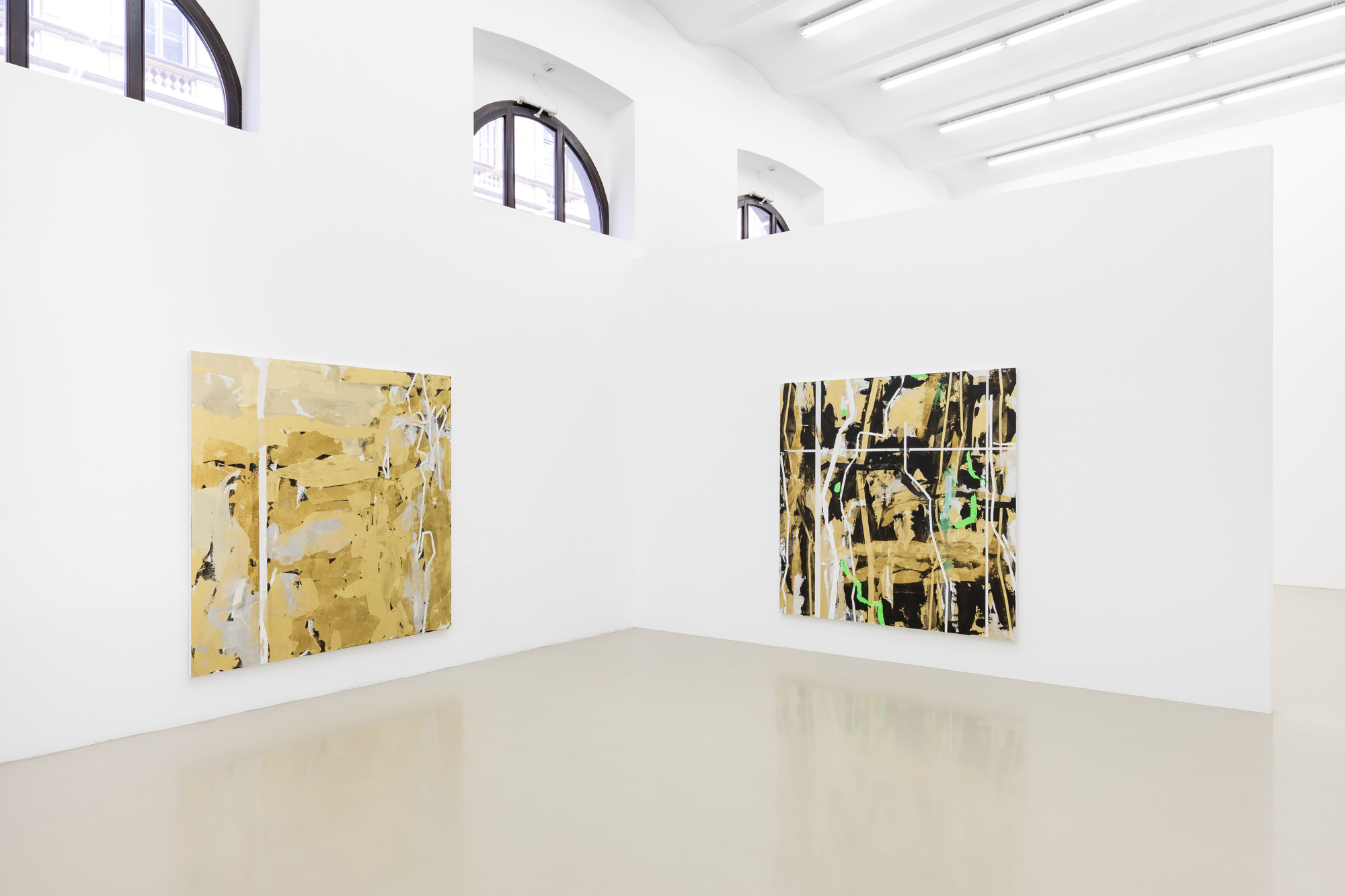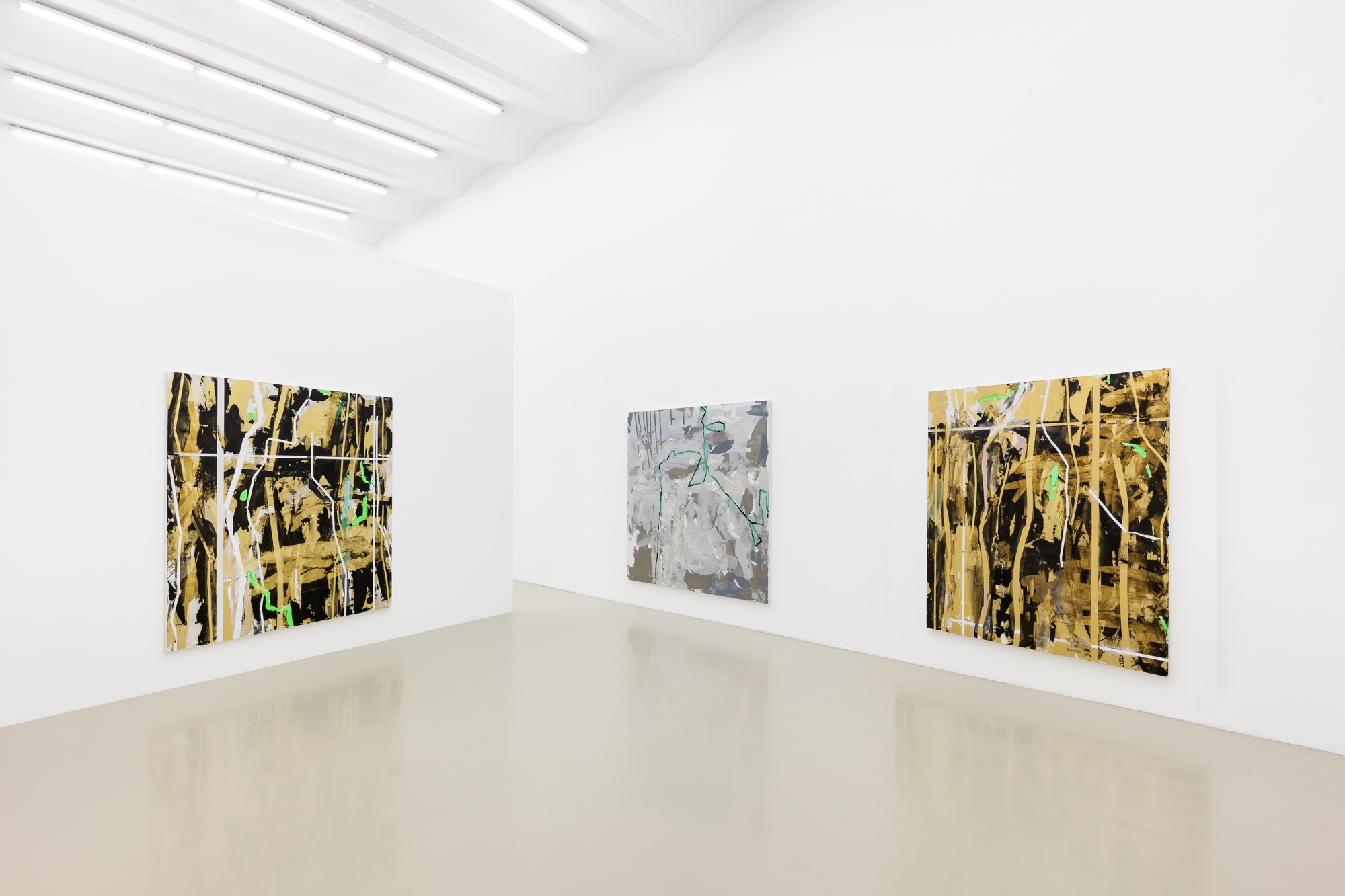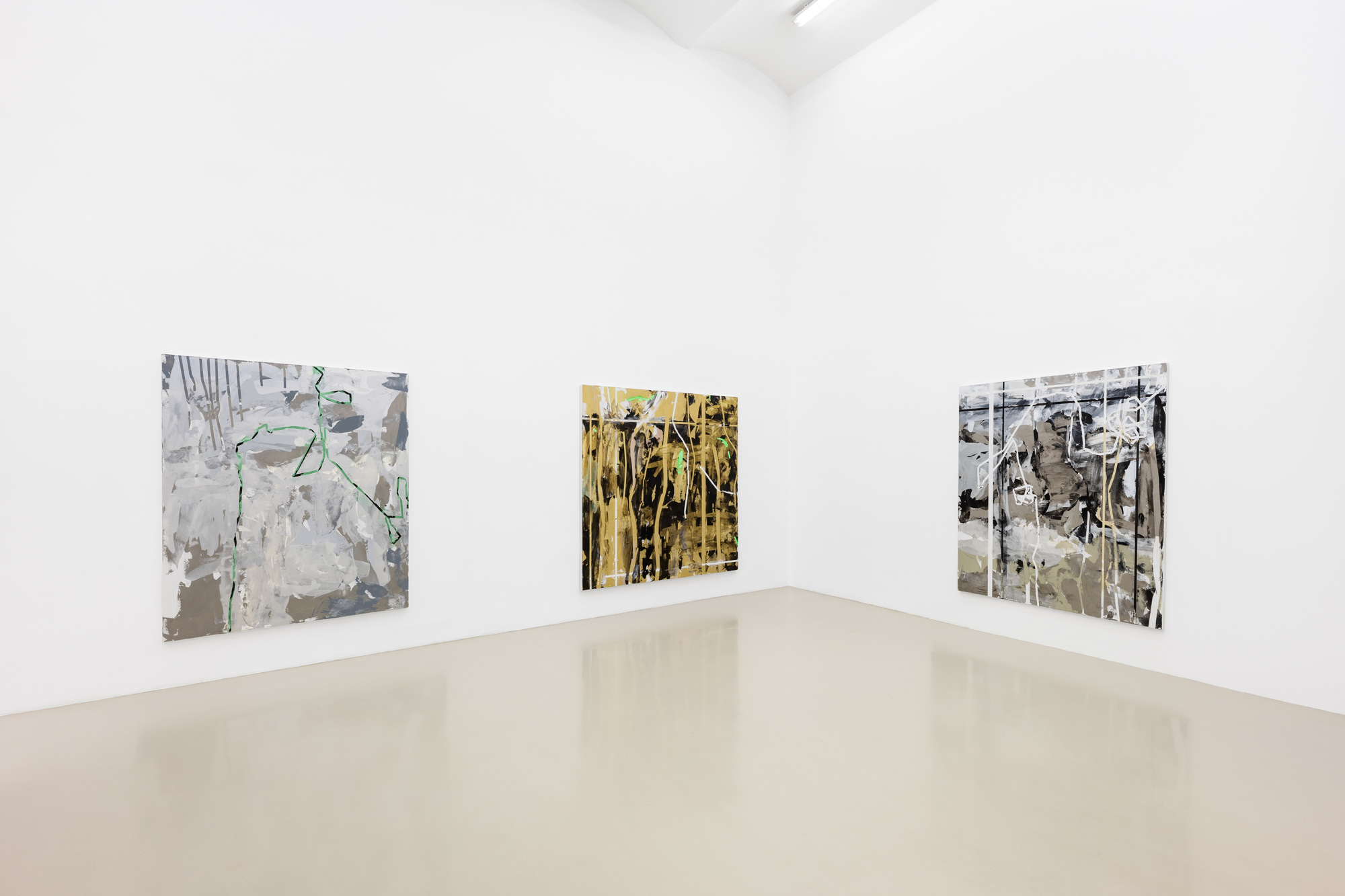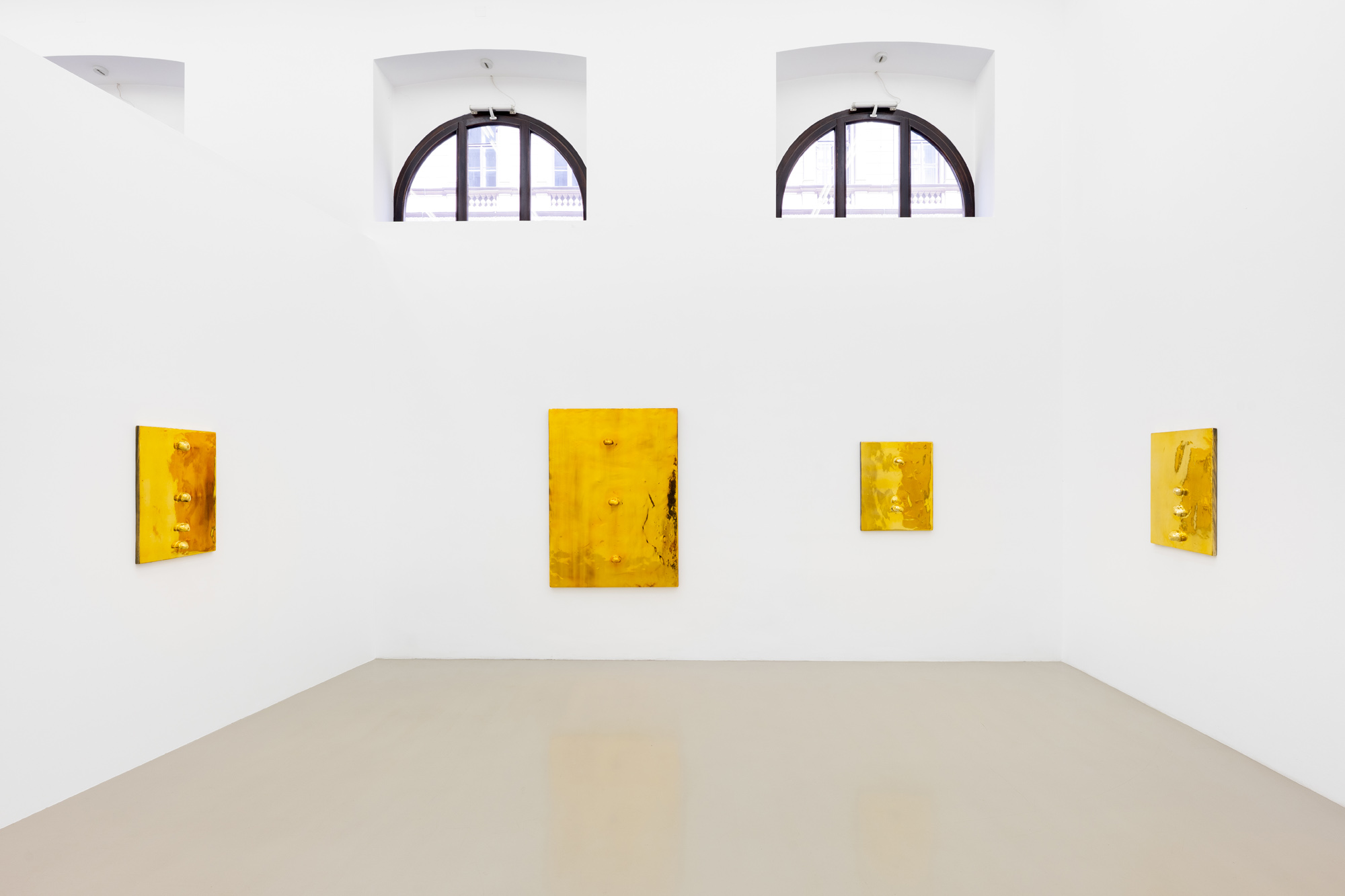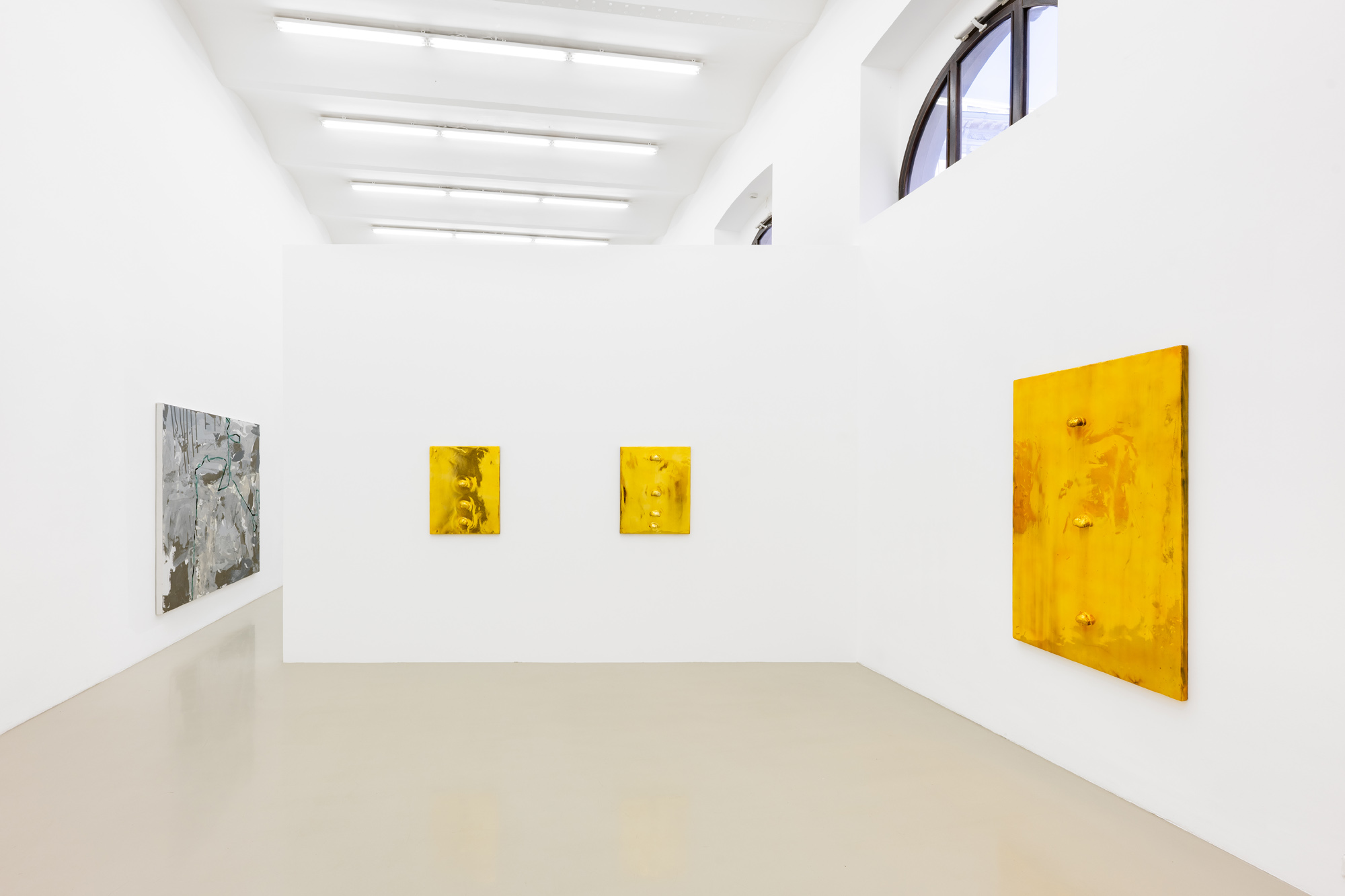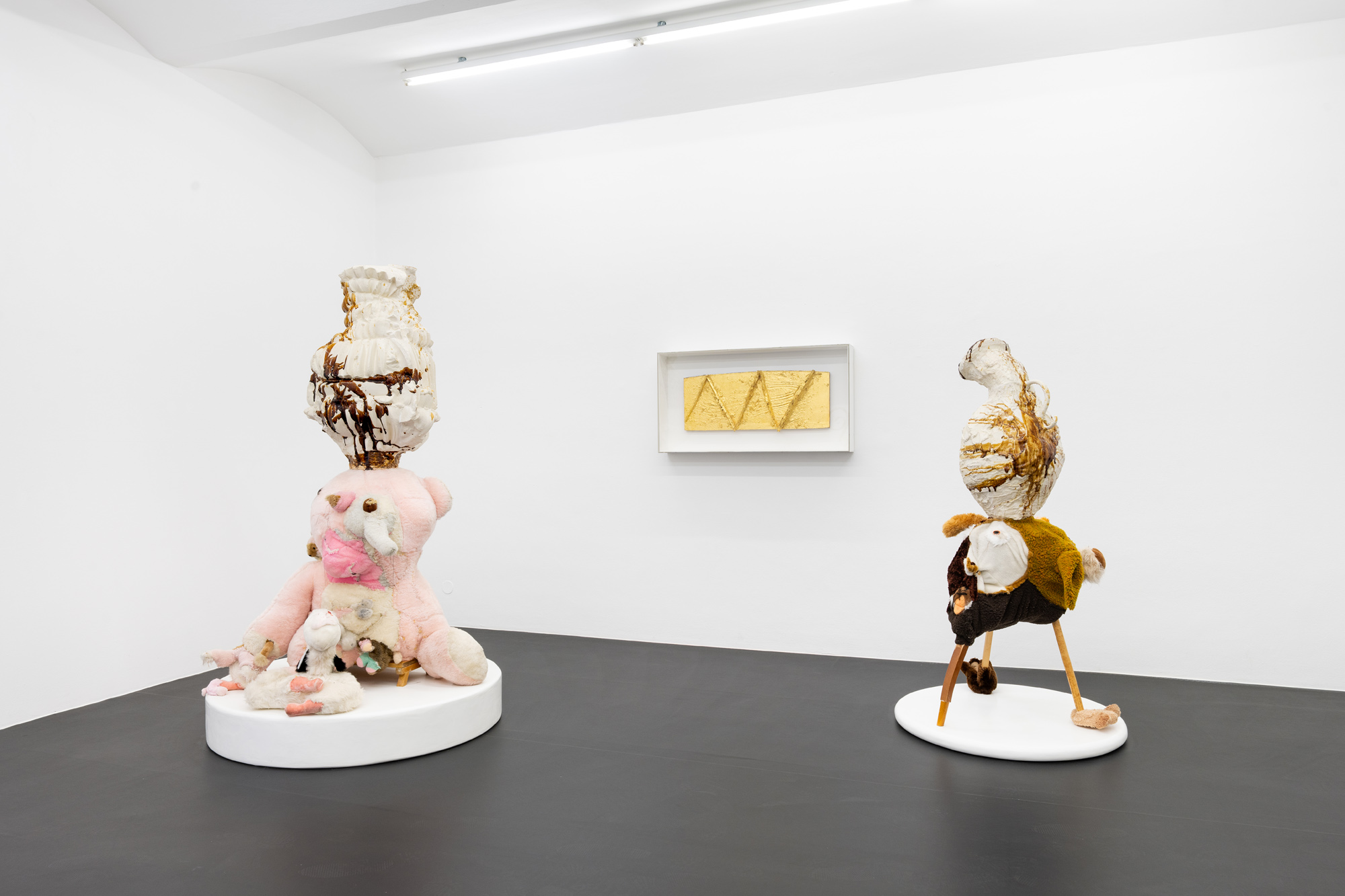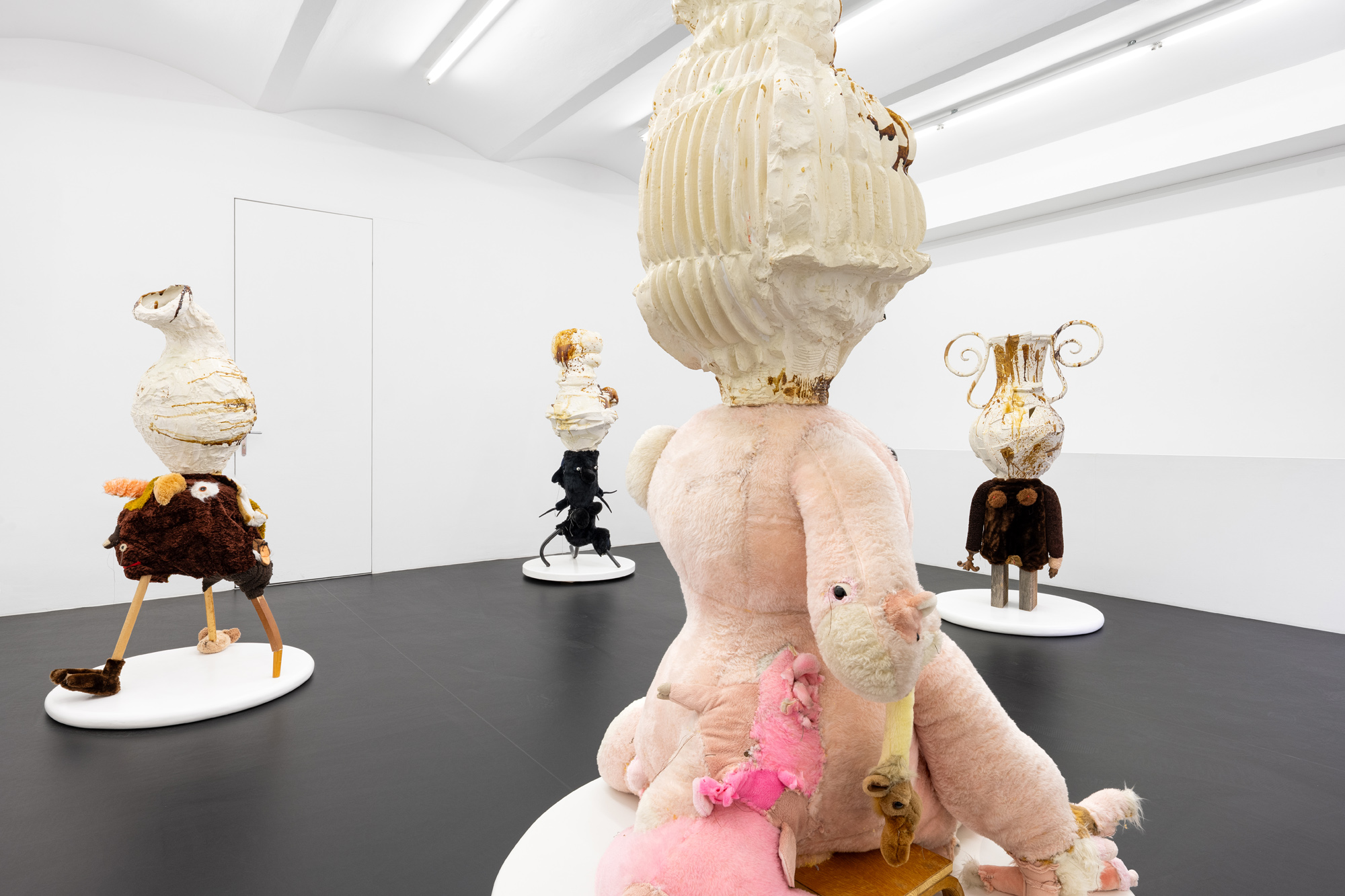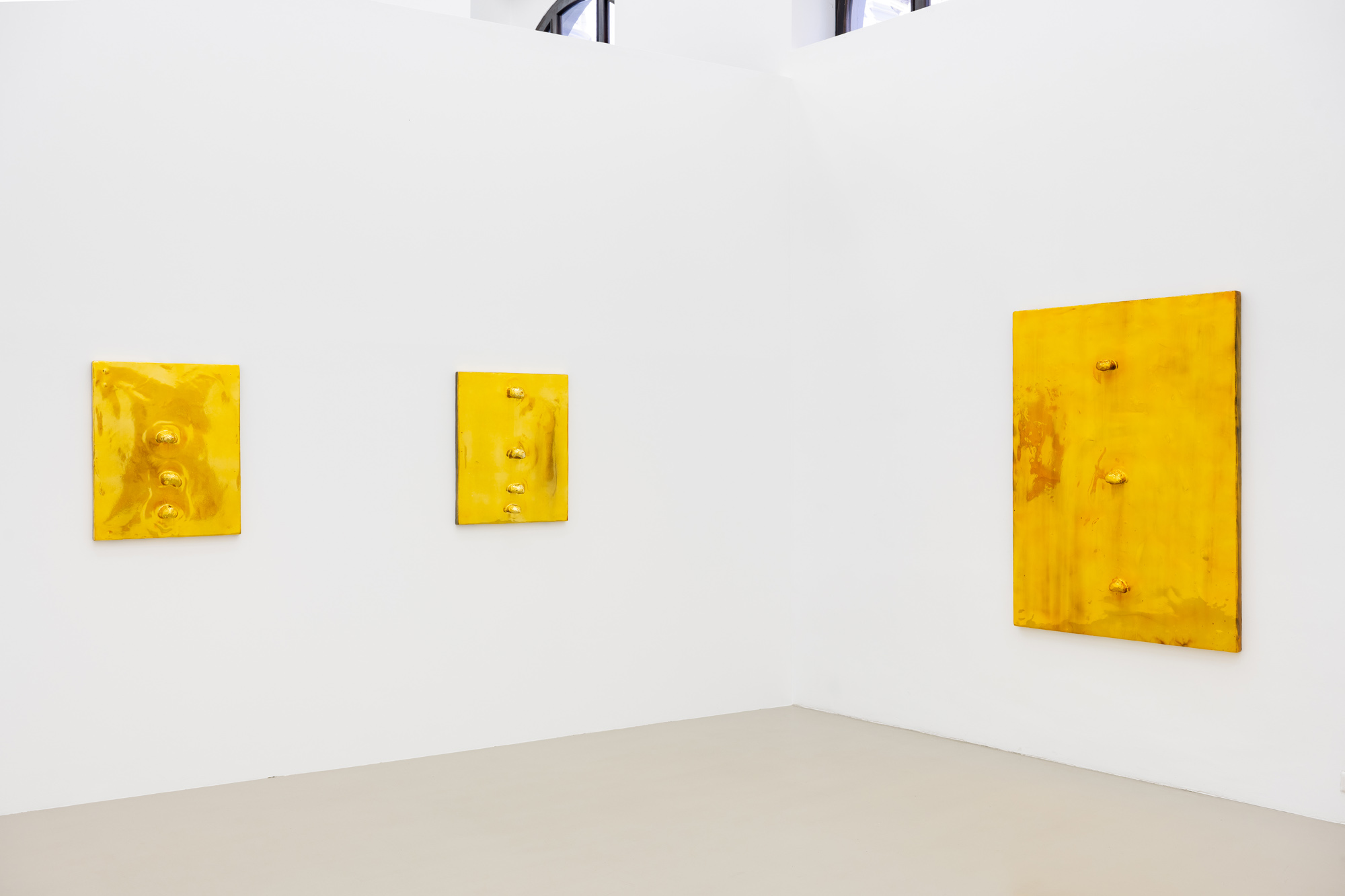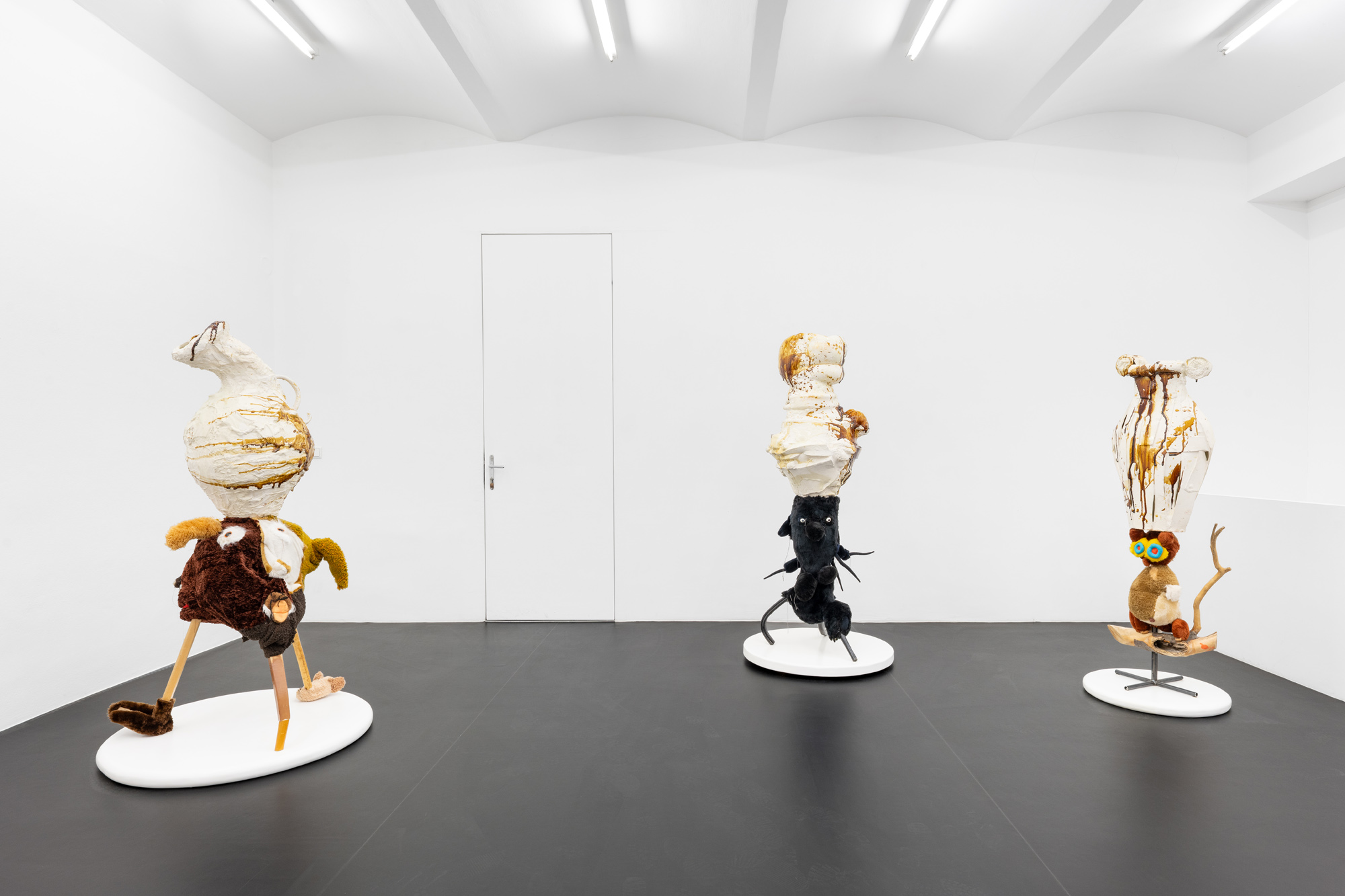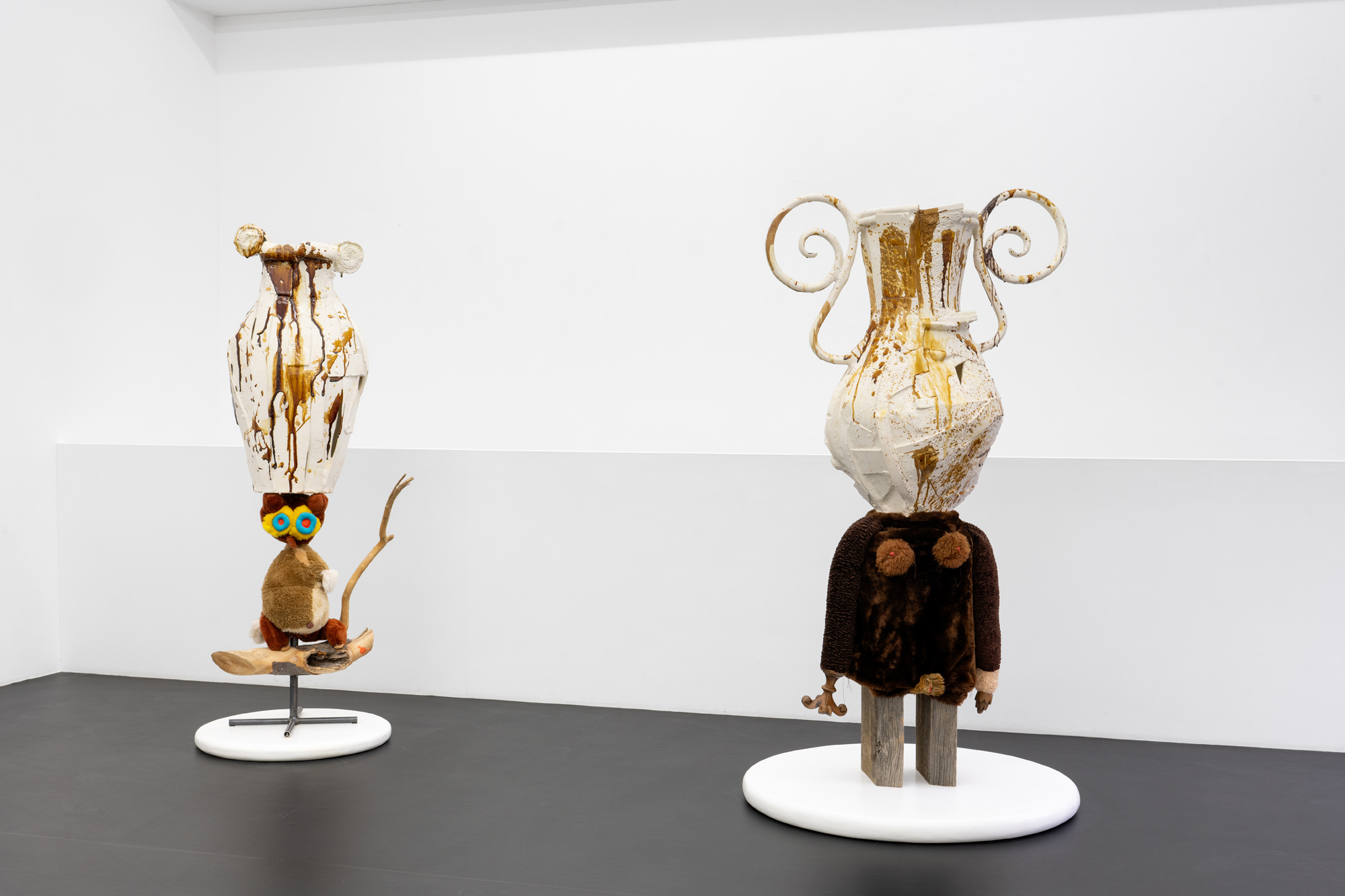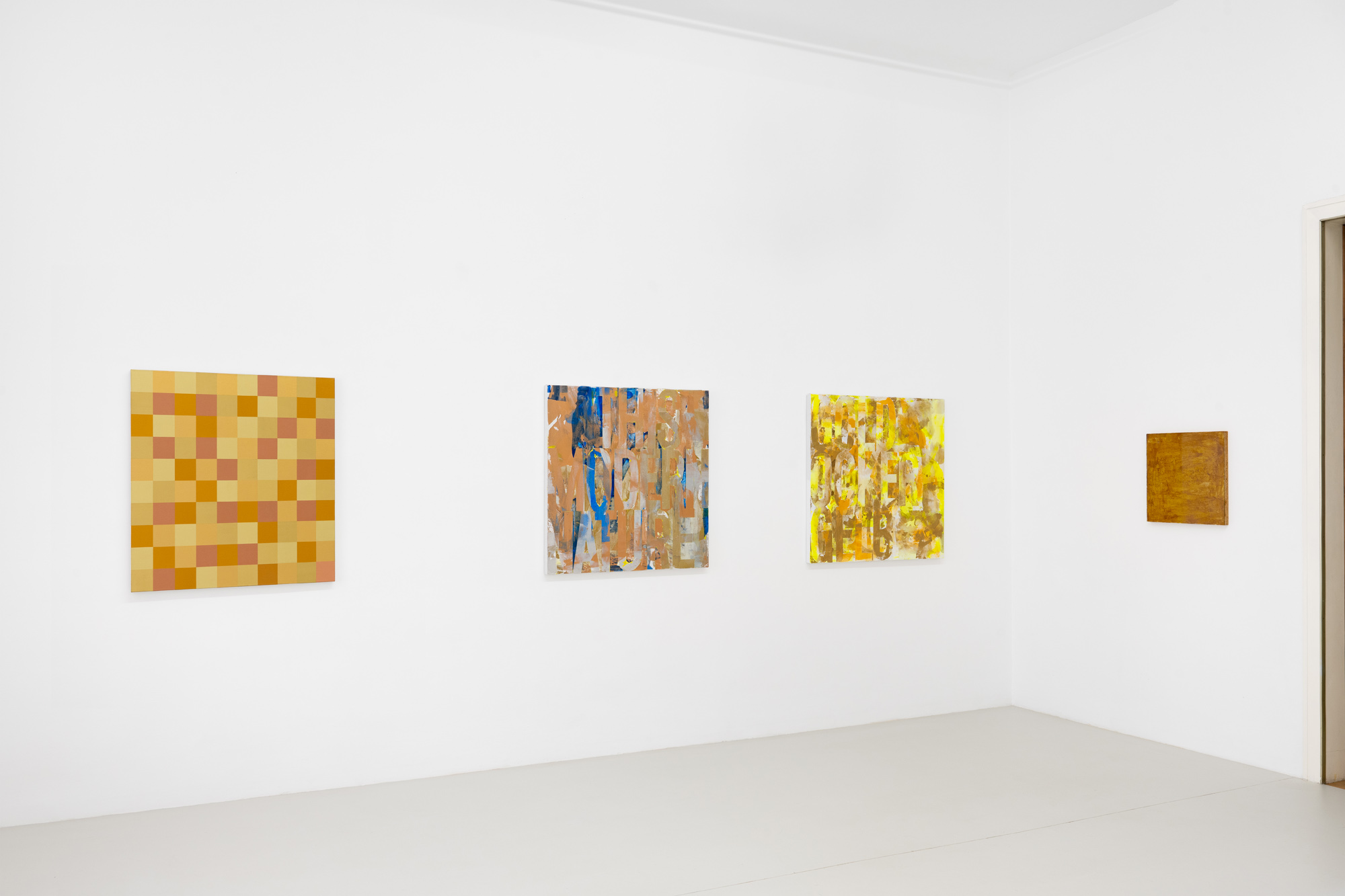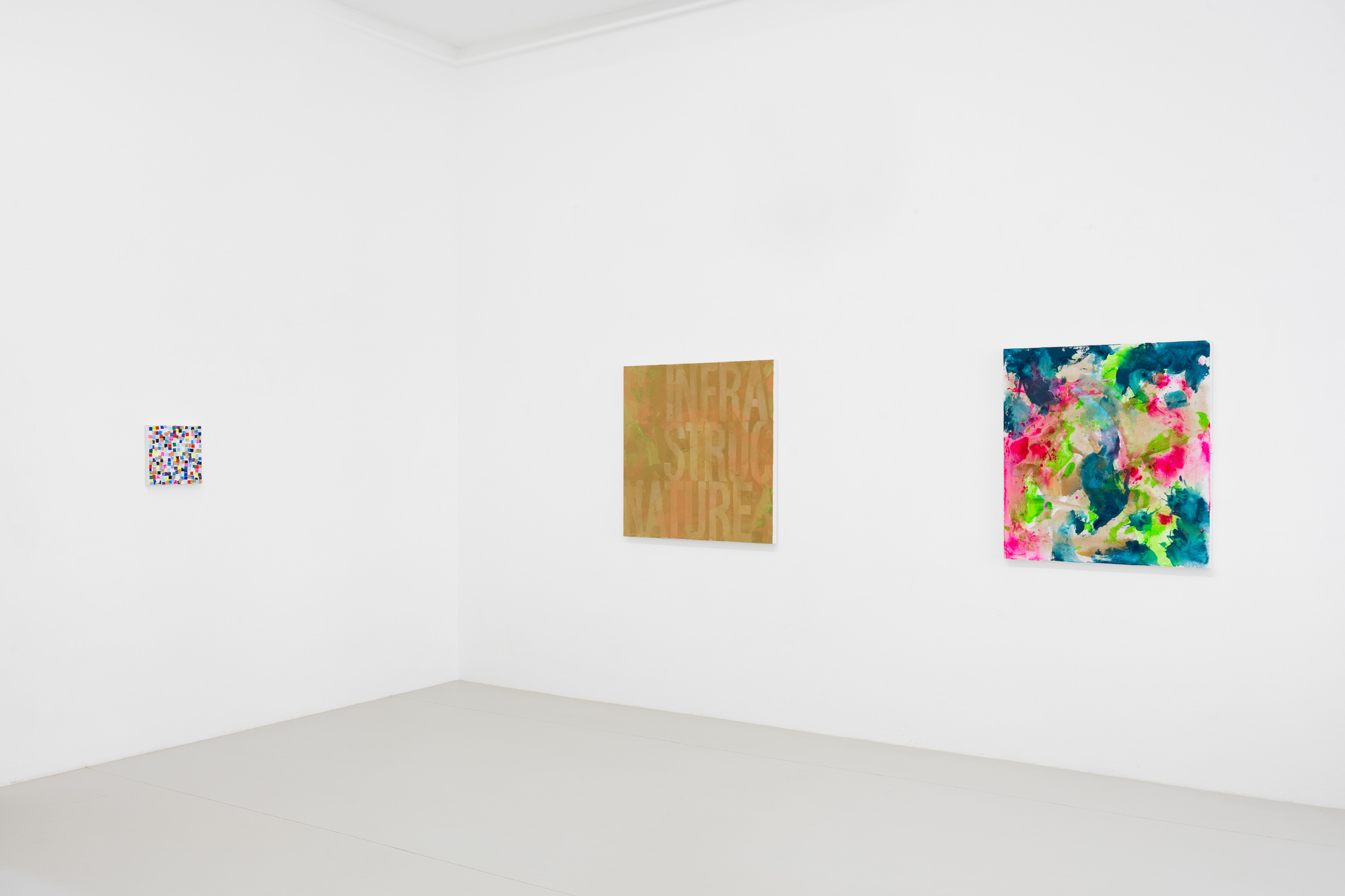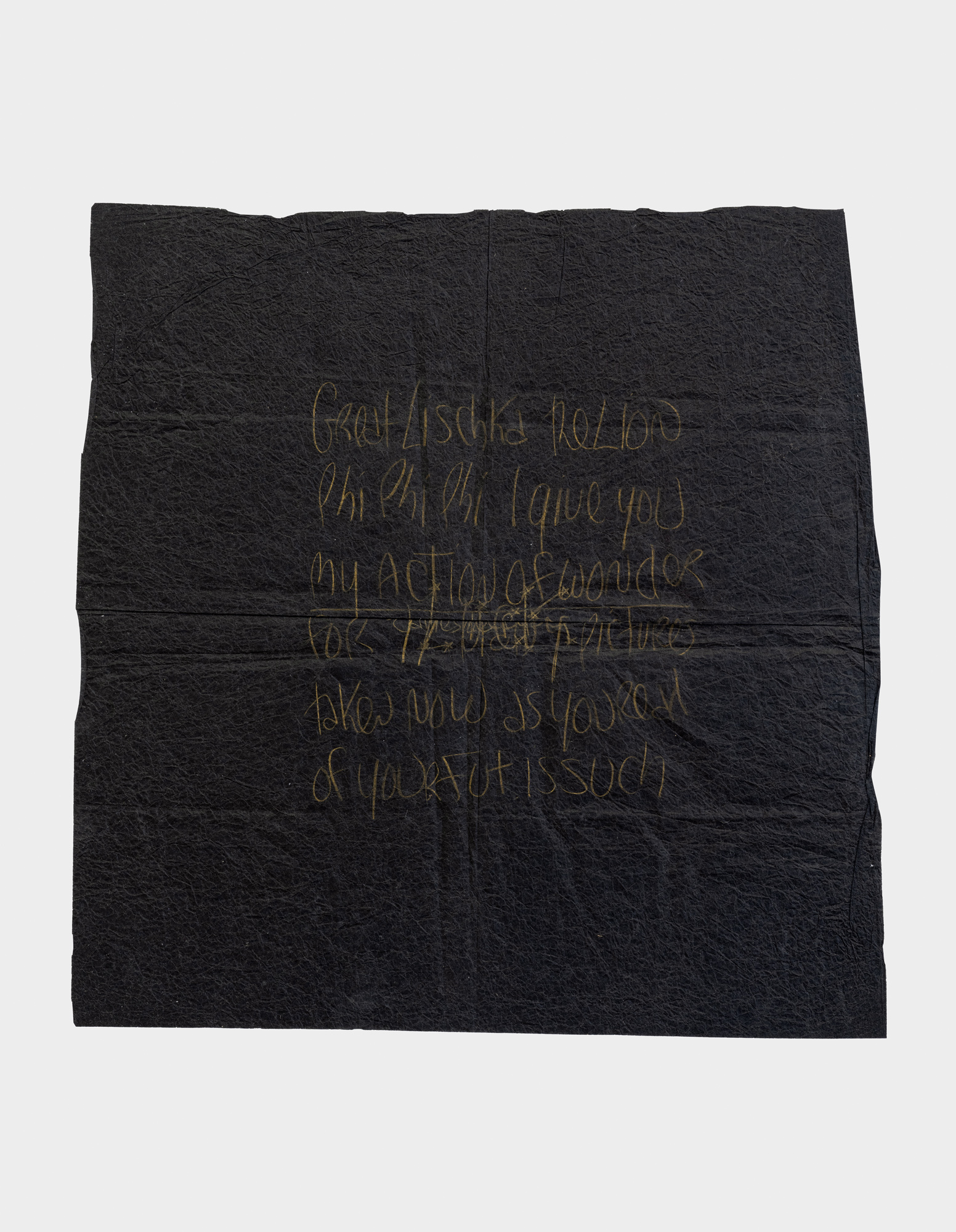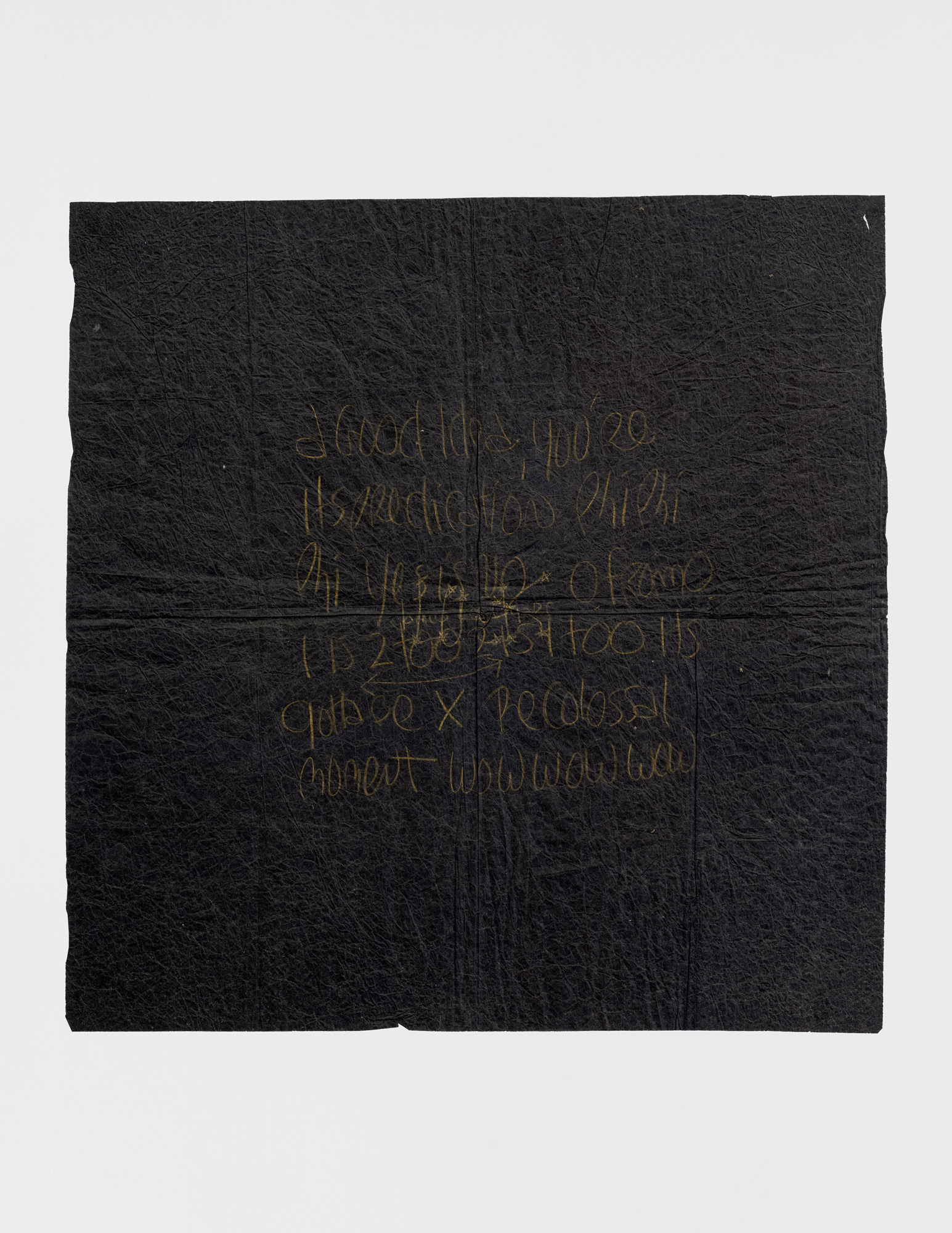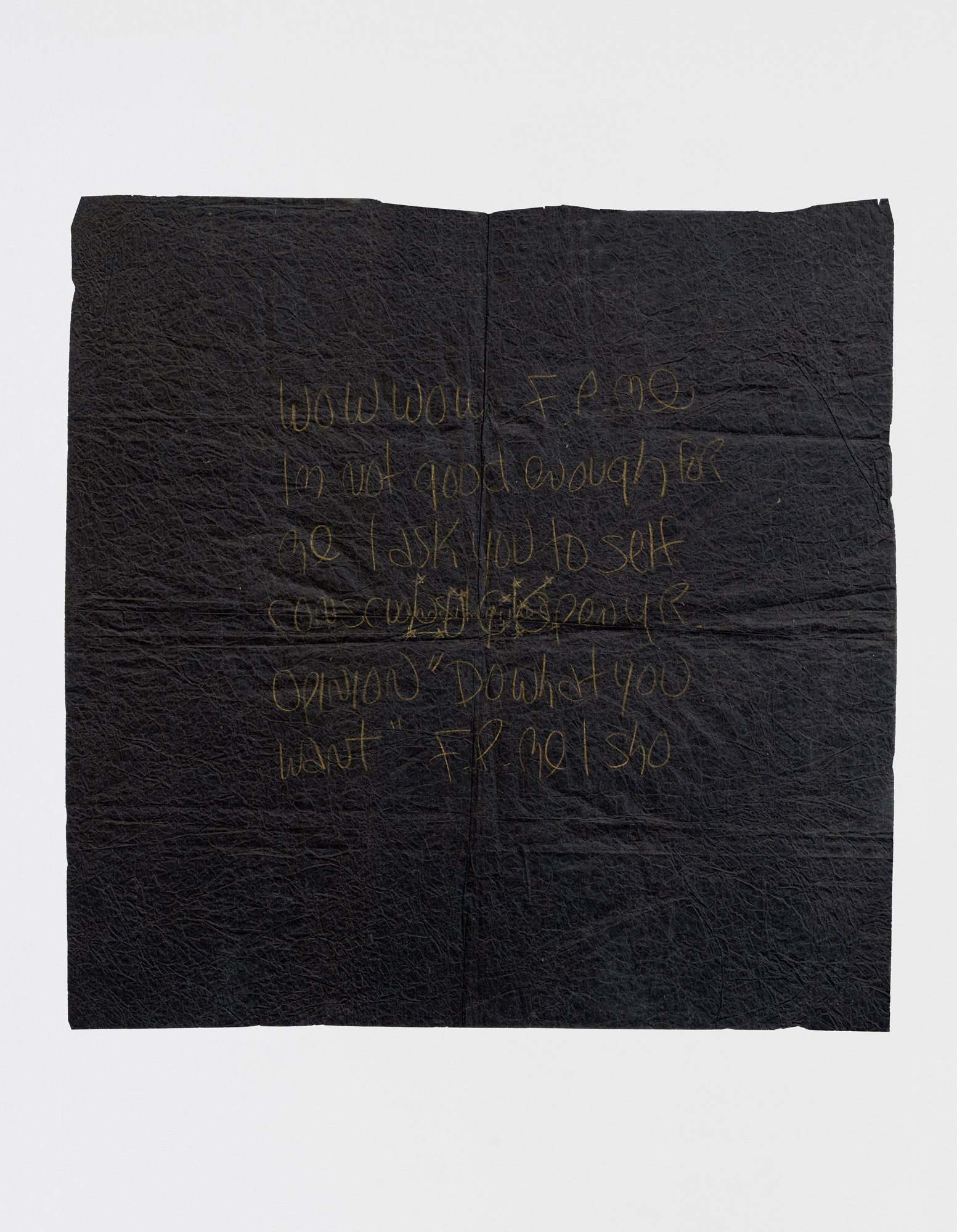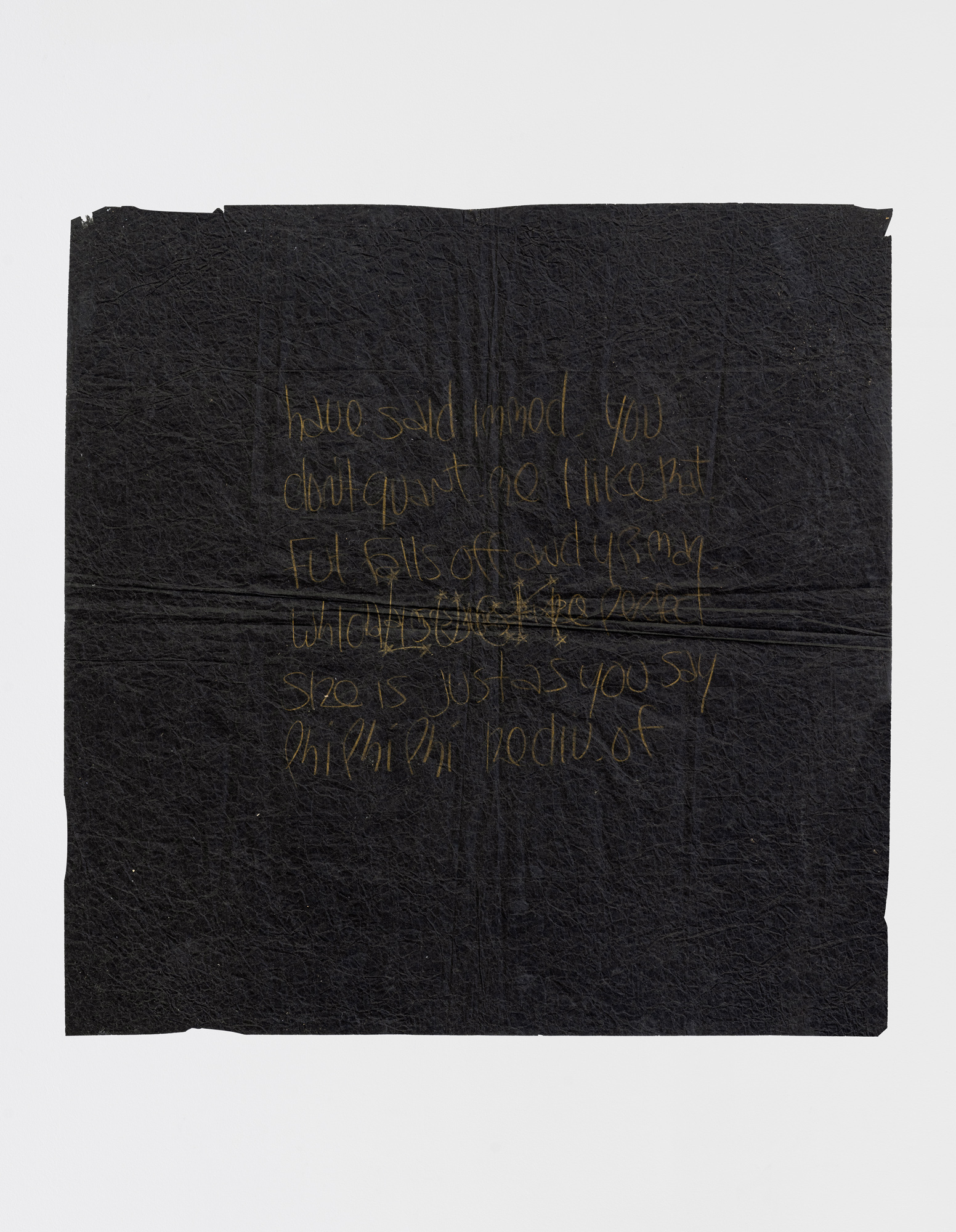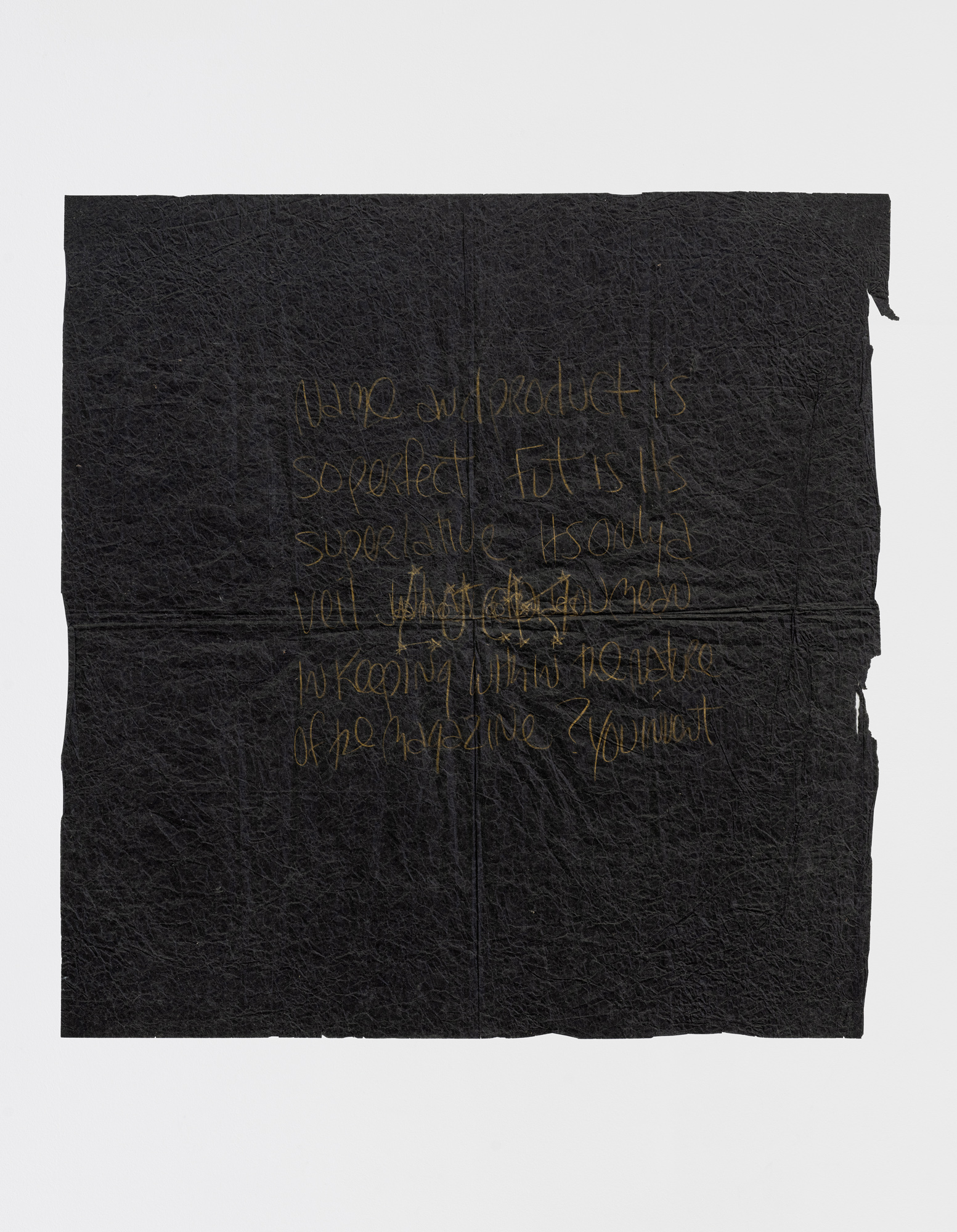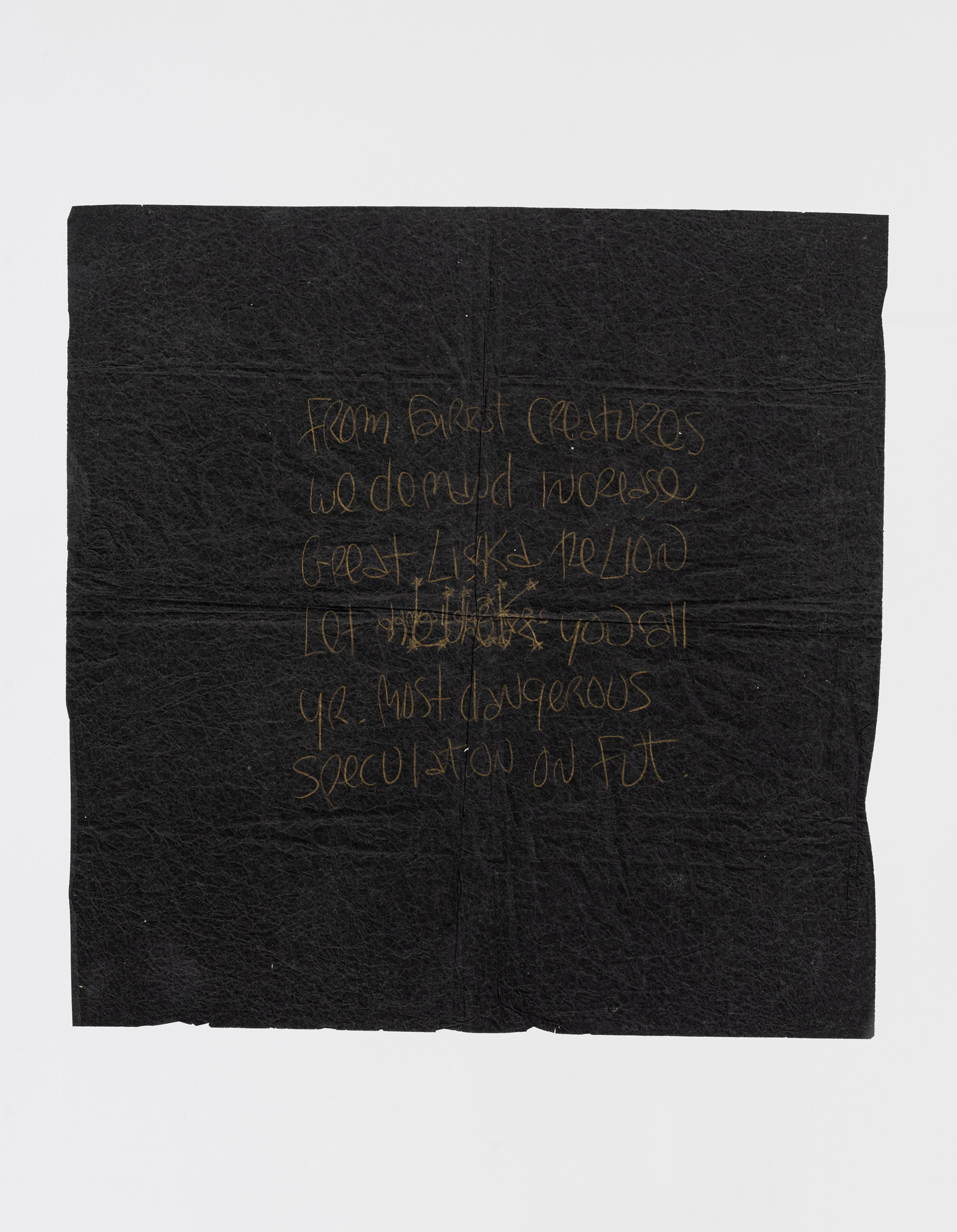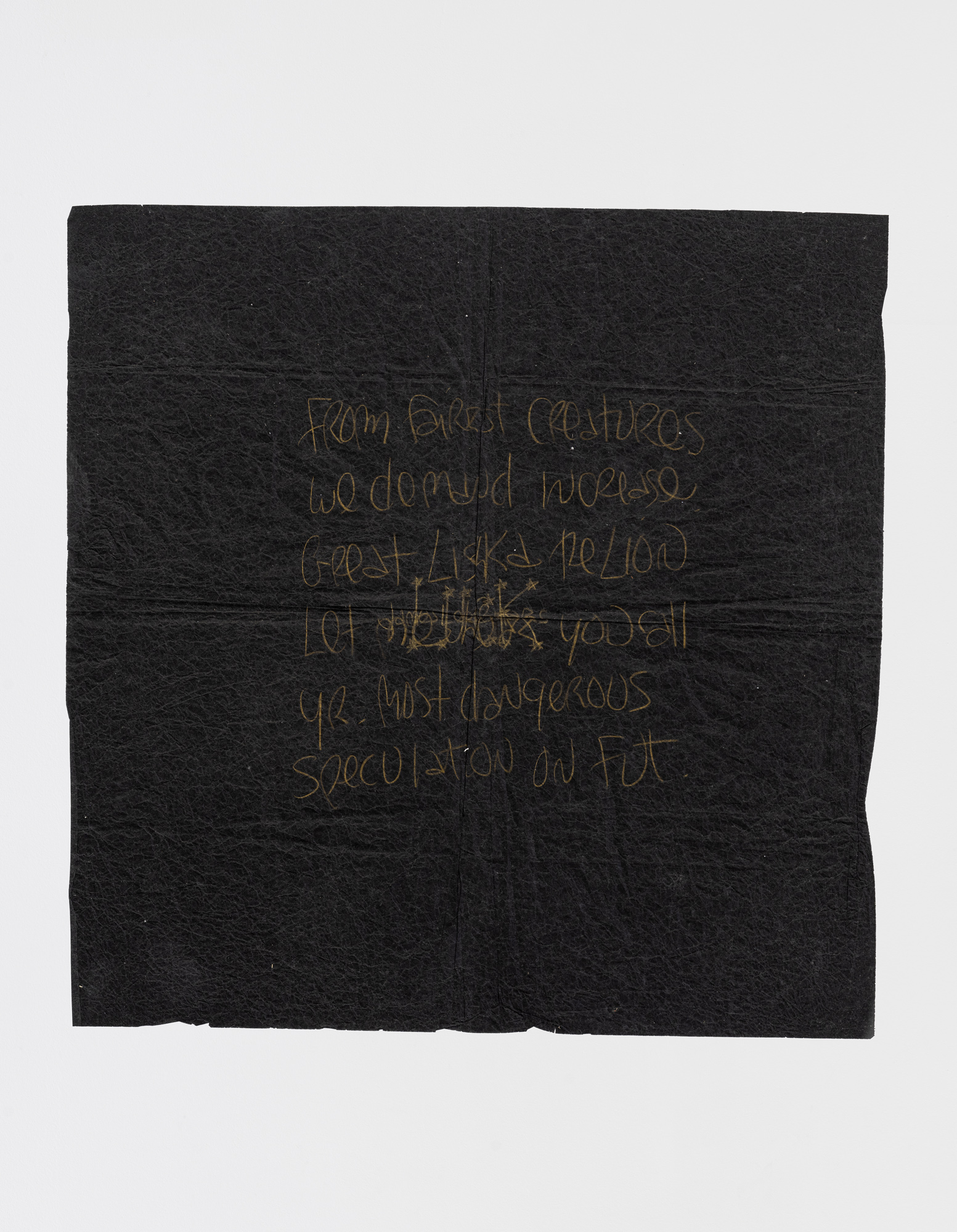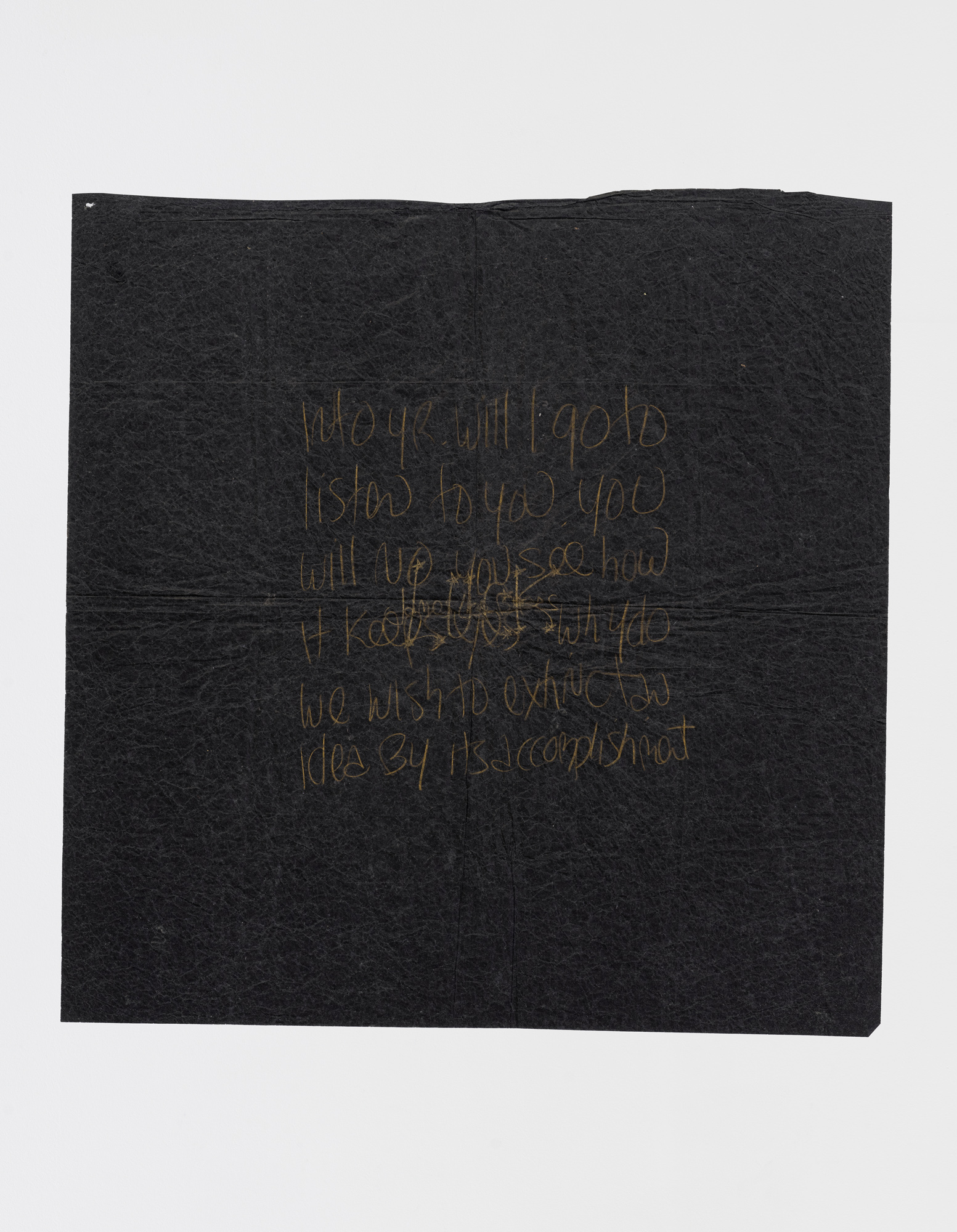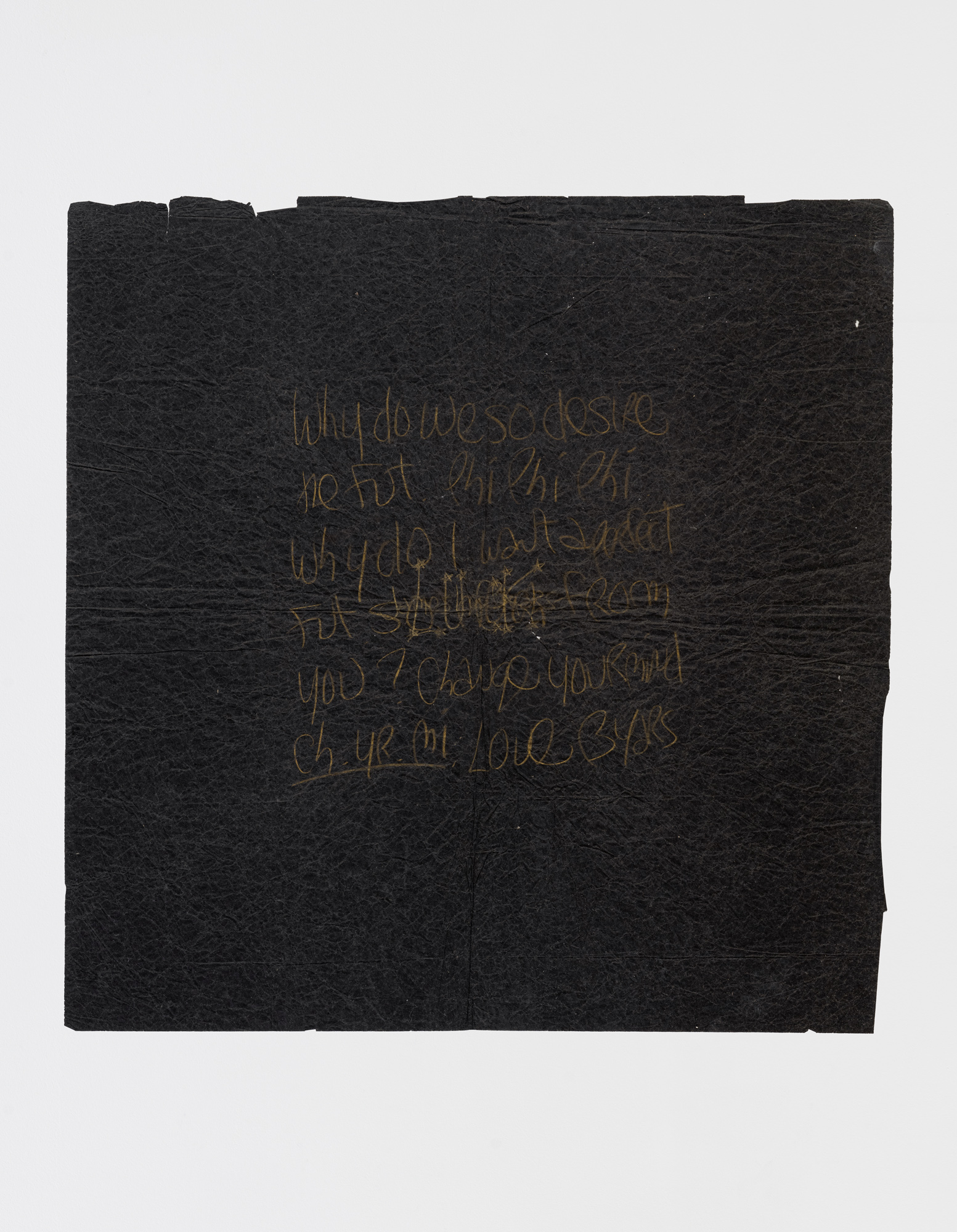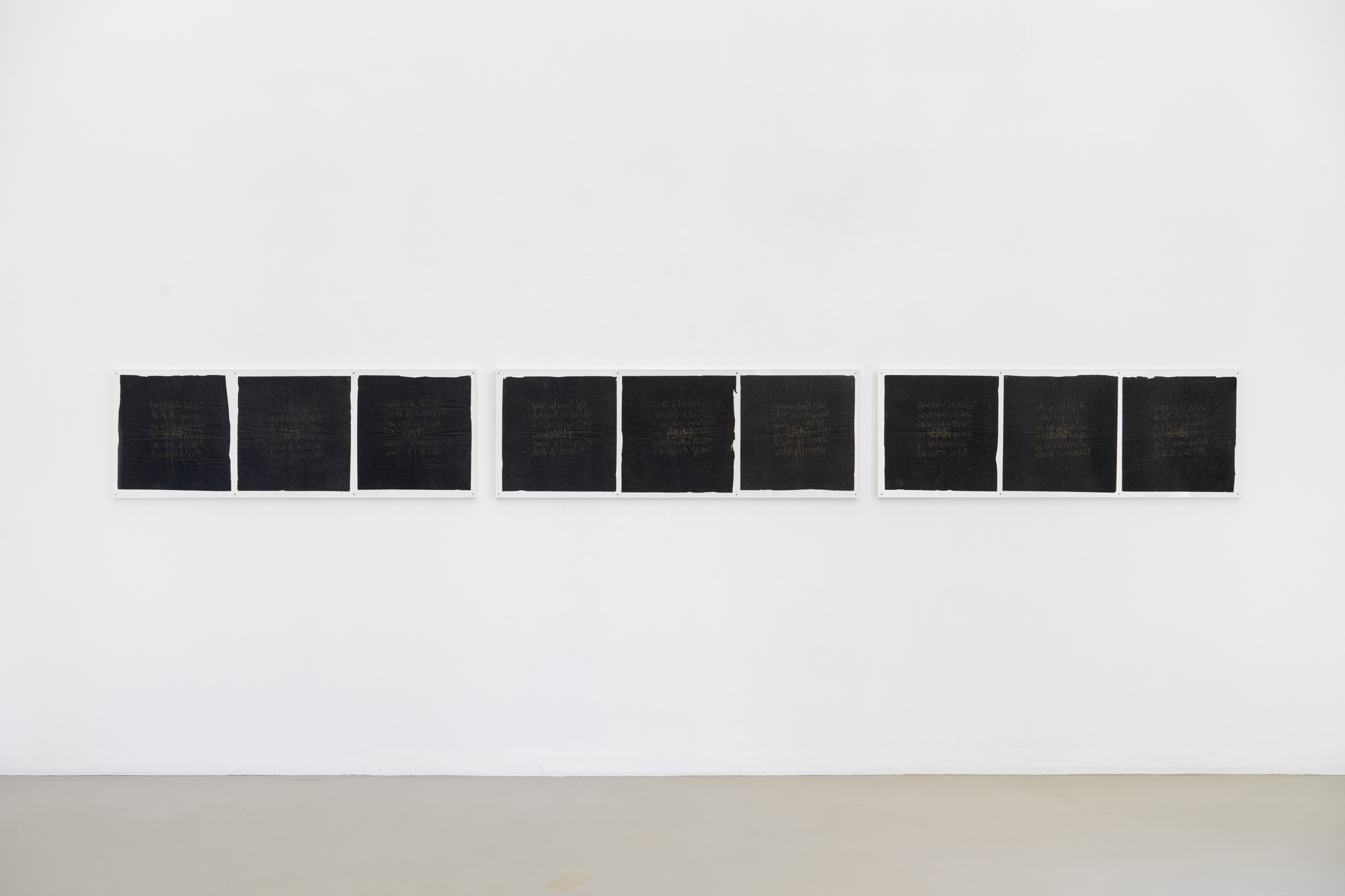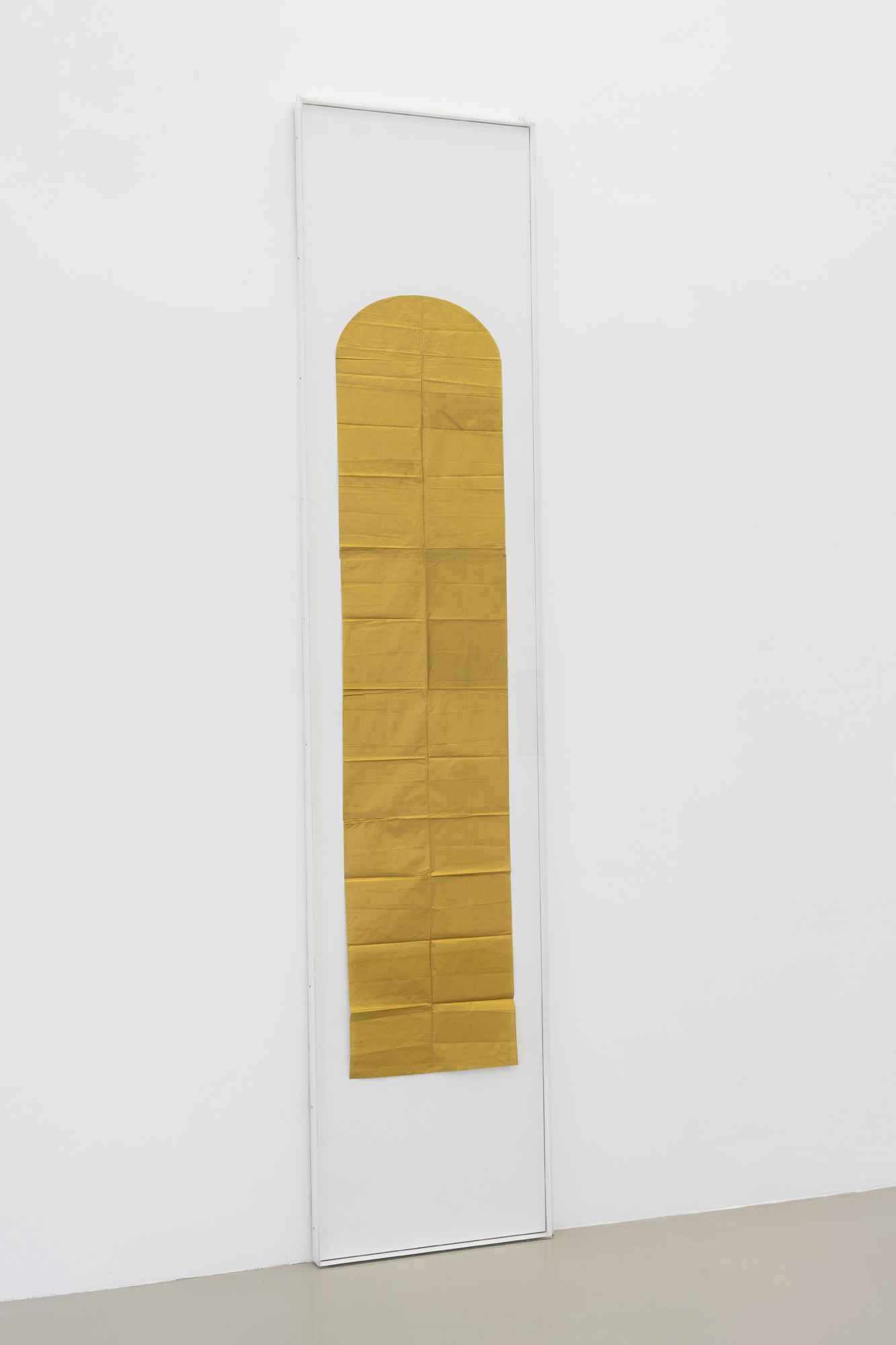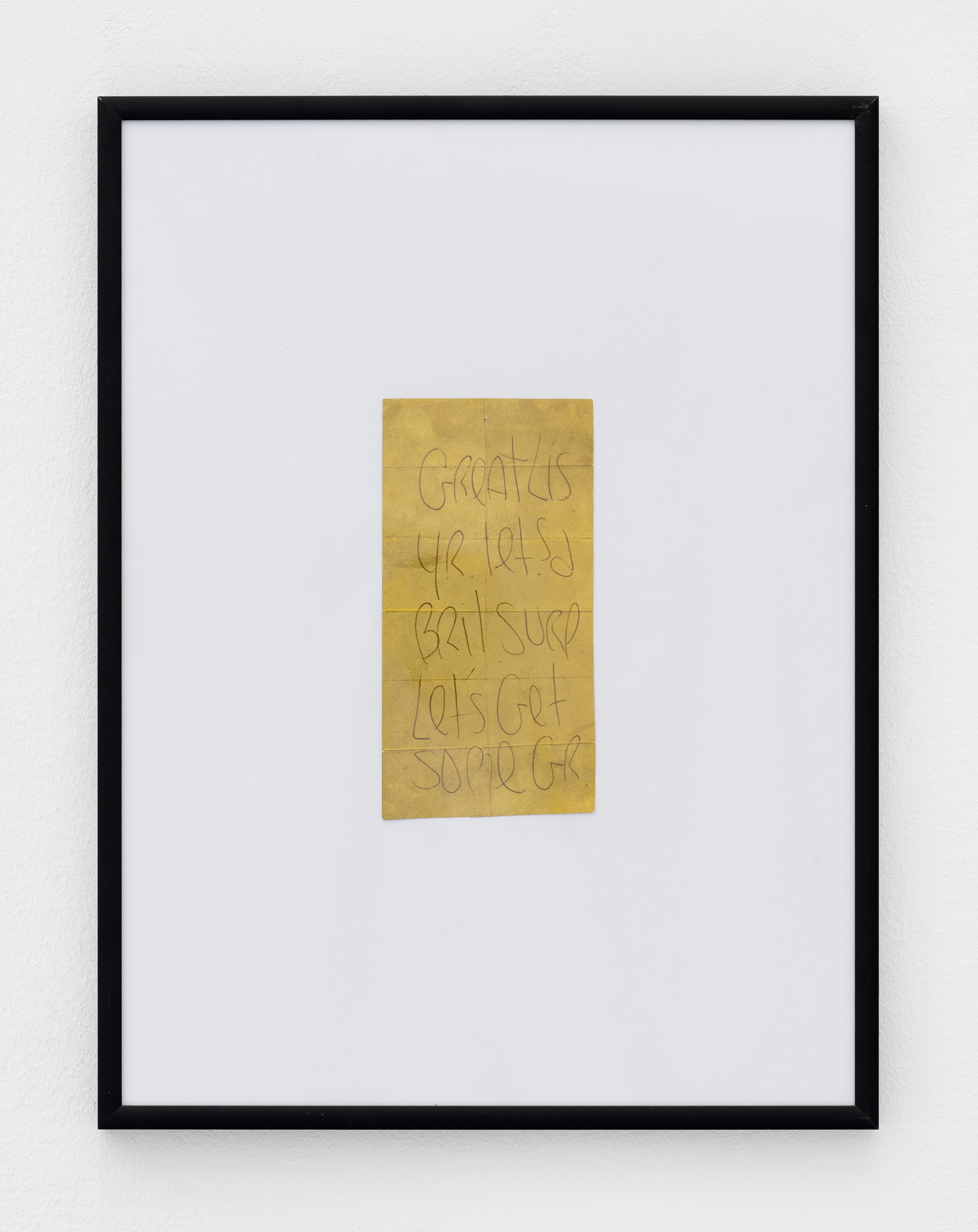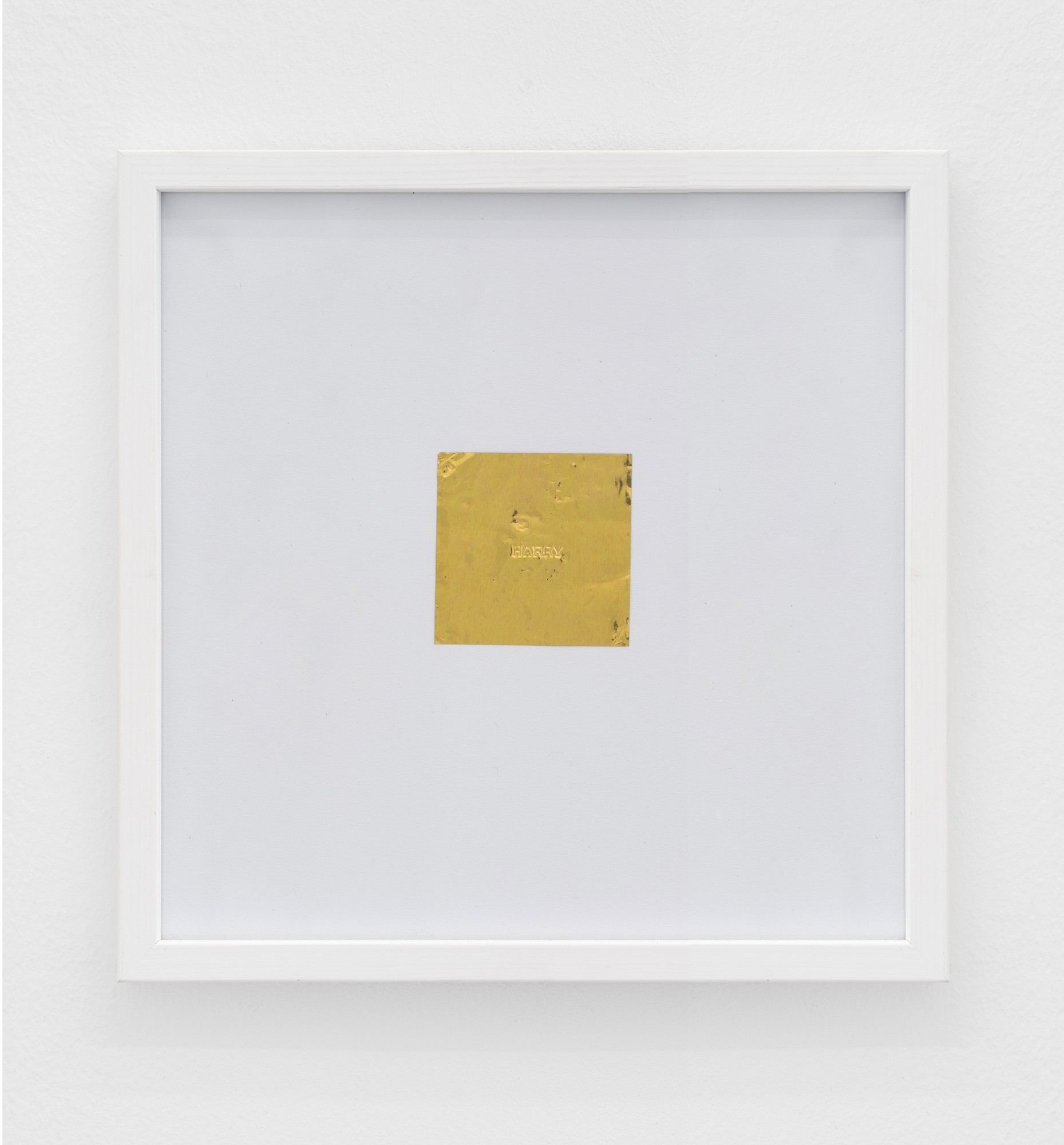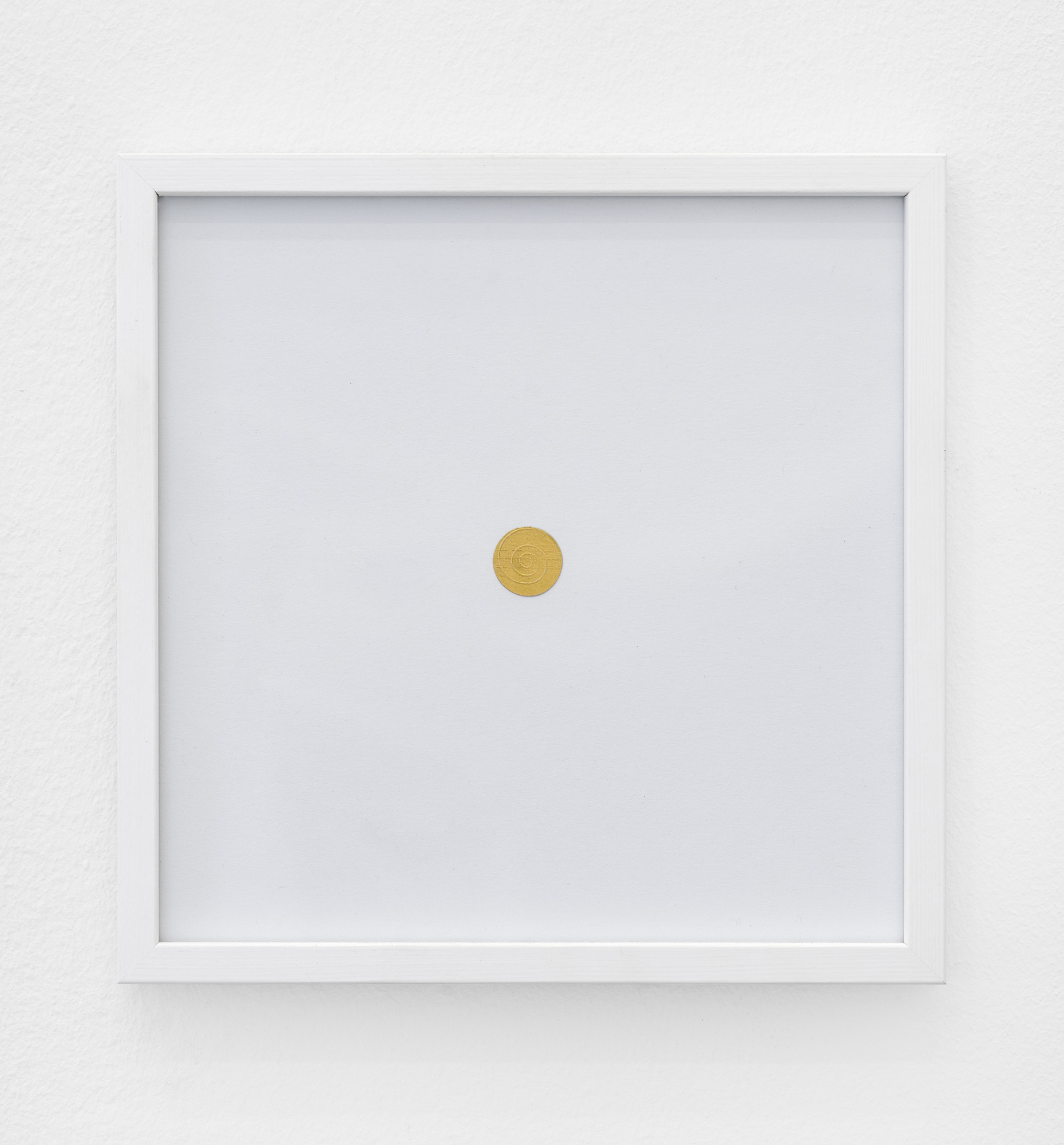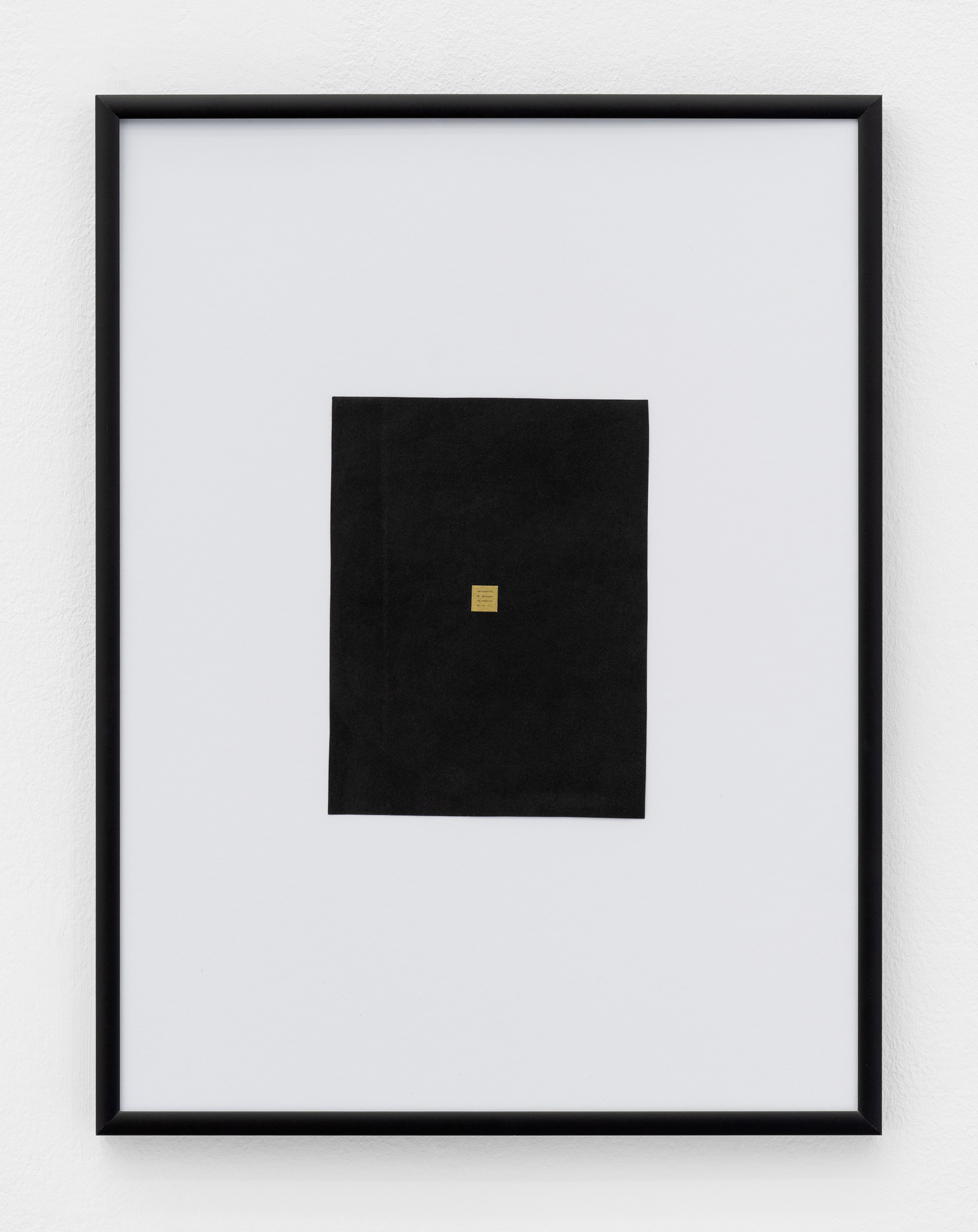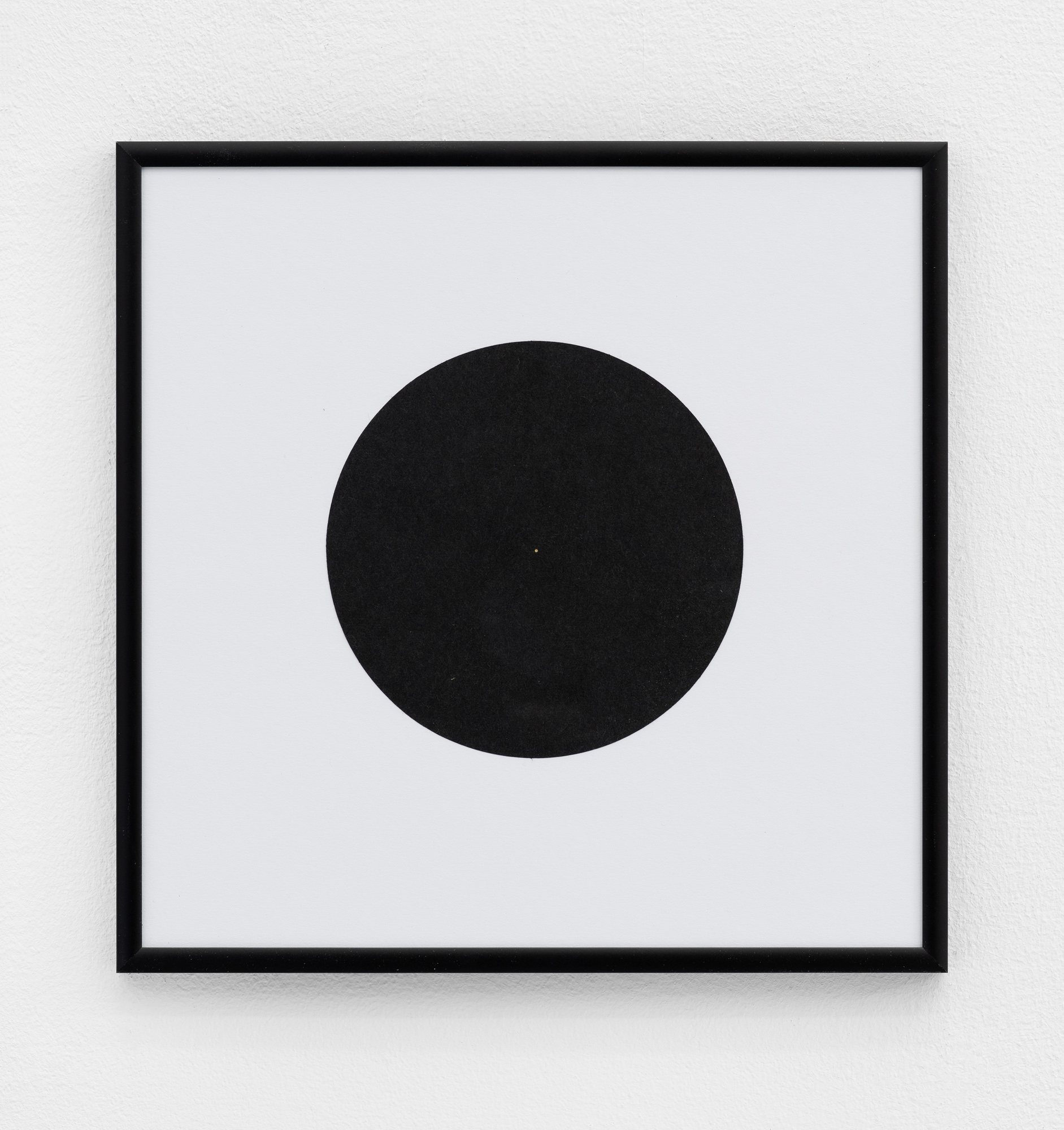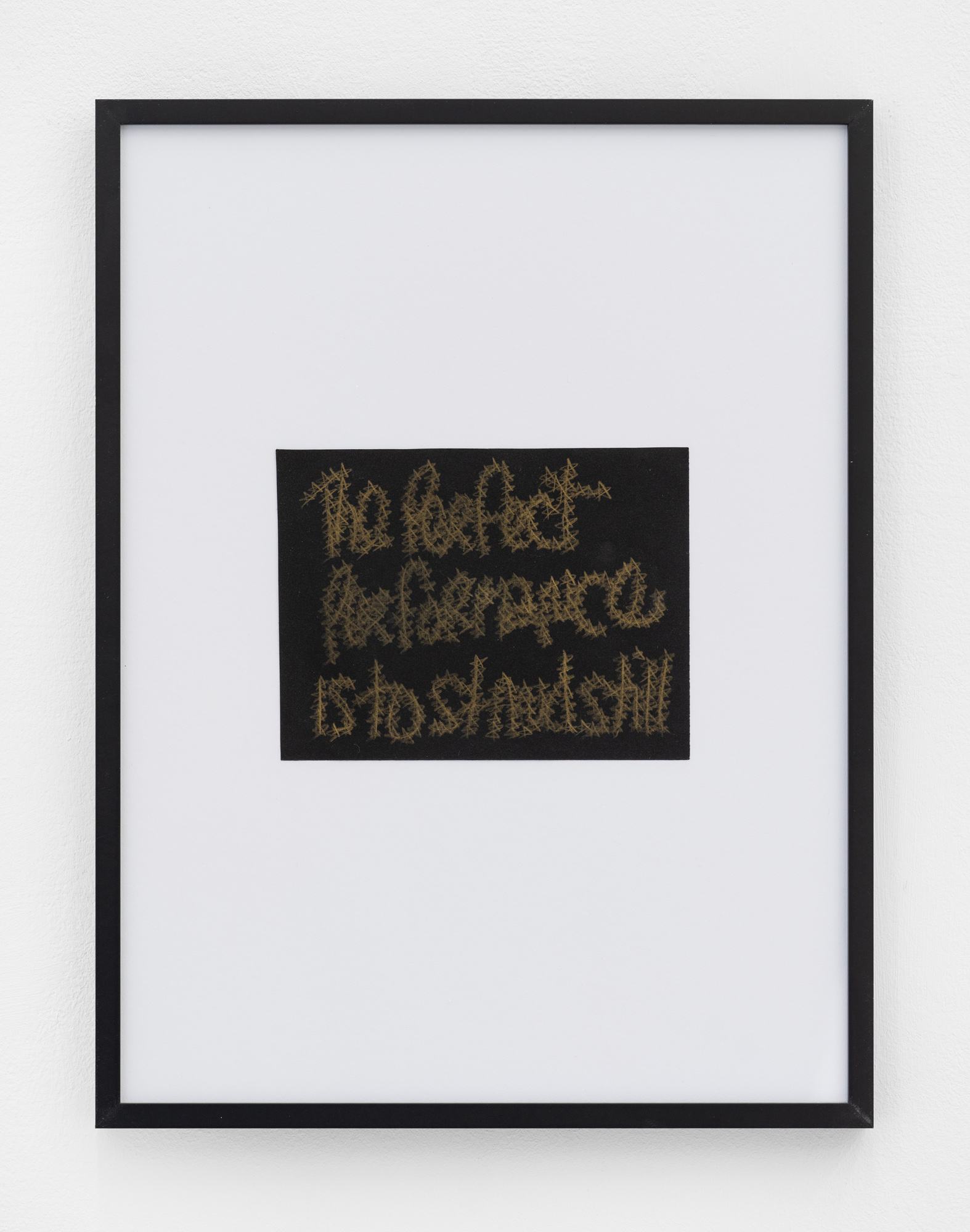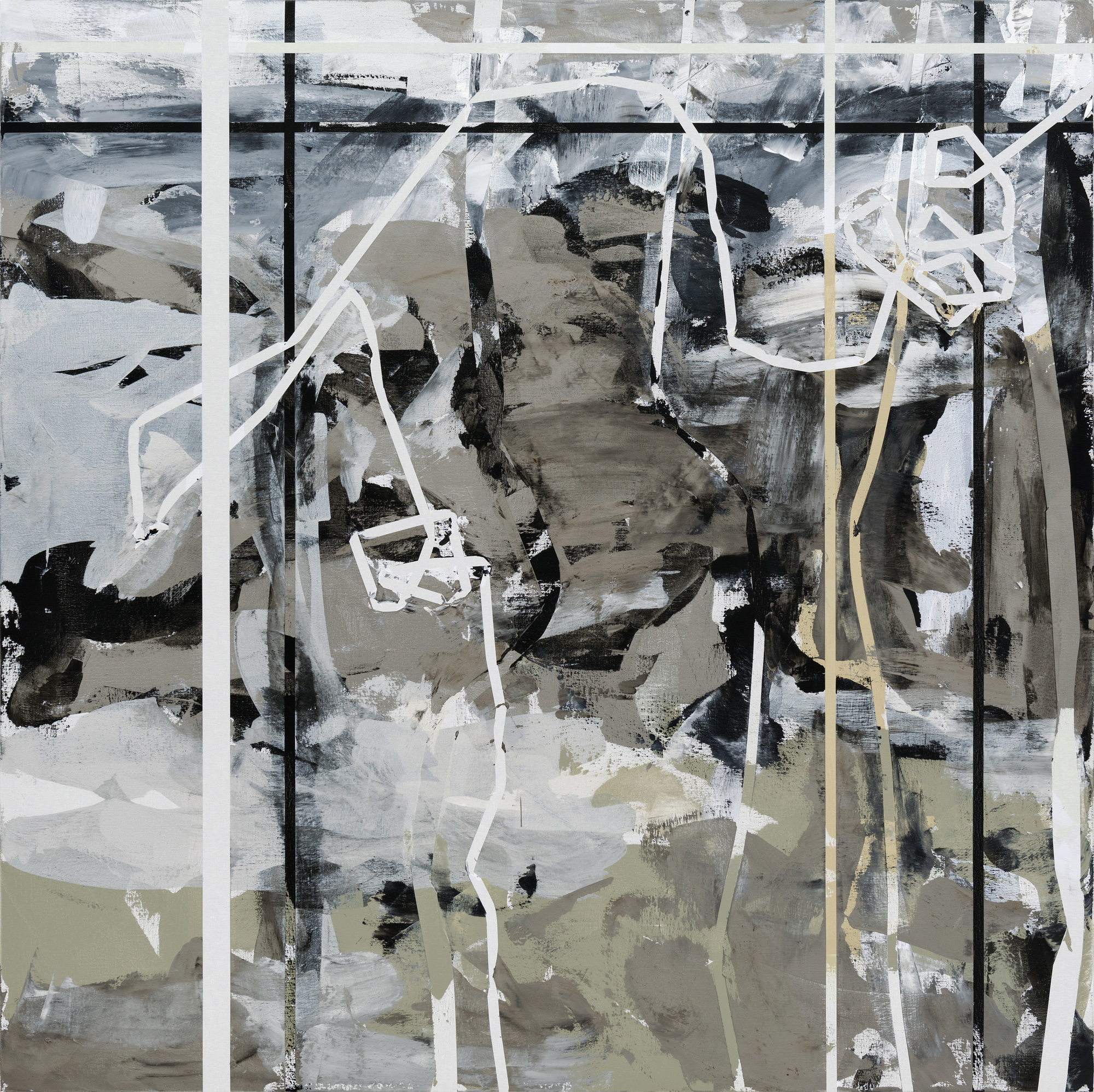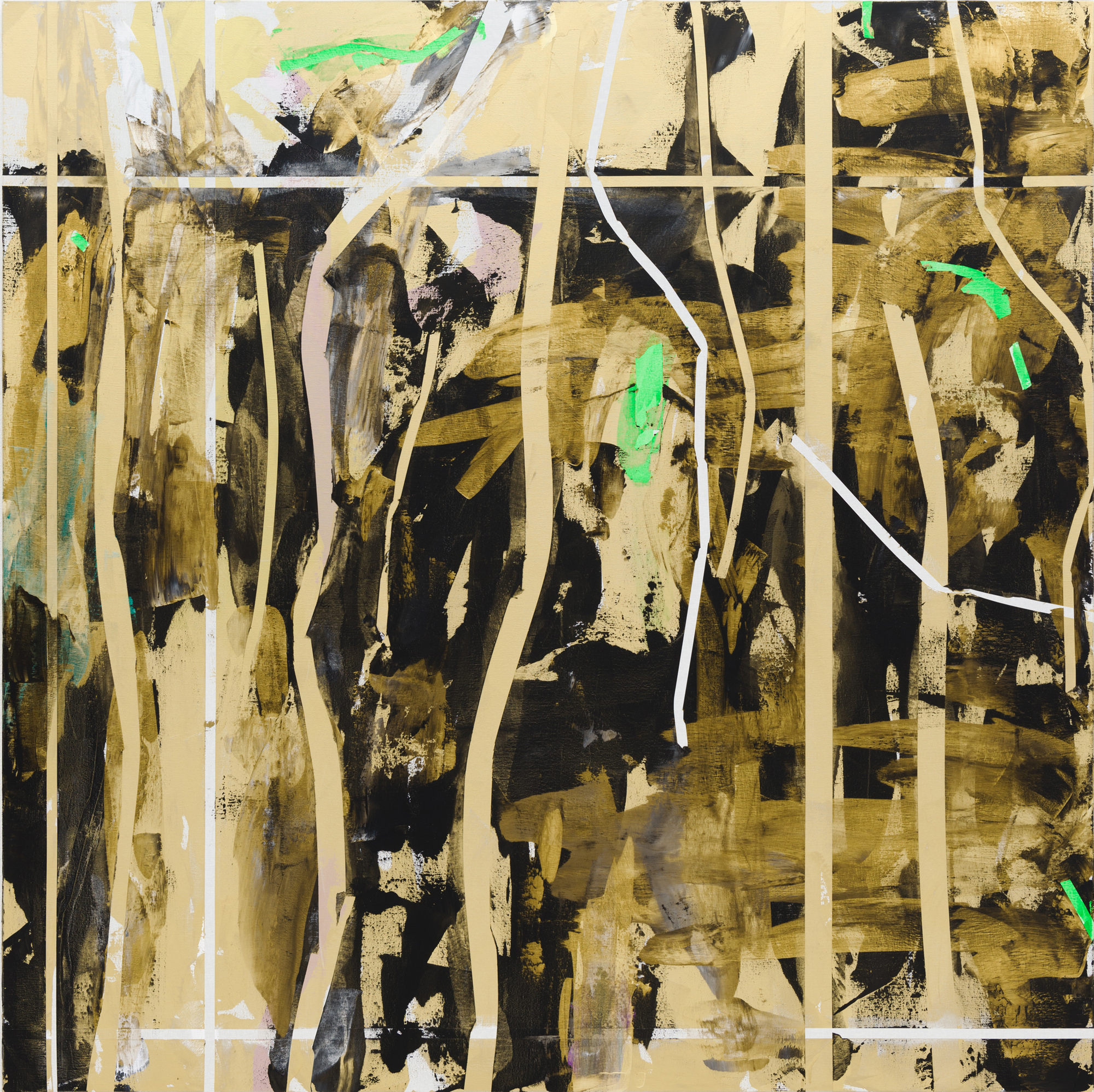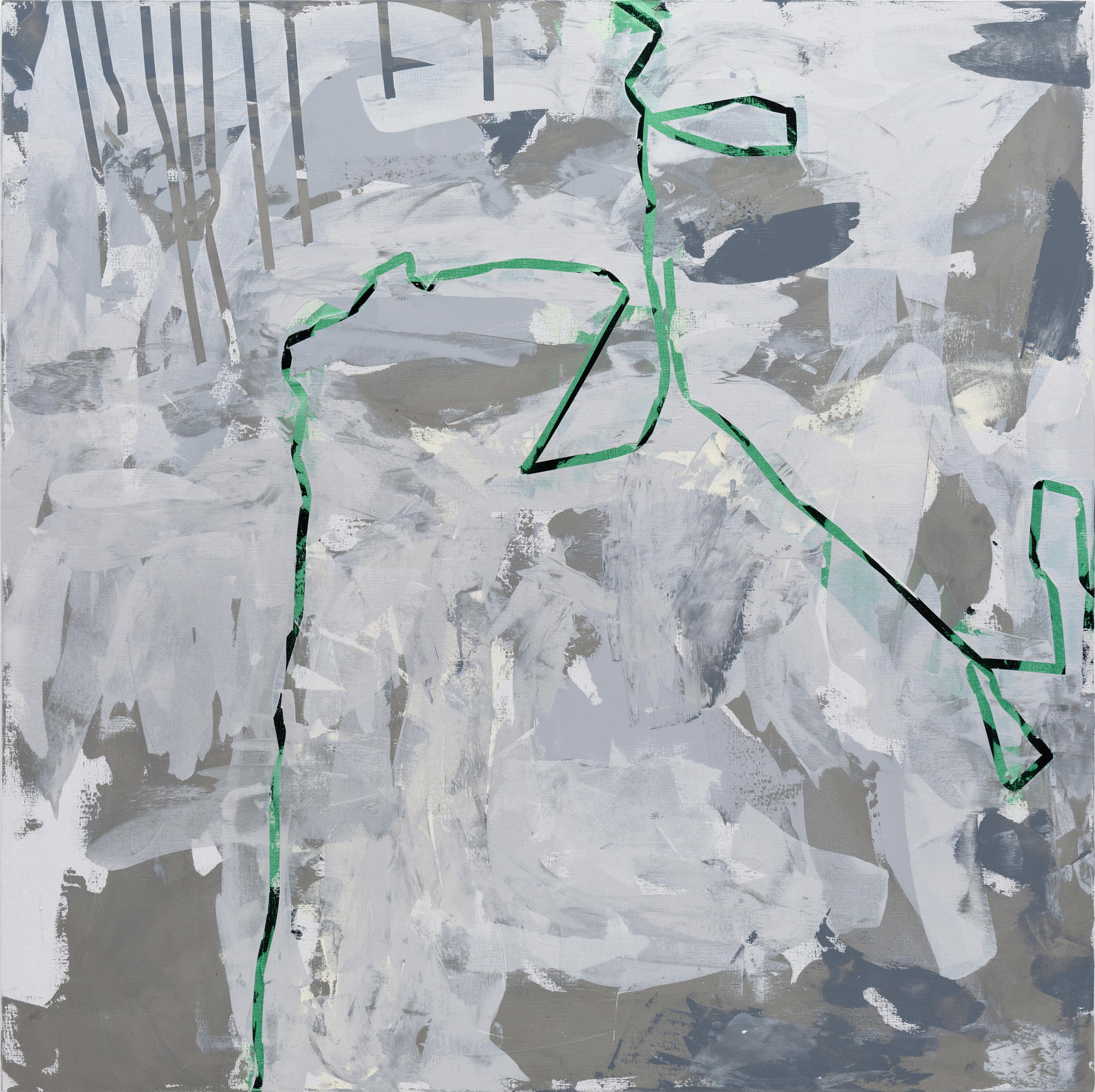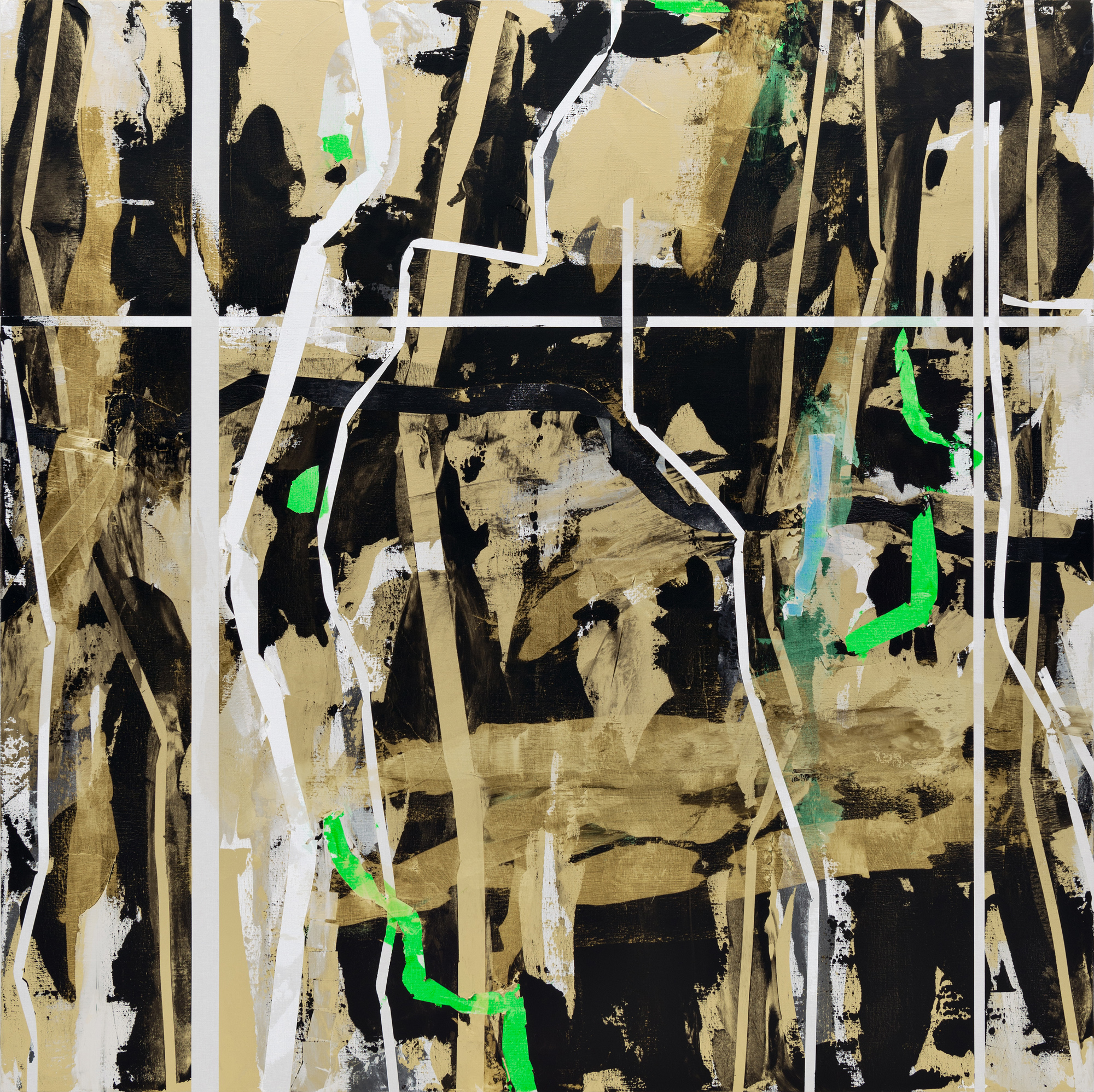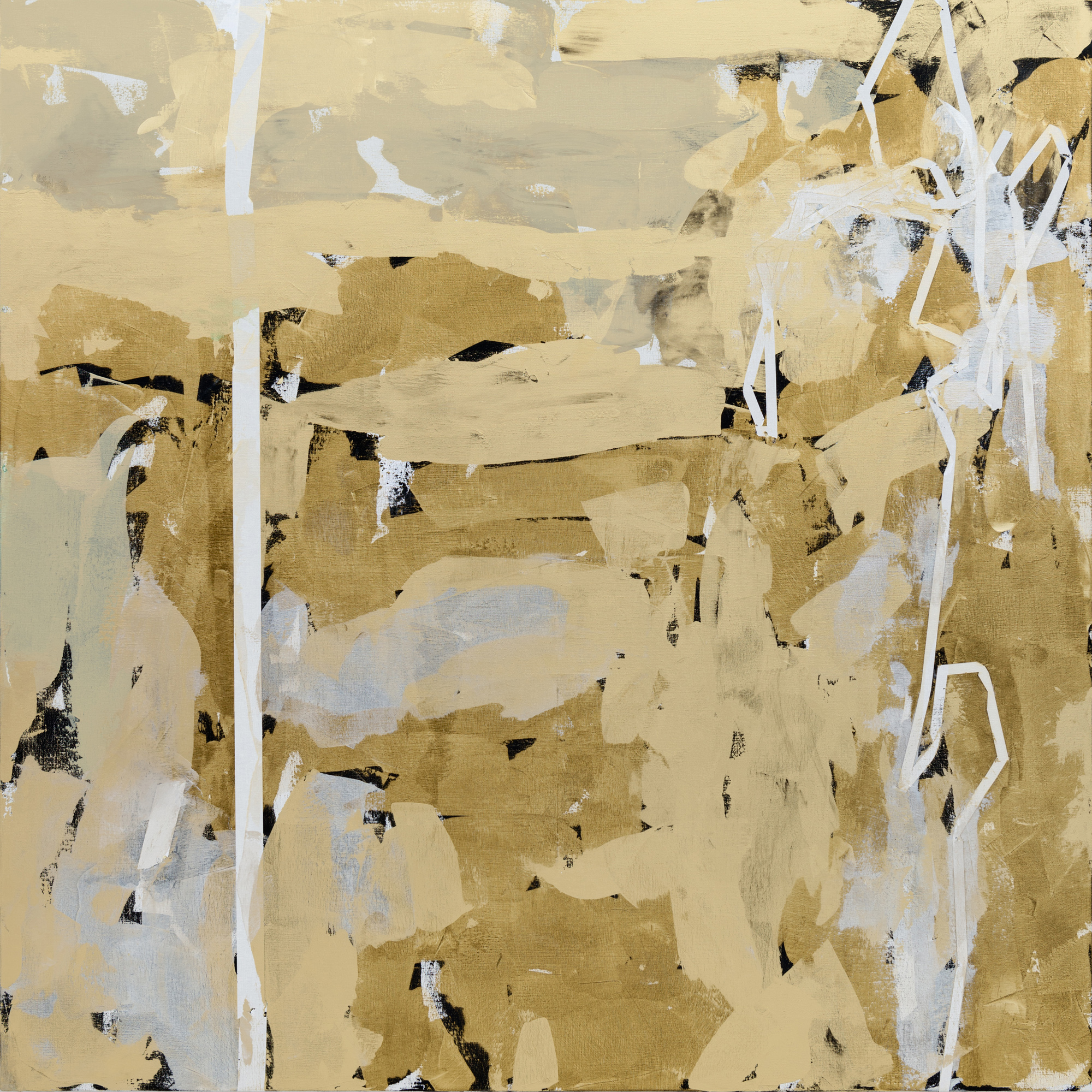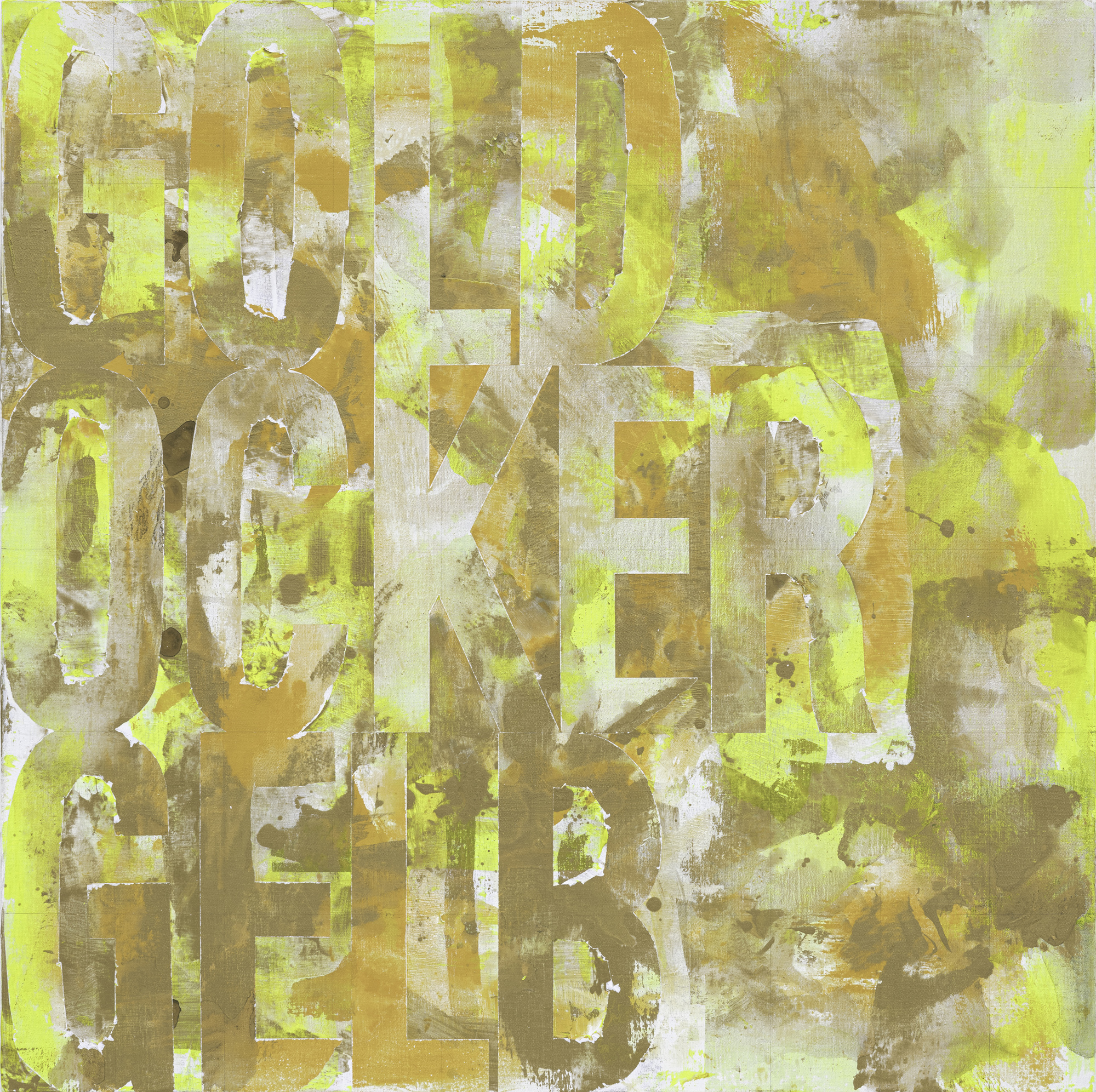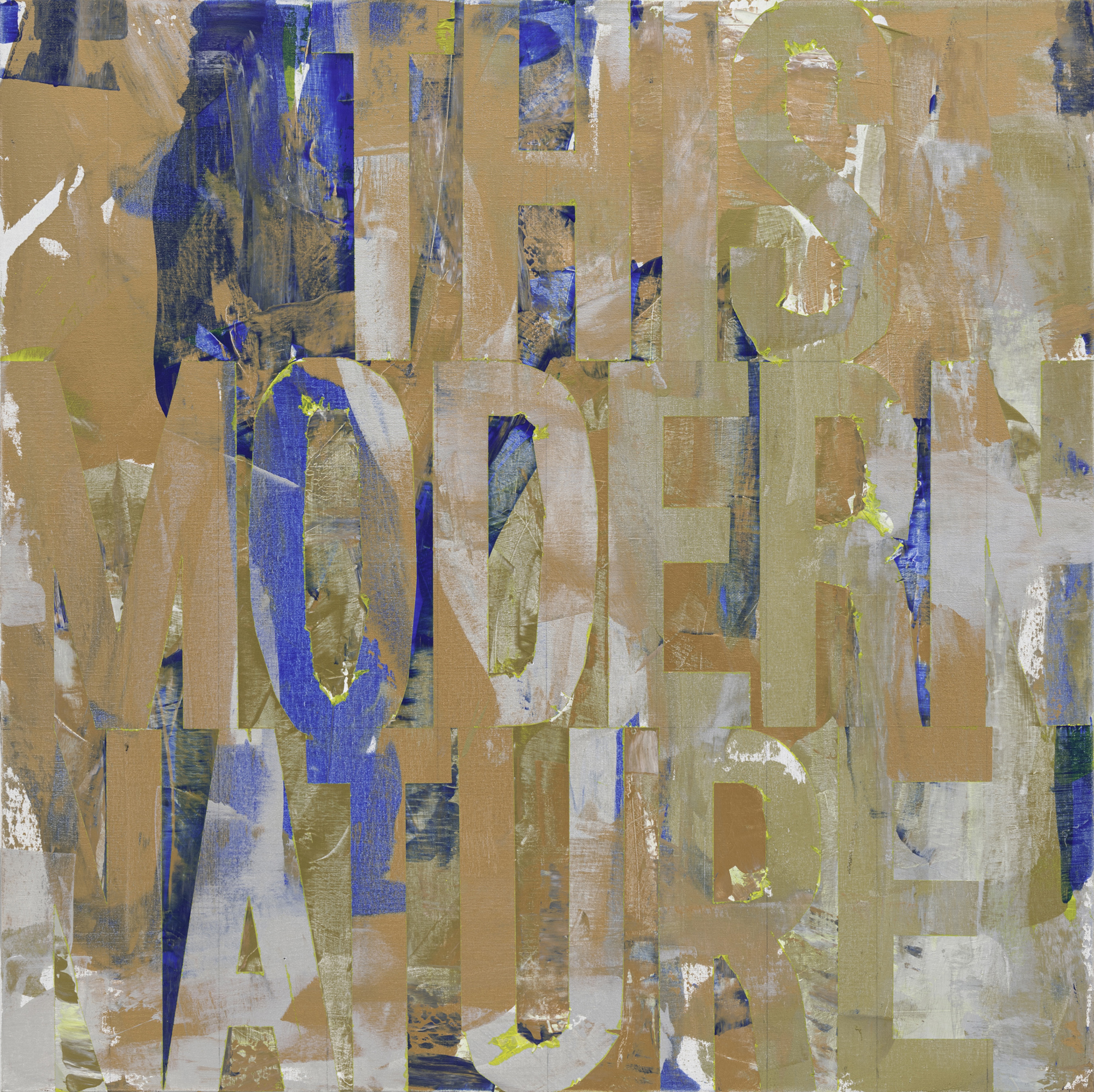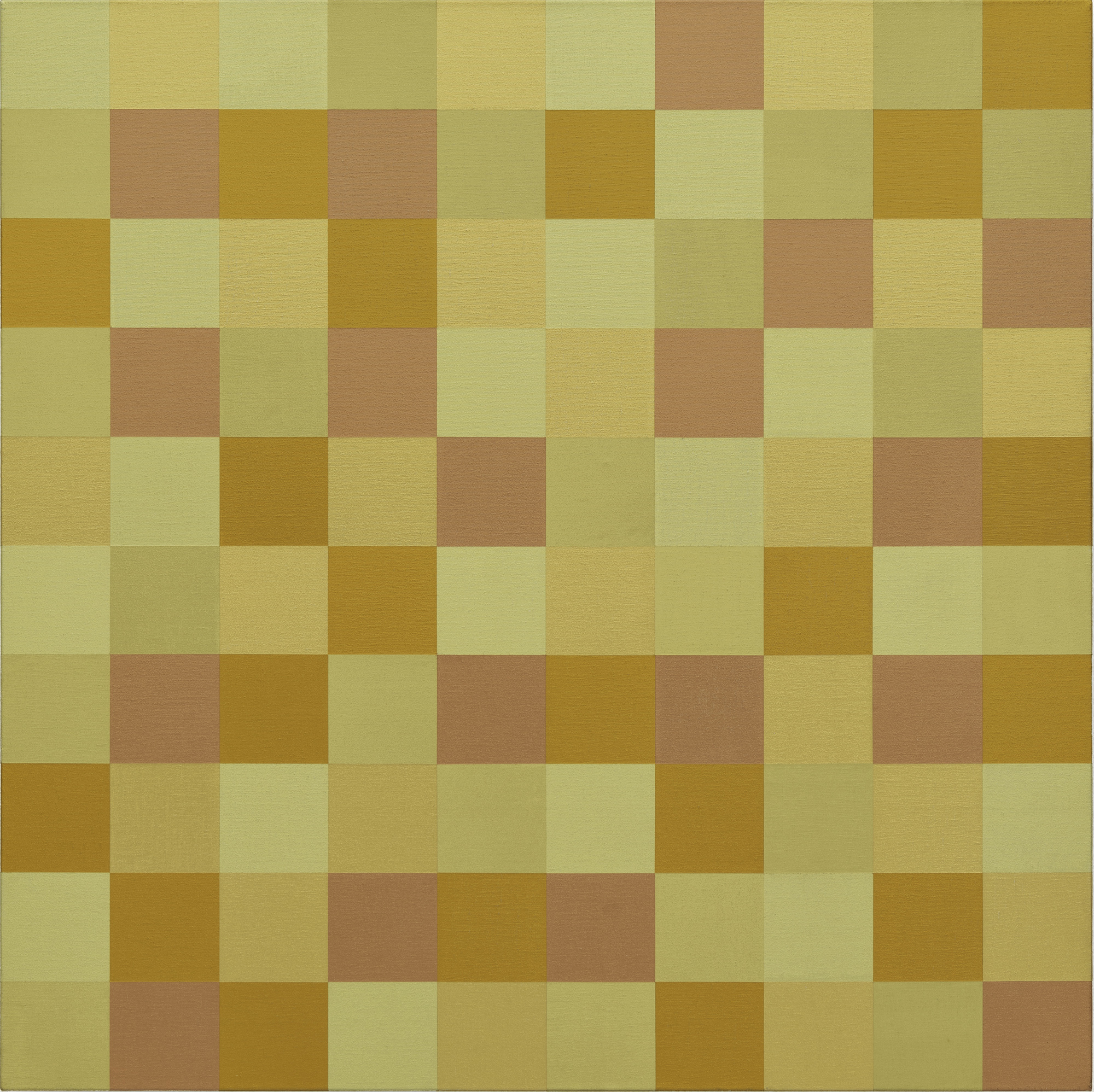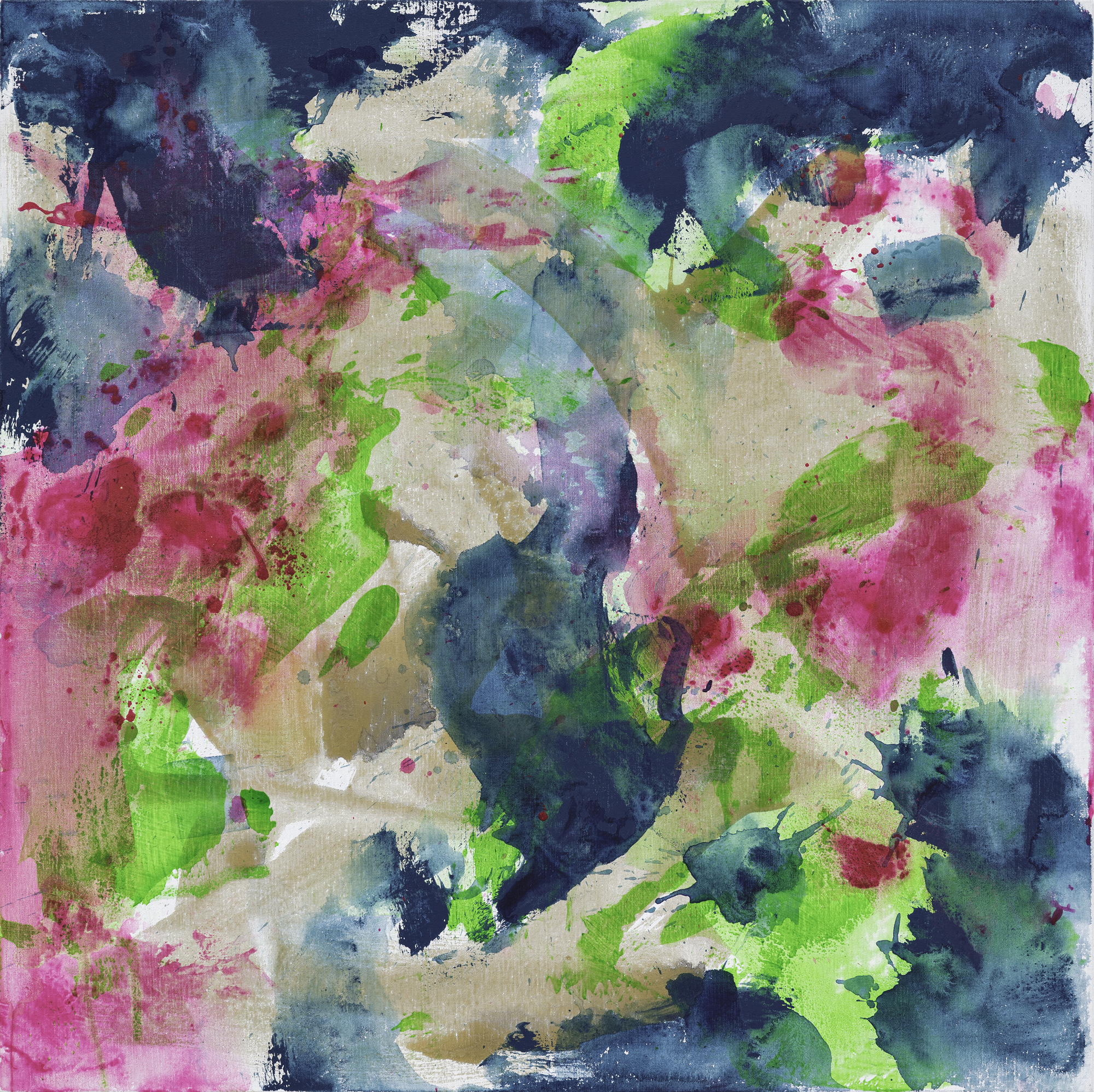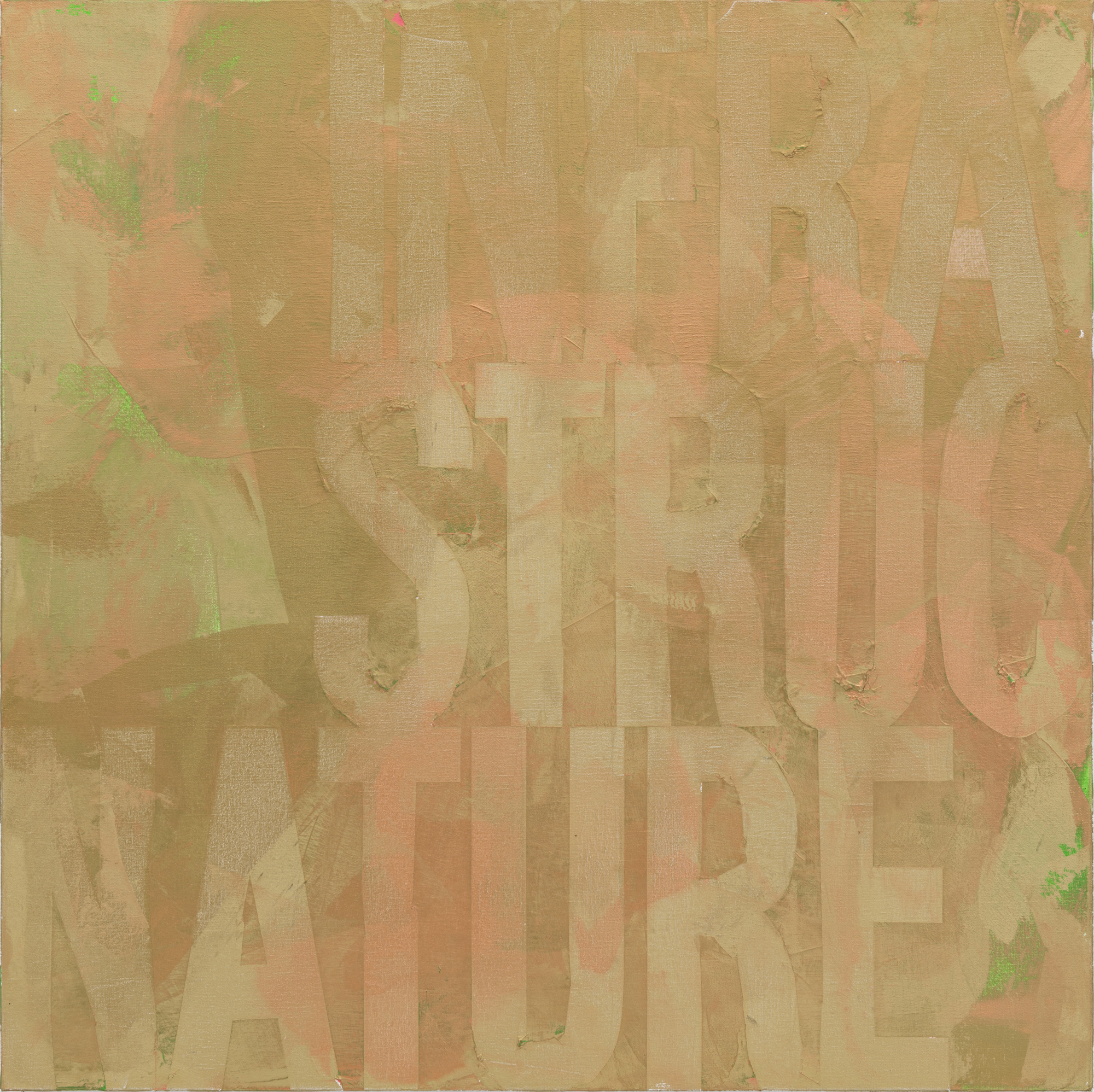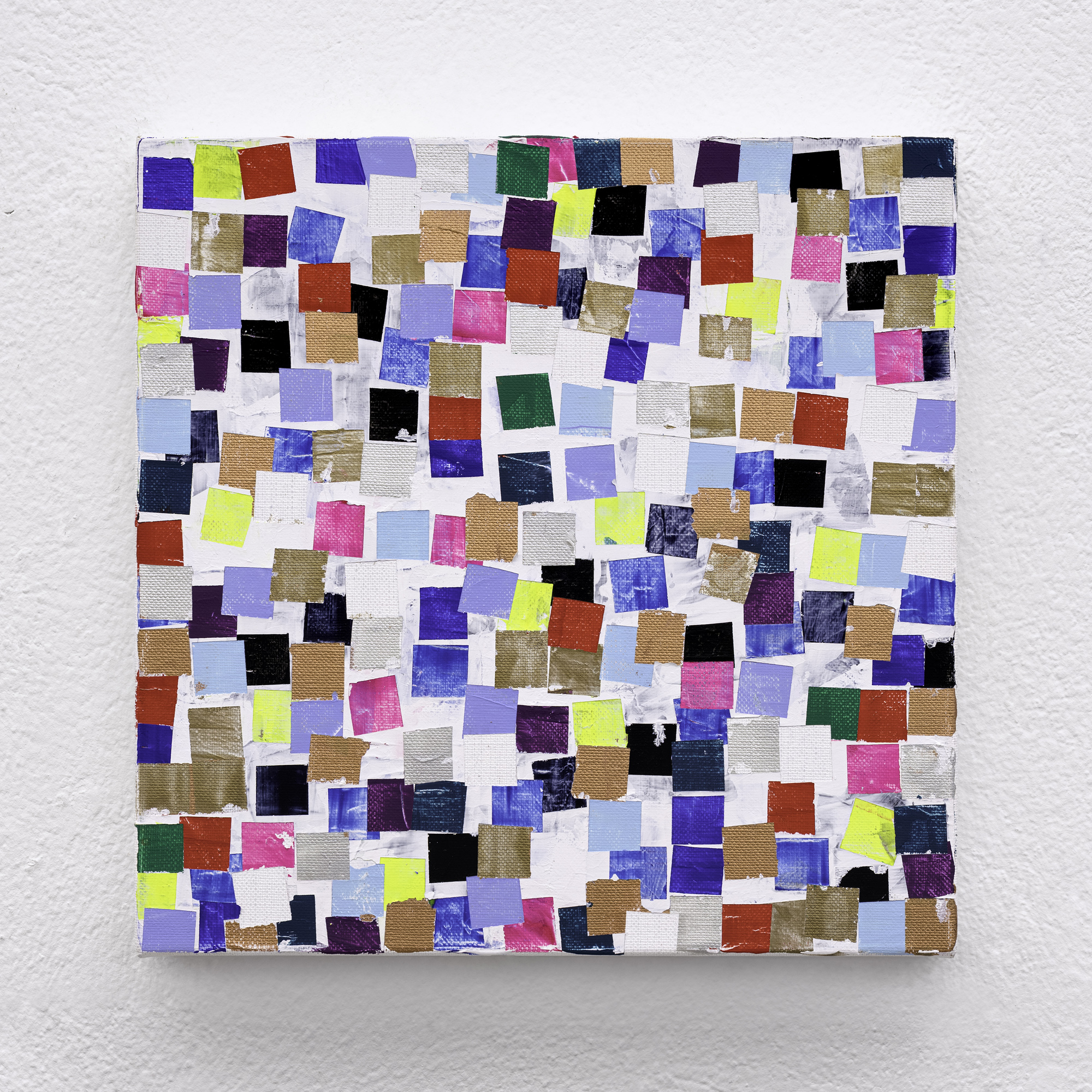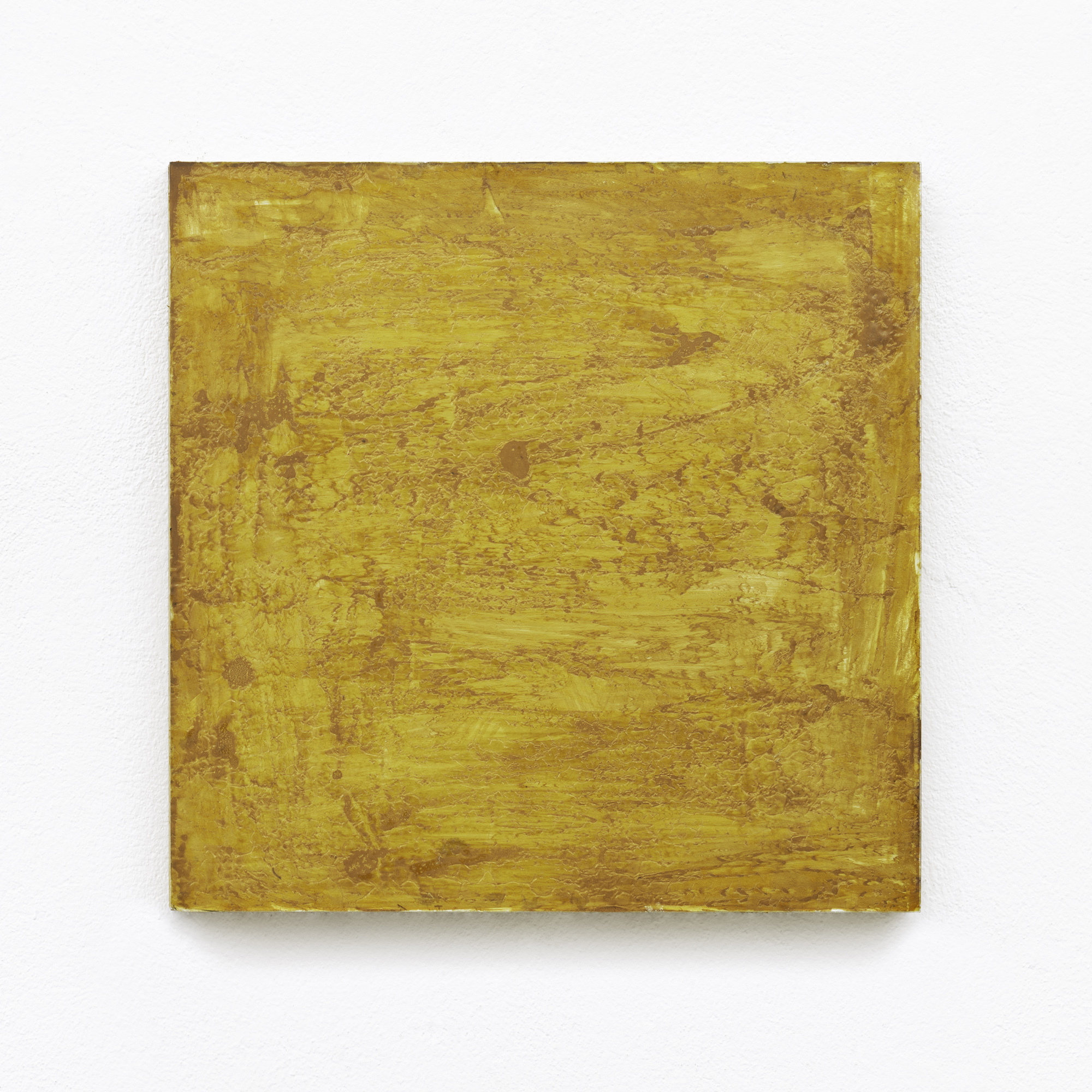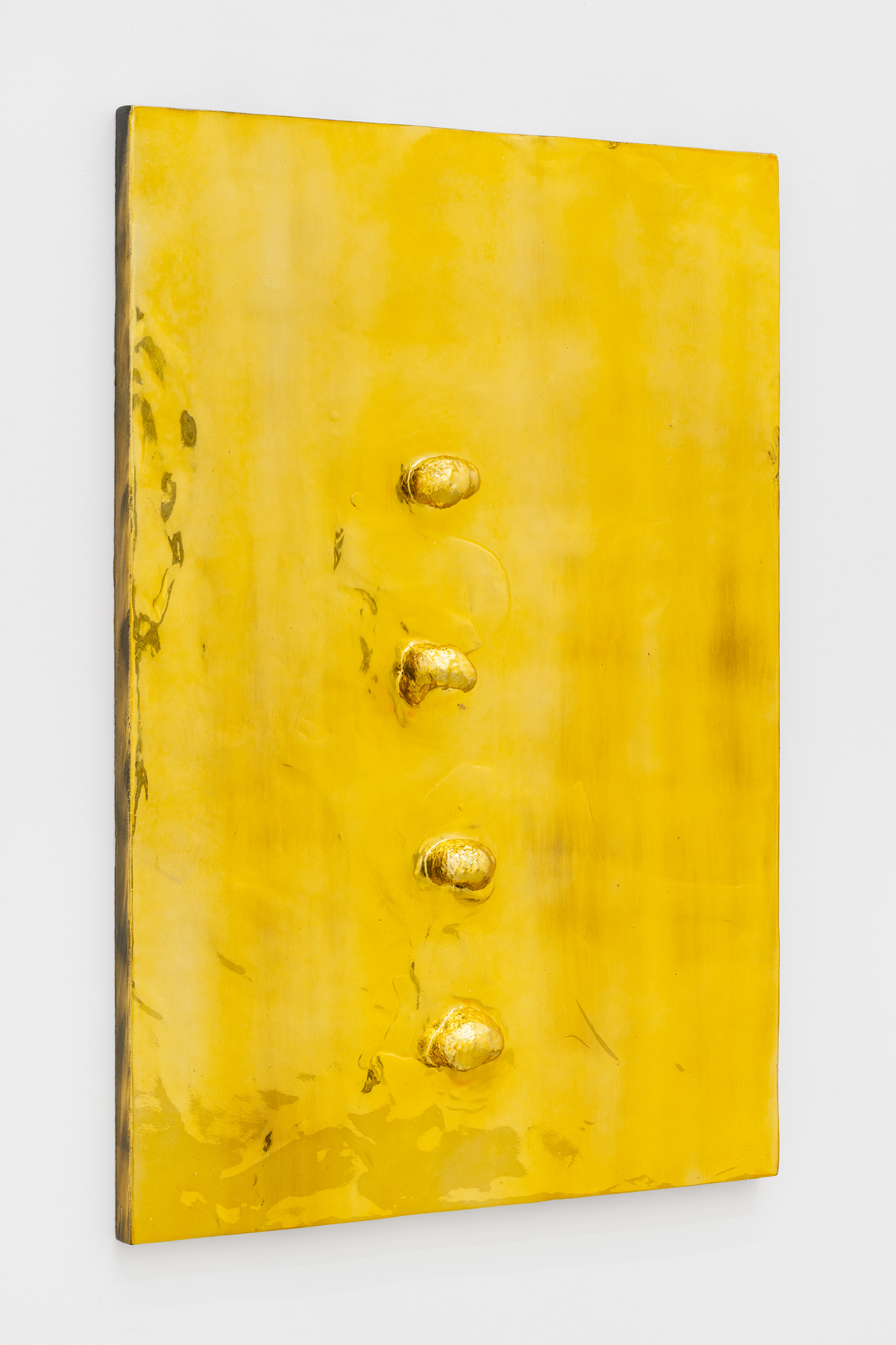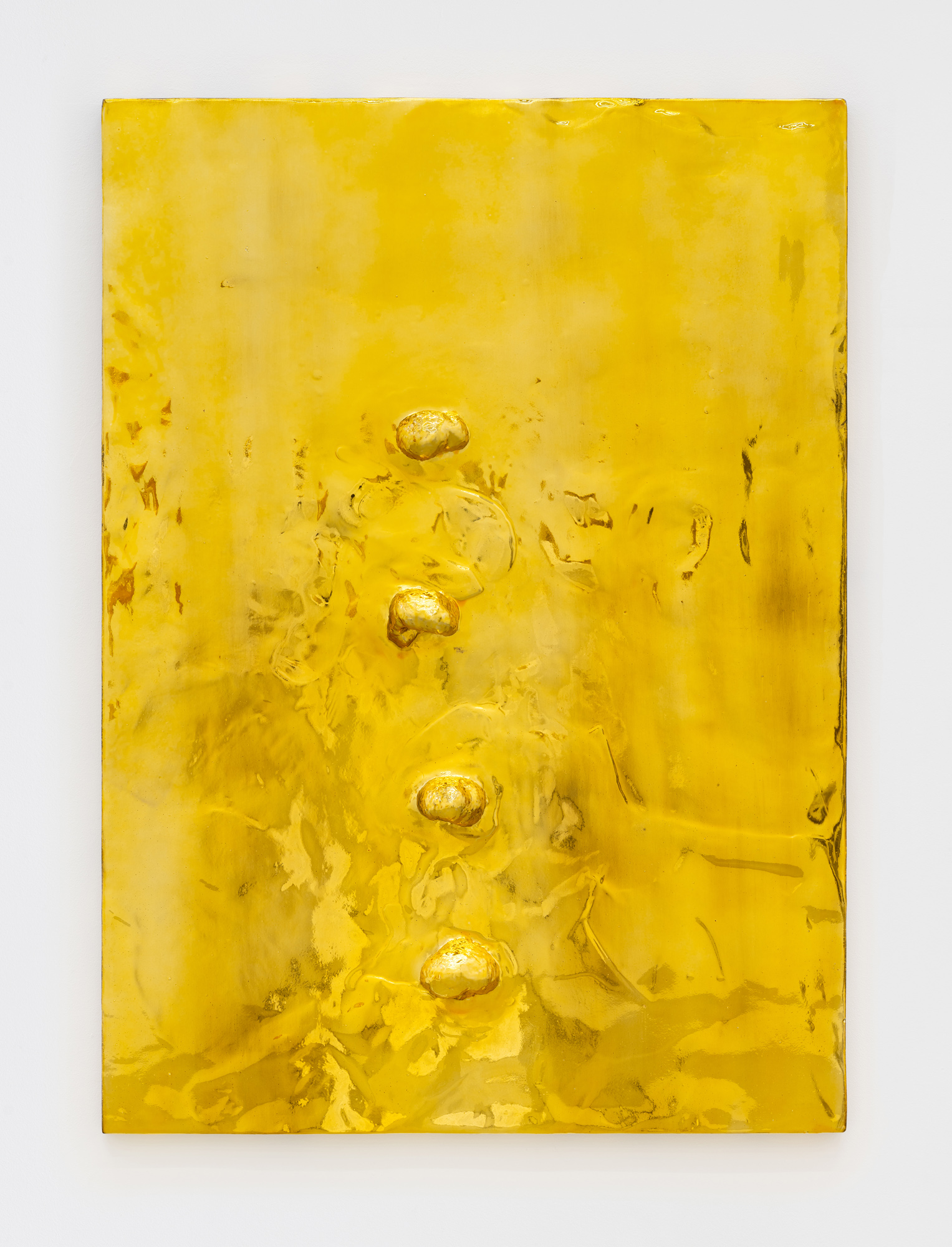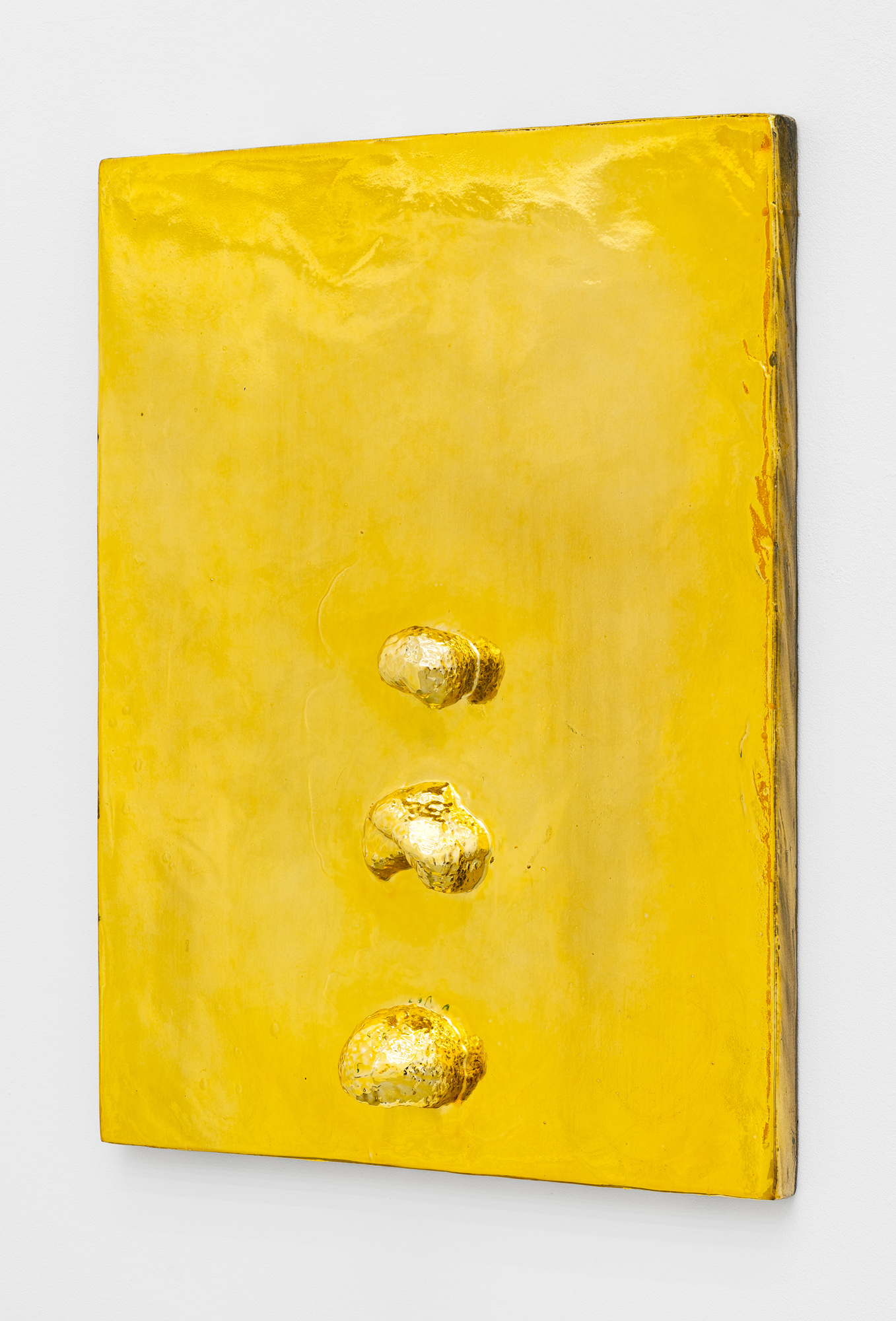MEYER*KAINER curated by Herwig Kempinger
„El Dorado“

www.meyerkainer.com
Curator(s):

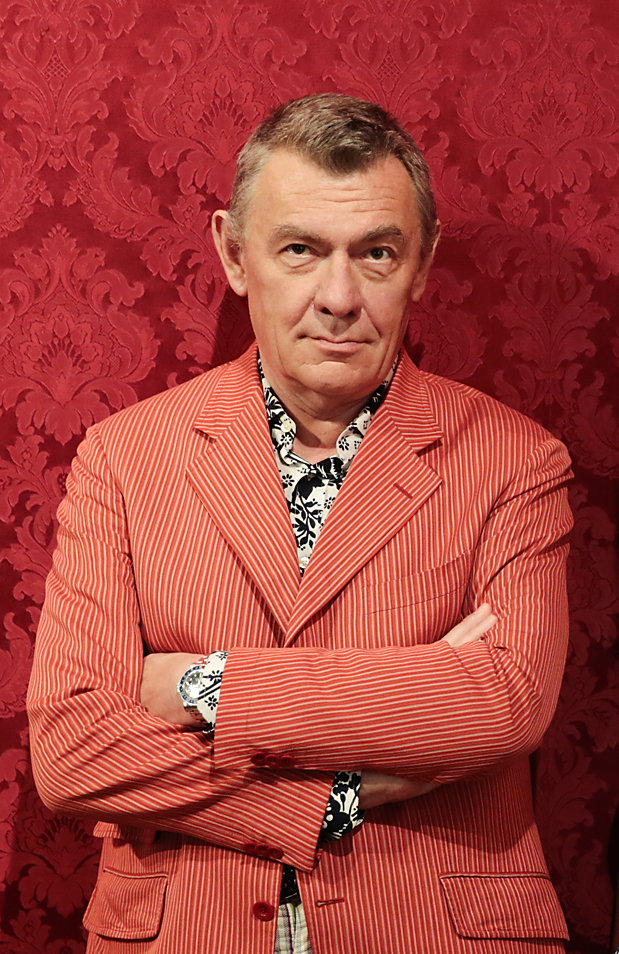
Artist(s):
-
James Lee Byars MoreByars operated at the intersection of Conceptual Art, performance, and spirituality. His practice sought to alter reality through symbolic, often immaterial gestures—such as golden objects, encrypted messages, or ritualistic performances like "The Perfect Kiss". For Byars, gold symbolized transcendence and philosophical inquiry, with his works often deliberately elusive and intentionally opaque.
-
Mathieu Malouf MoreMalouf combines Pop Art, post-capitalist aesthetics, and internet culture. In recent works, he incorporates mushrooms and chemically refined gold. His golden paintings explore themes of reflection and illumination, embodying both artisanal precision and symbolic excess.
-
Franz West MoreIn the 1980s, West repeatedly turned to the material of gold, as seen in works like Freude or Idiosyngramm, which oscillate between psychoanalysis, ornament, and irony. His pieces allude to cultural, psychological, and art-historical meanings, inviting layered associations—even if they often resist rational interpretation.
-
Heimo Zobernig More*1958, lives in Vienna Zobernig ironically links the allure of gold with the banal. His golden chairs parody both the Rococo style and mass production. In his paintings, he uses gold and silver to disrupt classical forms with gestural abstraction. For Zobernig, the process of painting takes precedence over conveying a clear message—his approach is at once free and structured.
-
gelatin MoreThe artist collective gelatin employs humor, provocation, and disgust to challenge societal values. They fuse excrement, art, and gold as symbols of value, taboo, and transformation. Drawing inspiration from Freud and Dada, their installations often lead into absurd, corporeal visual worlds reminiscent of Hieronymus Bosch, deliberately pushing boundaries and embracing transgression.
Exhibition text
More
Modern society leads to self-alienation and fragmented identity, which manifests in a limited mode of thinking that often rejects new ideas. As traditional religions recede, new moral and spiritual systems take on the role of meaning-making. In this context, gold has reemerged as an artistic material—symbolizing materialism, power, and transformation.
Artists of the 20th century reinterpreted gold, often as an expression of infinity or as a critique of societal values. Brancusi’s Endless Column, for instance, explores the infinite through form and material. At documenta 7 (1982), this renewed interest in gold became particularly visible, with works by artists such as Byars, Kounellis, Beuys, Horn, and Fabro.
Gold has long symbolized power—from ancient god-kings to Donald Trump’s vision of turning Gaza into a “golden Riviera.” Artists like Piero Manzoni and the collective gelatin approach the alchemical idea of transforming the base (such as excrement) into something valuable with irony—thereby questioning art, value, and transformation.
James Lee Byars
Byars operated at the intersection of Conceptual Art, performance, and spirituality. His practice sought to alter reality through symbolic, often immaterial gestures—such as golden objects, encrypted messages, or ritualistic performances like The Perfect Kiss. For Byars, gold symbolized transcendence and philosophical inquiry, with his works often deliberately elusive and intentionally opaque.
Heimo Zobernig
Zobernig ironically links the allure of gold with the banal. His golden chairs parody both the Rococo style and mass production. In his paintings, he uses gold and silver to disrupt classical forms with gestural abstraction. For Zobernig, the process of painting takes precedence over conveying a clear message—his approach is at once free and structured.
Franz West
In the 1980s, West repeatedly turned to the material of gold, as seen in works like Freude or Idiosyngramm, which oscillate between psychoanalysis, ornament, and irony. His pieces allude to cultural, psychological, and art-historical meanings, inviting layered associations—even if they often resist rational interpretation.
Mathieu Malouf
Malouf combines Pop Art, post-capitalist aesthetics, and internet culture. In recent works, he incorporates mushrooms and chemically refined gold. His golden paintings explore themes of reflection and illumination, embodying both artisanal precision and symbolic excess.
gelatin
The artist collective gelatin employs humor, provocation, and disgust to challenge societal values. They fuse excrement, art, and gold as symbols of value, taboo, and transformation. Drawing inspiration from Freud and Dada, their installations often lead into absurd, corporeal visual worlds reminiscent of Hieronymus Bosch, deliberately pushing boundaries and embracing transgression.

